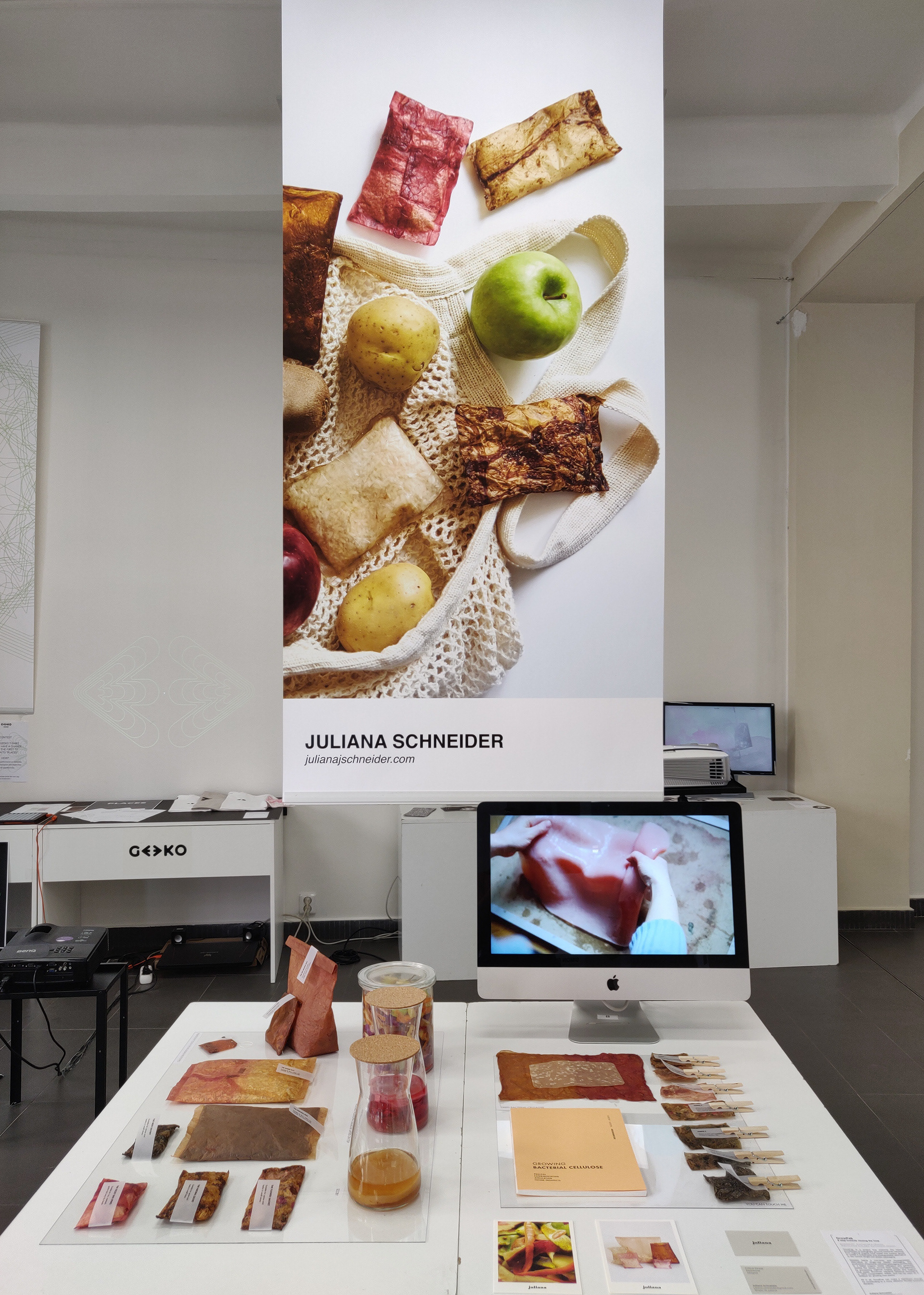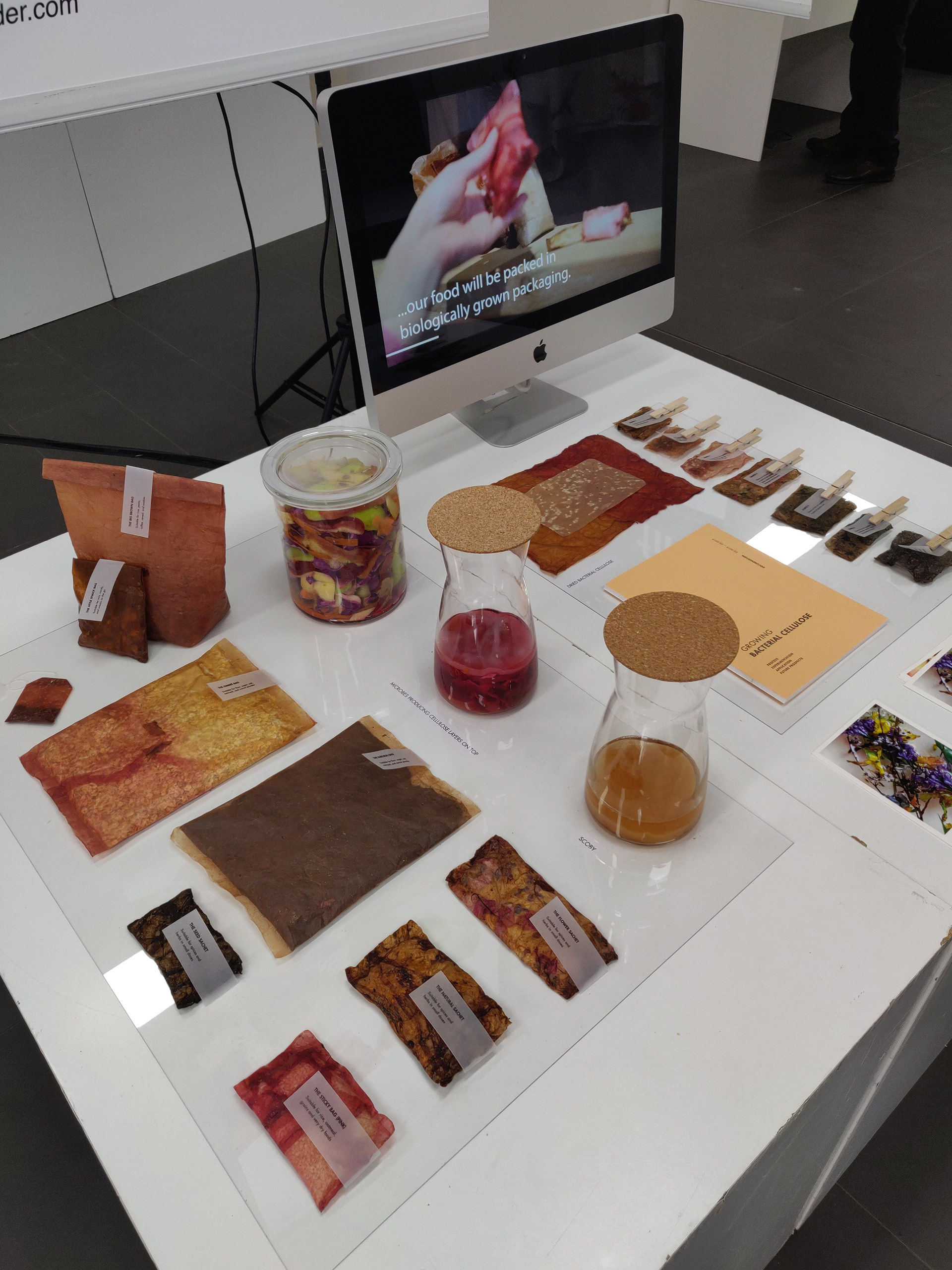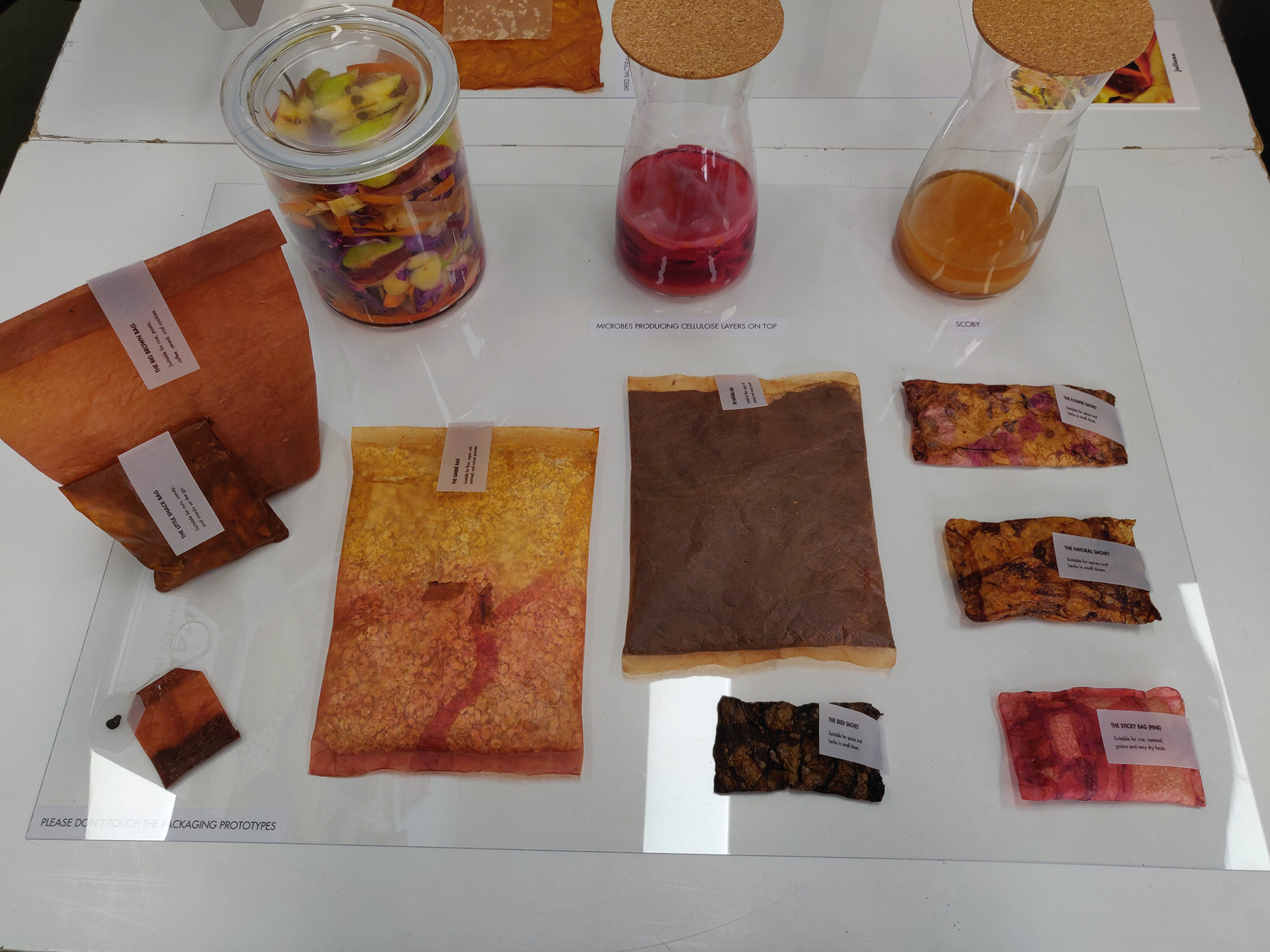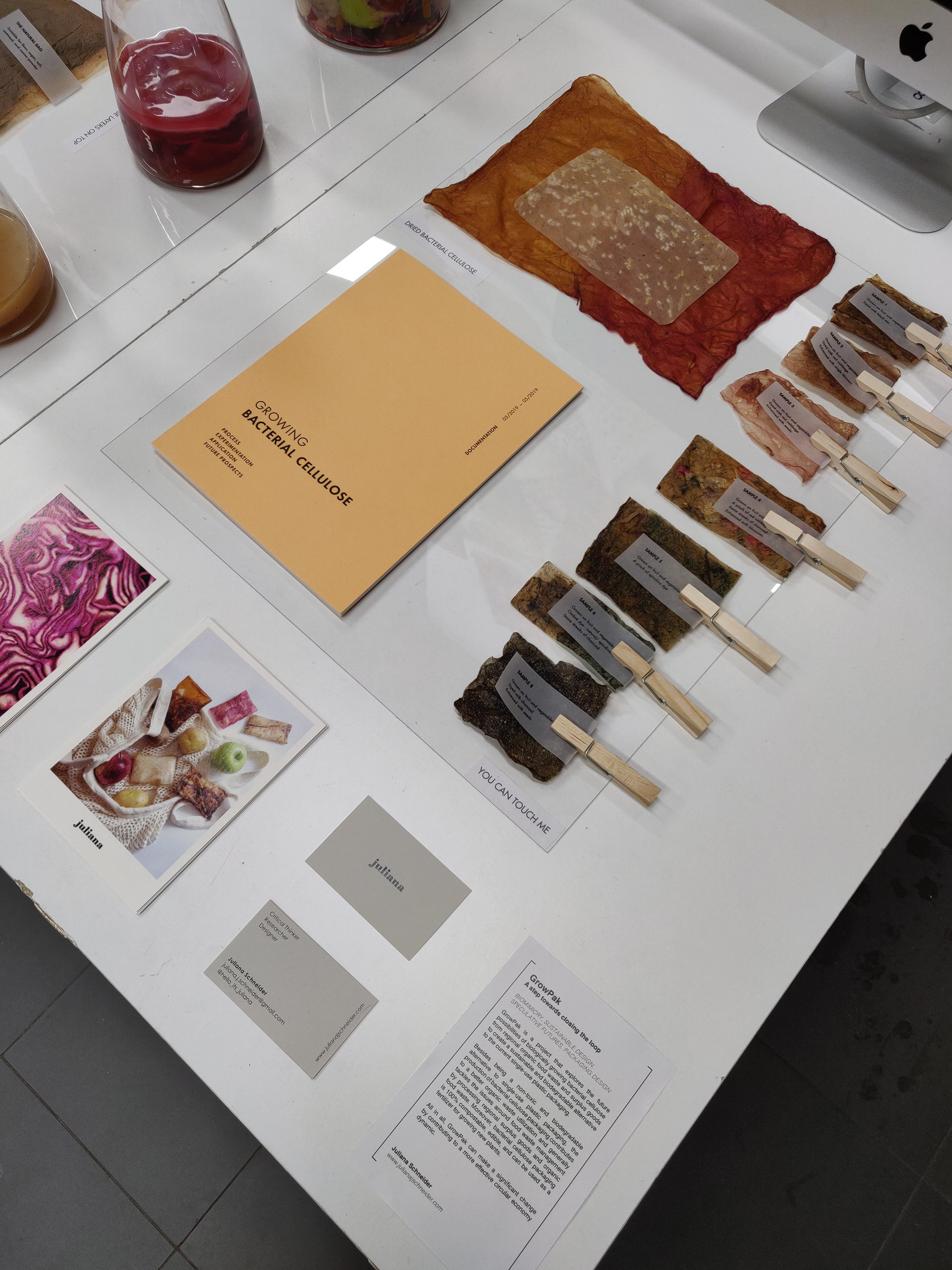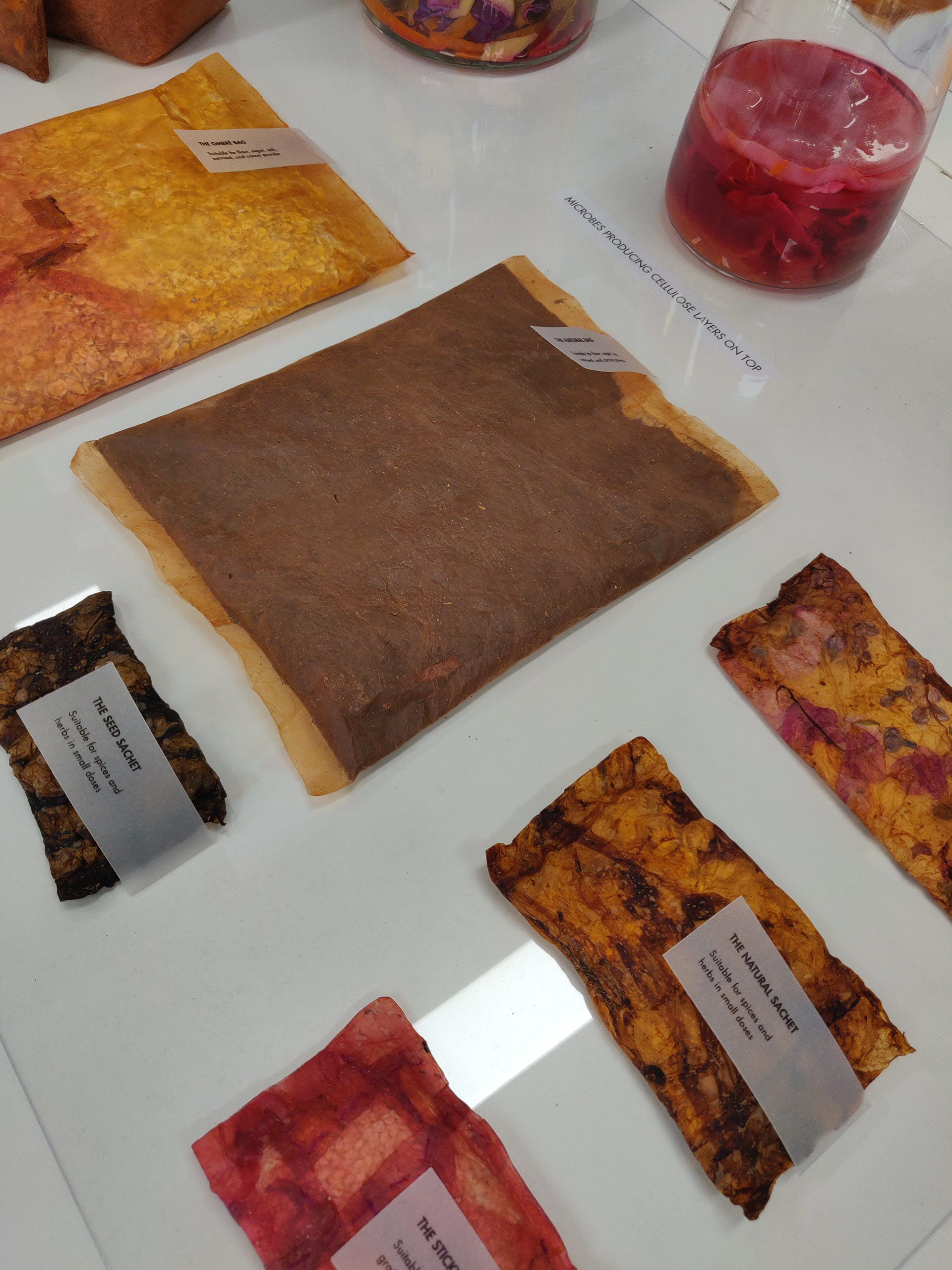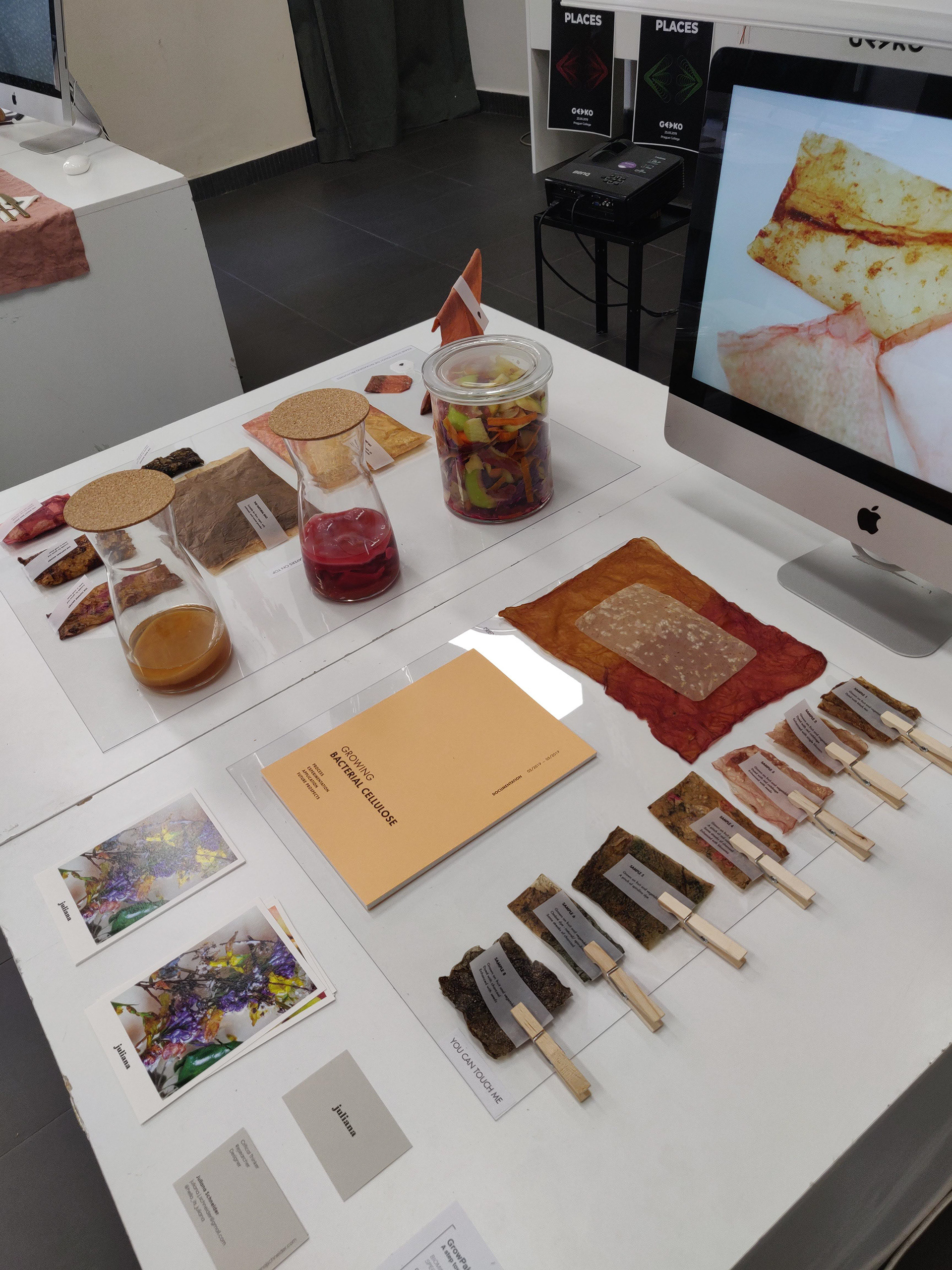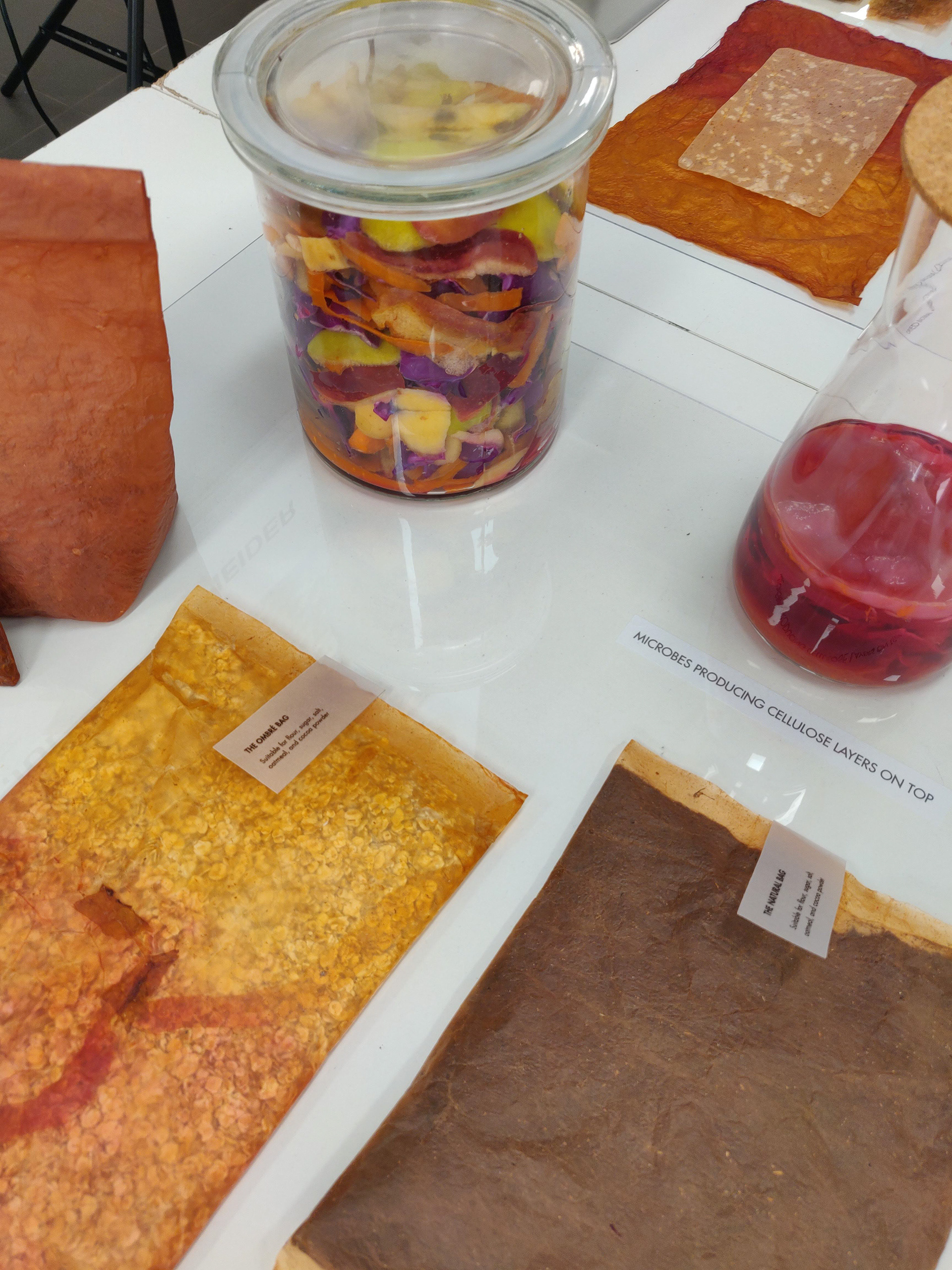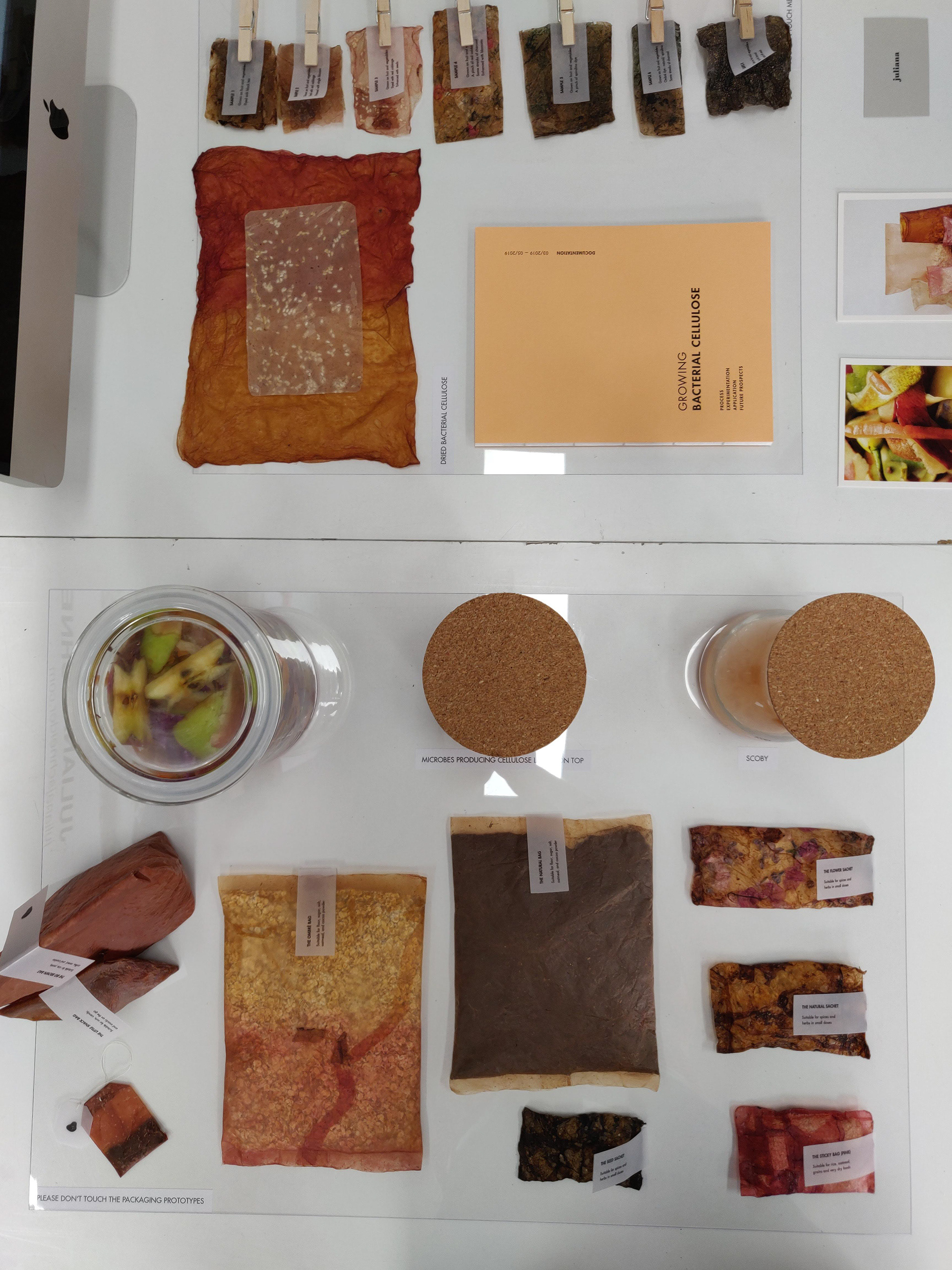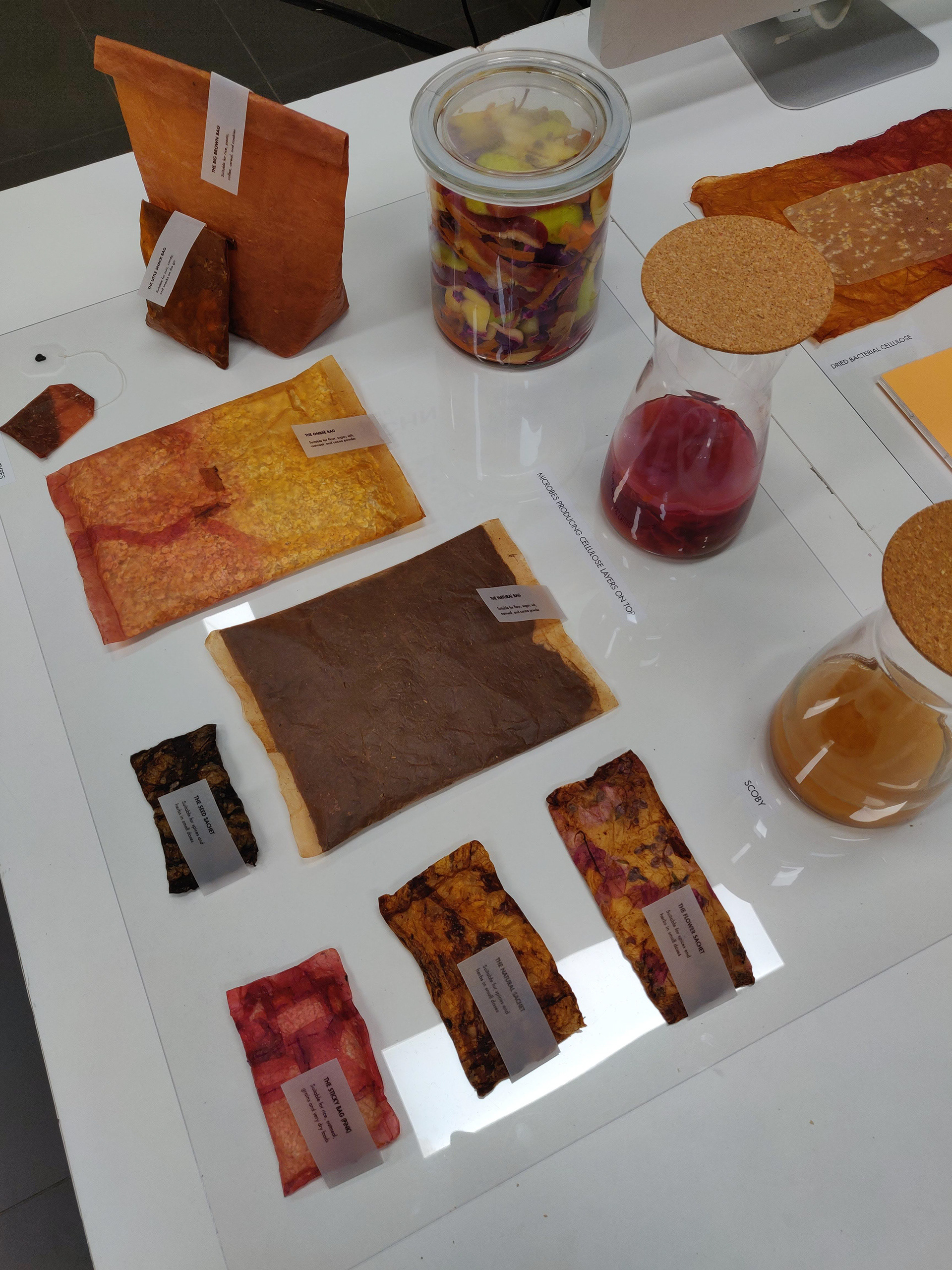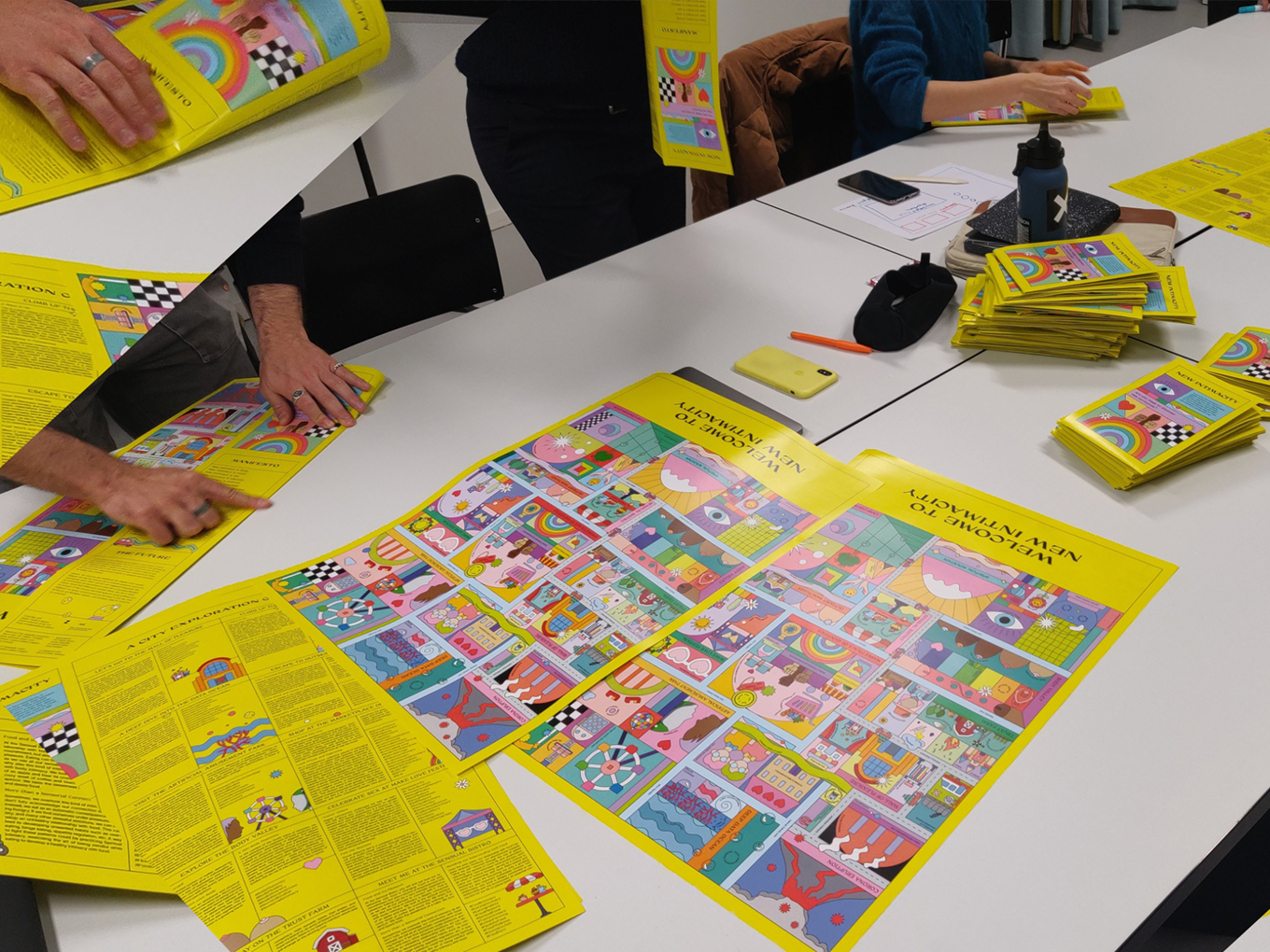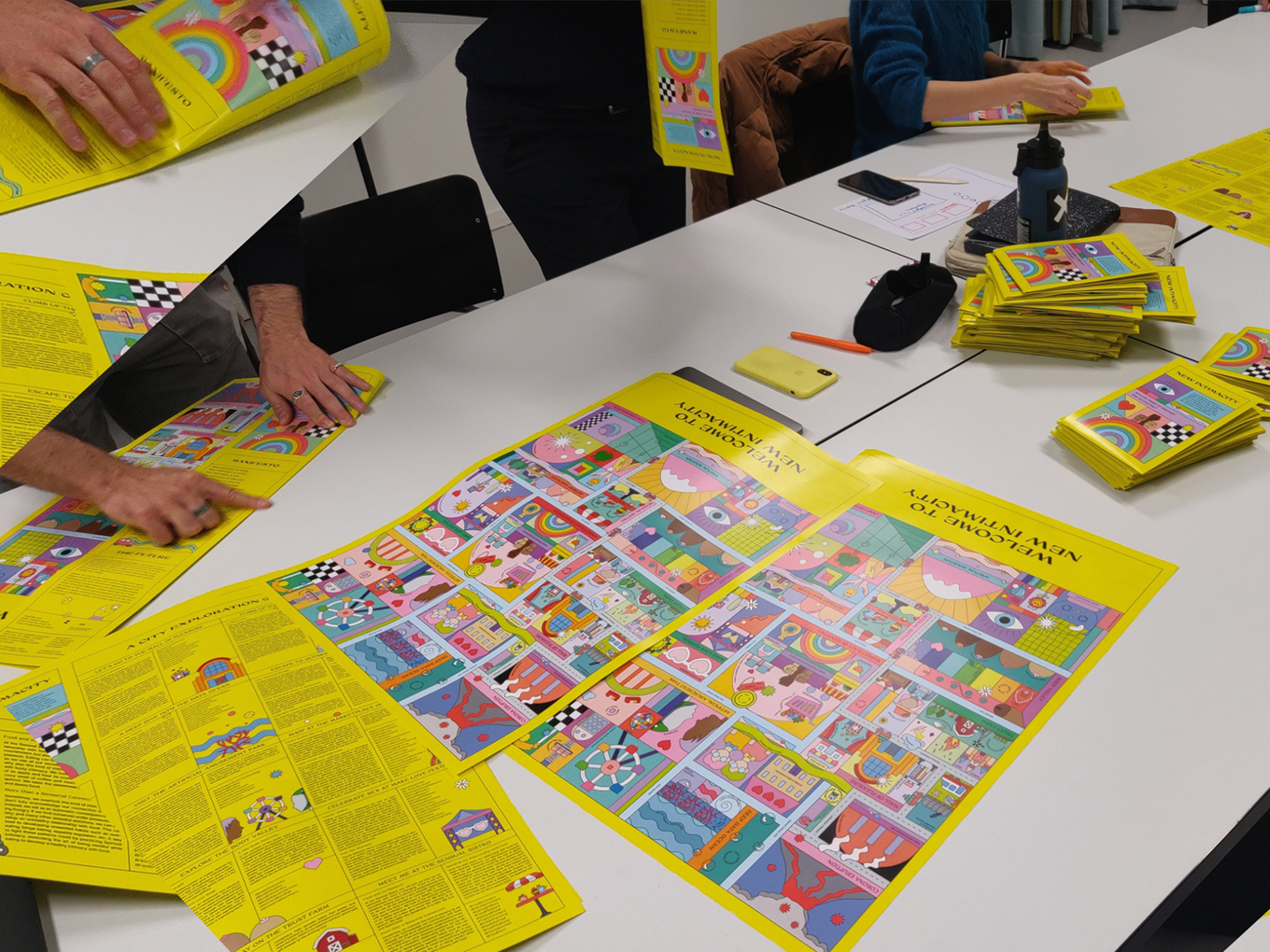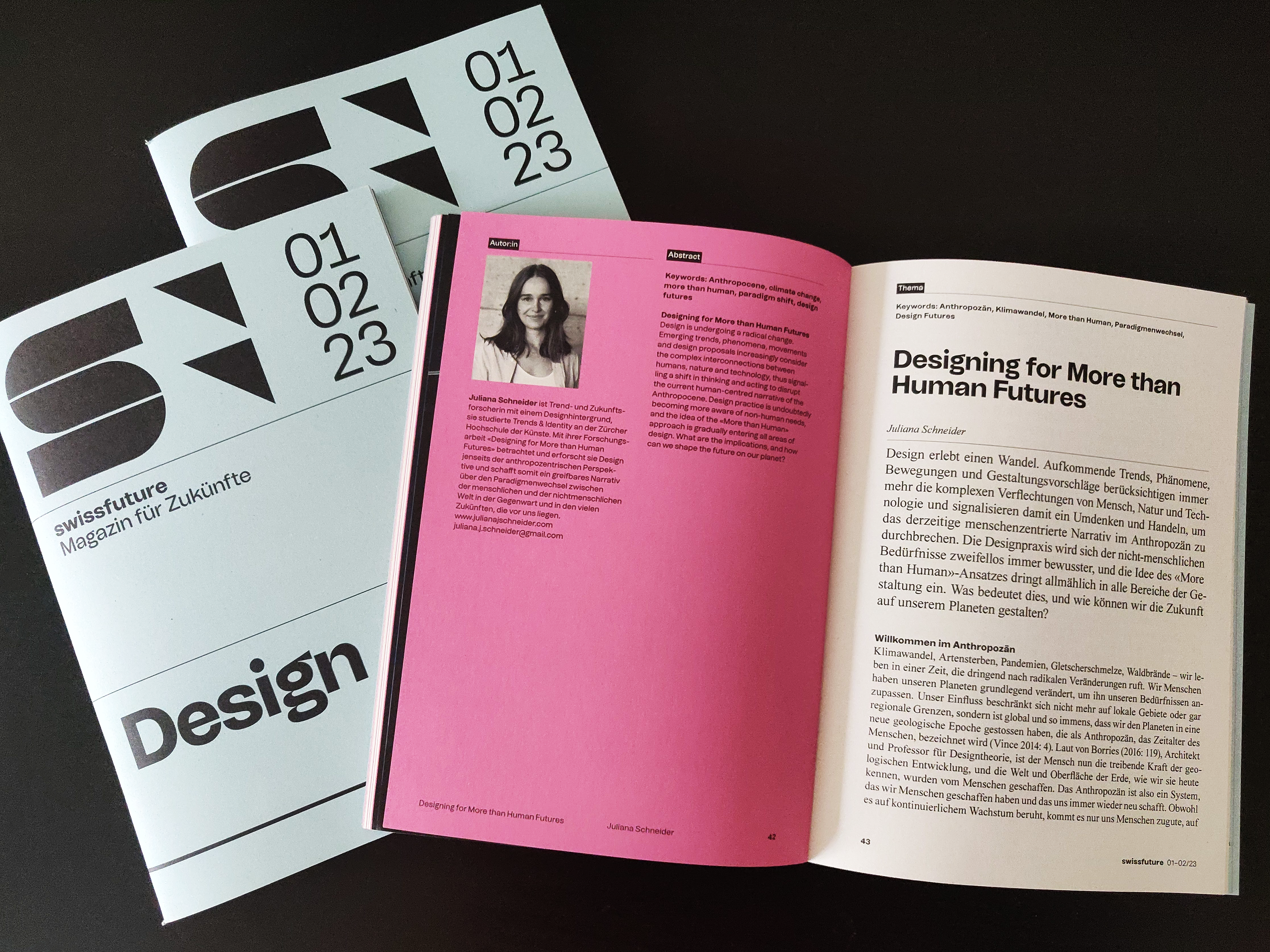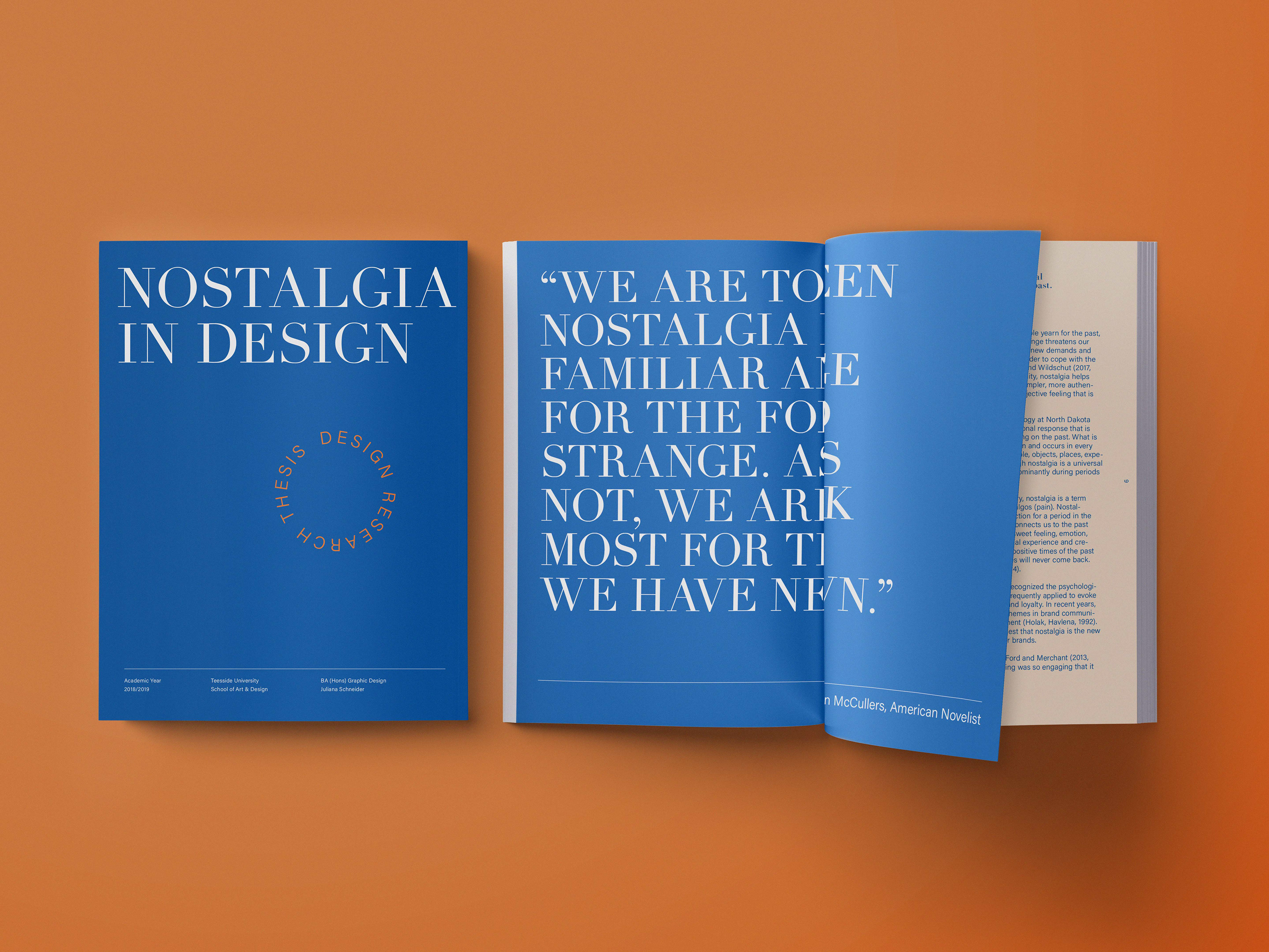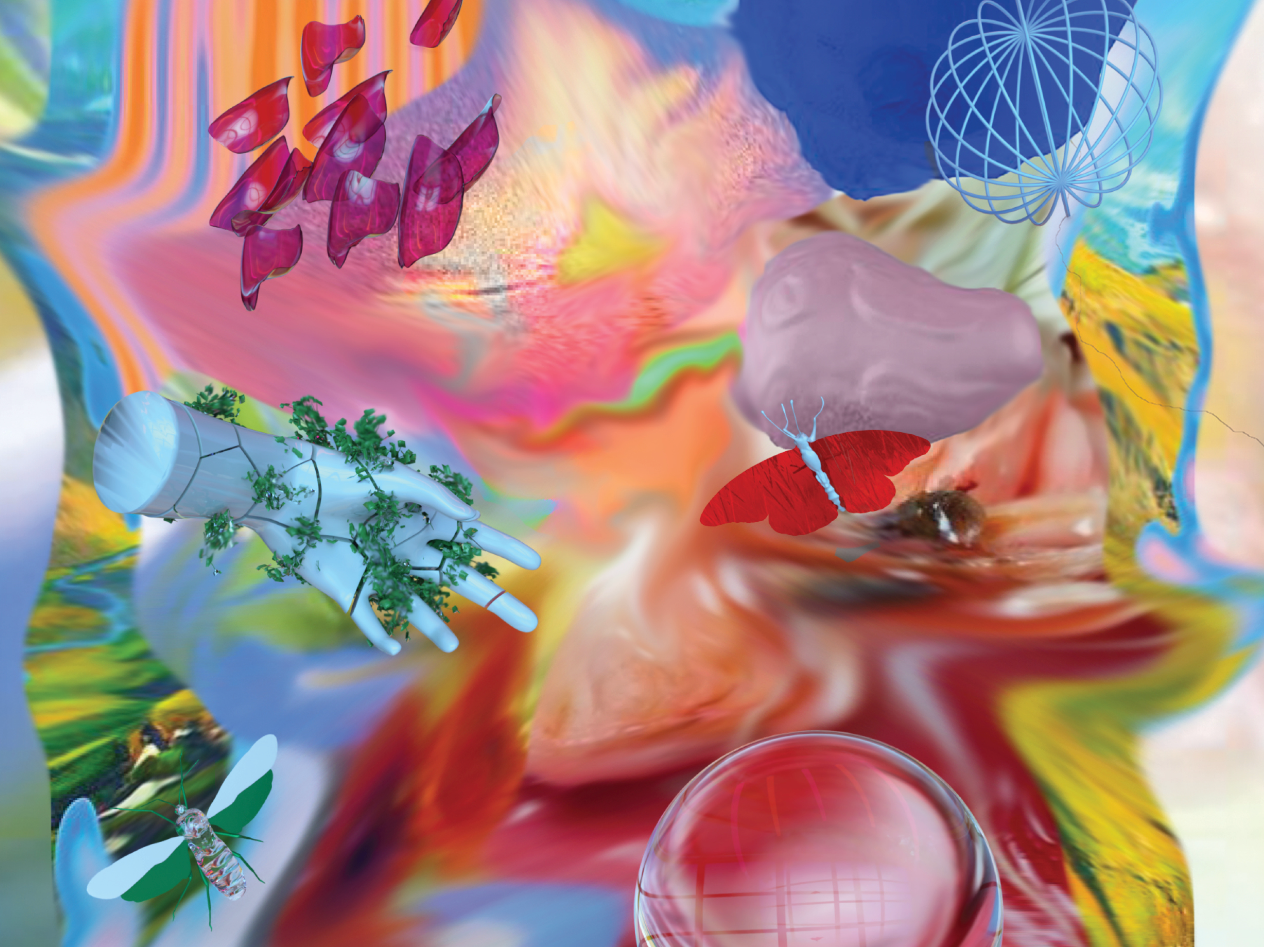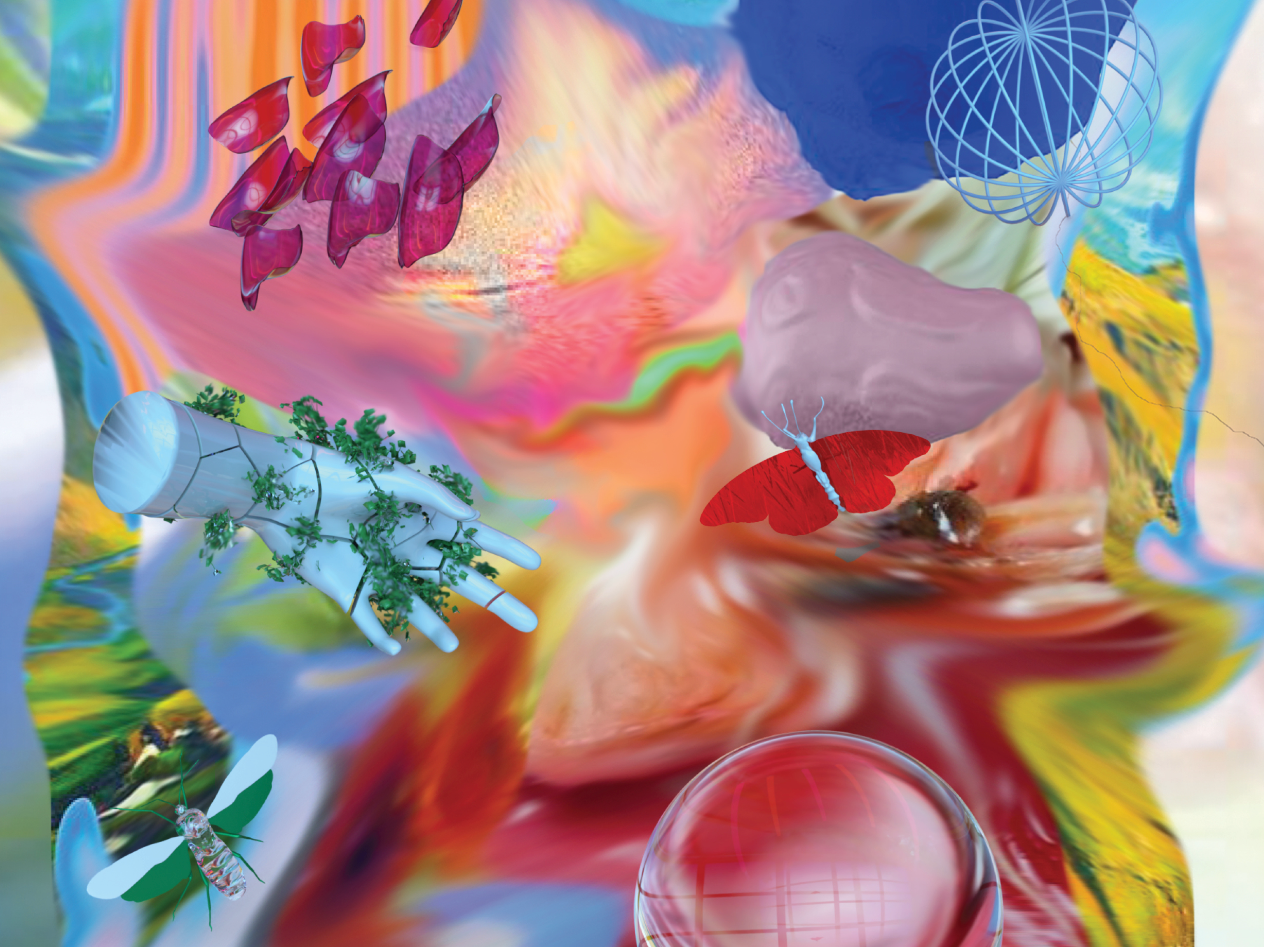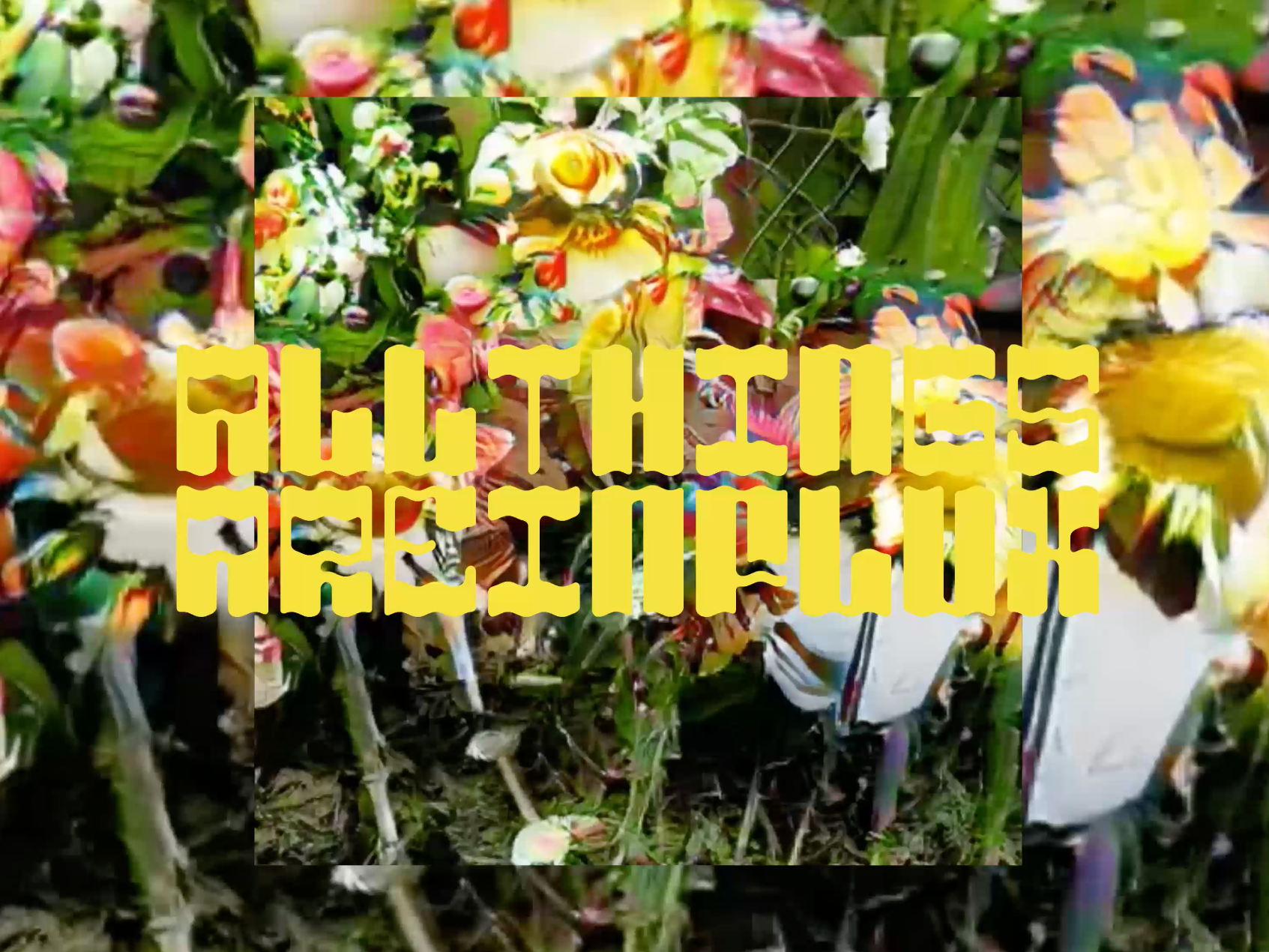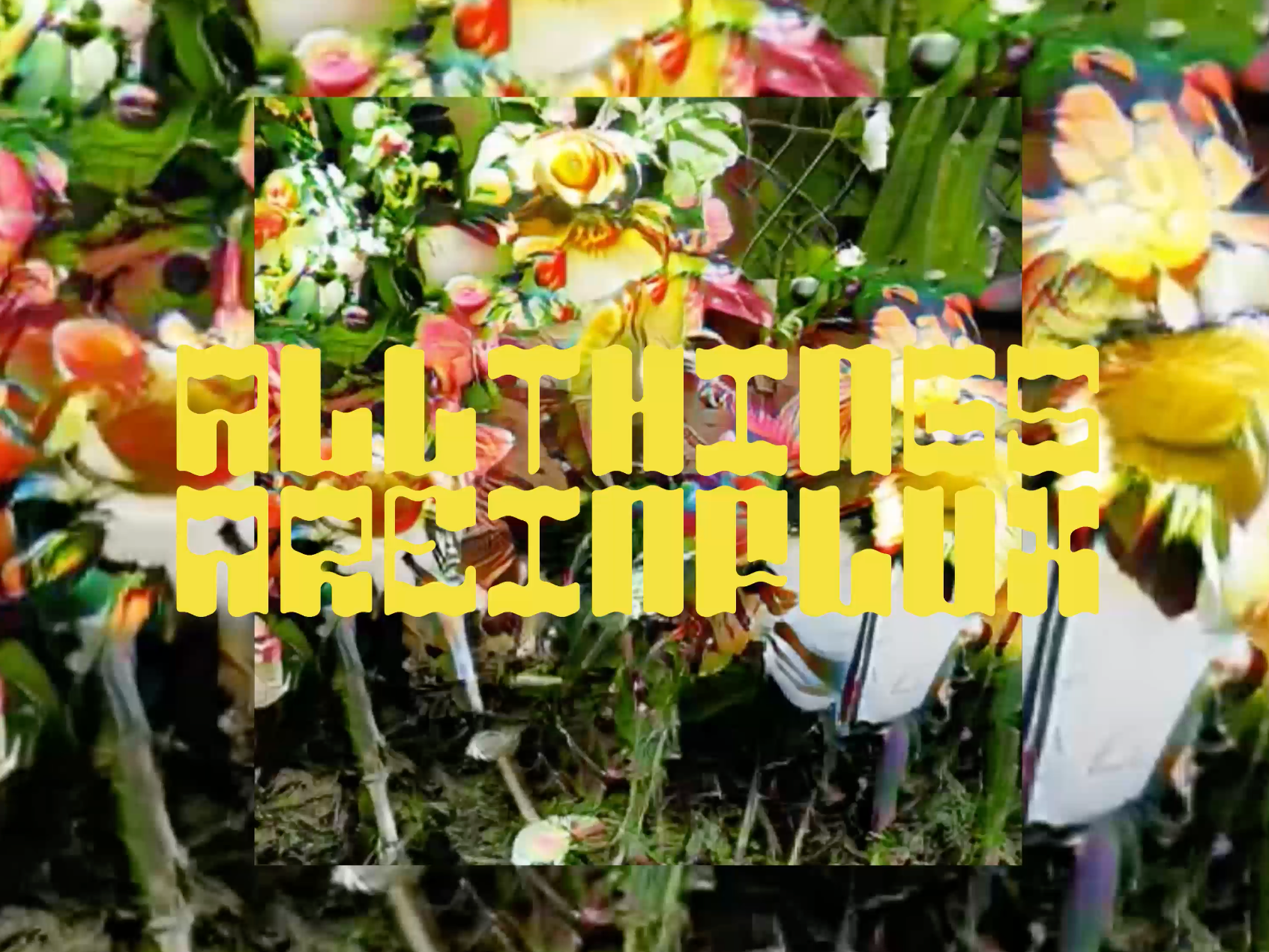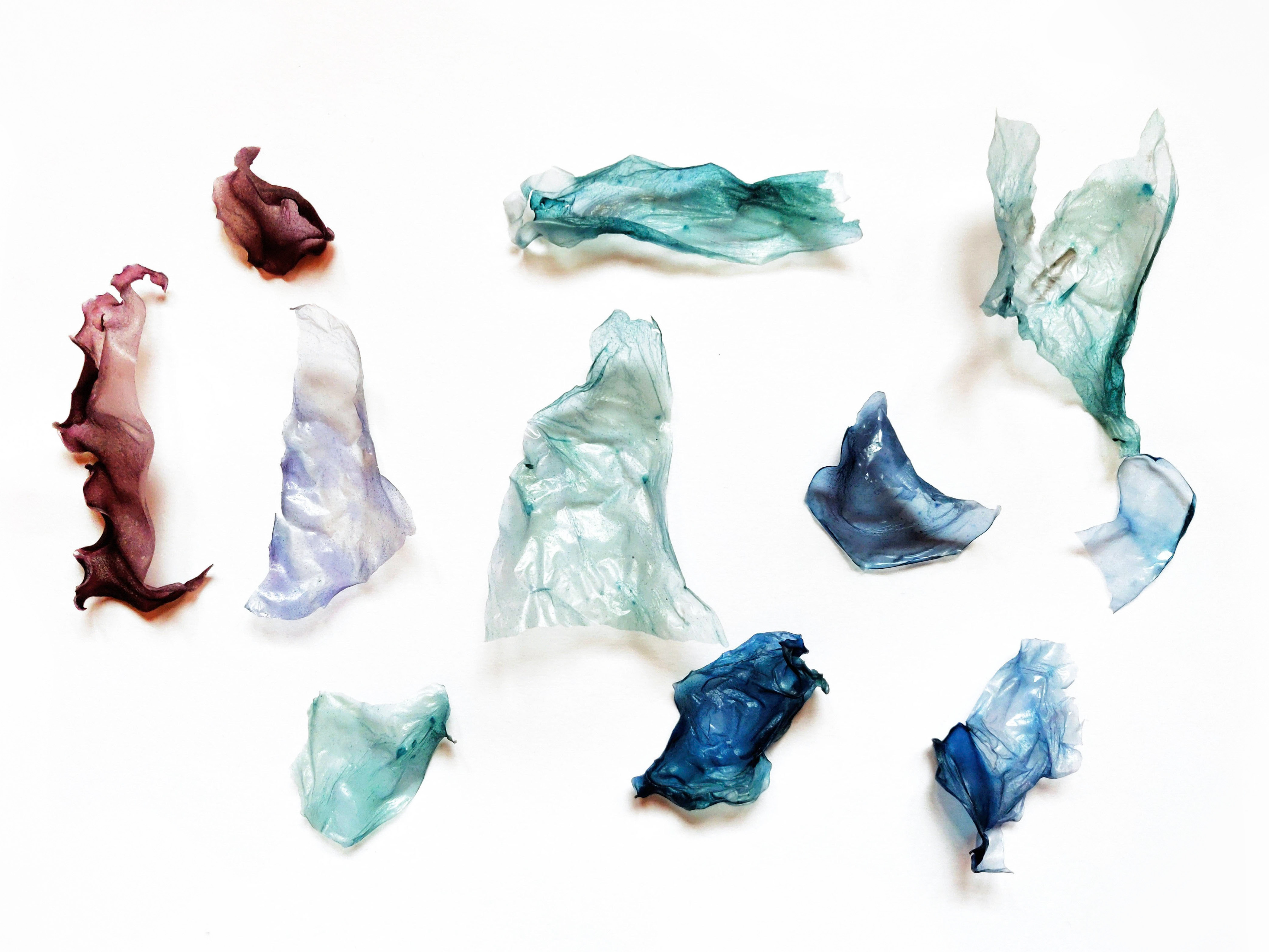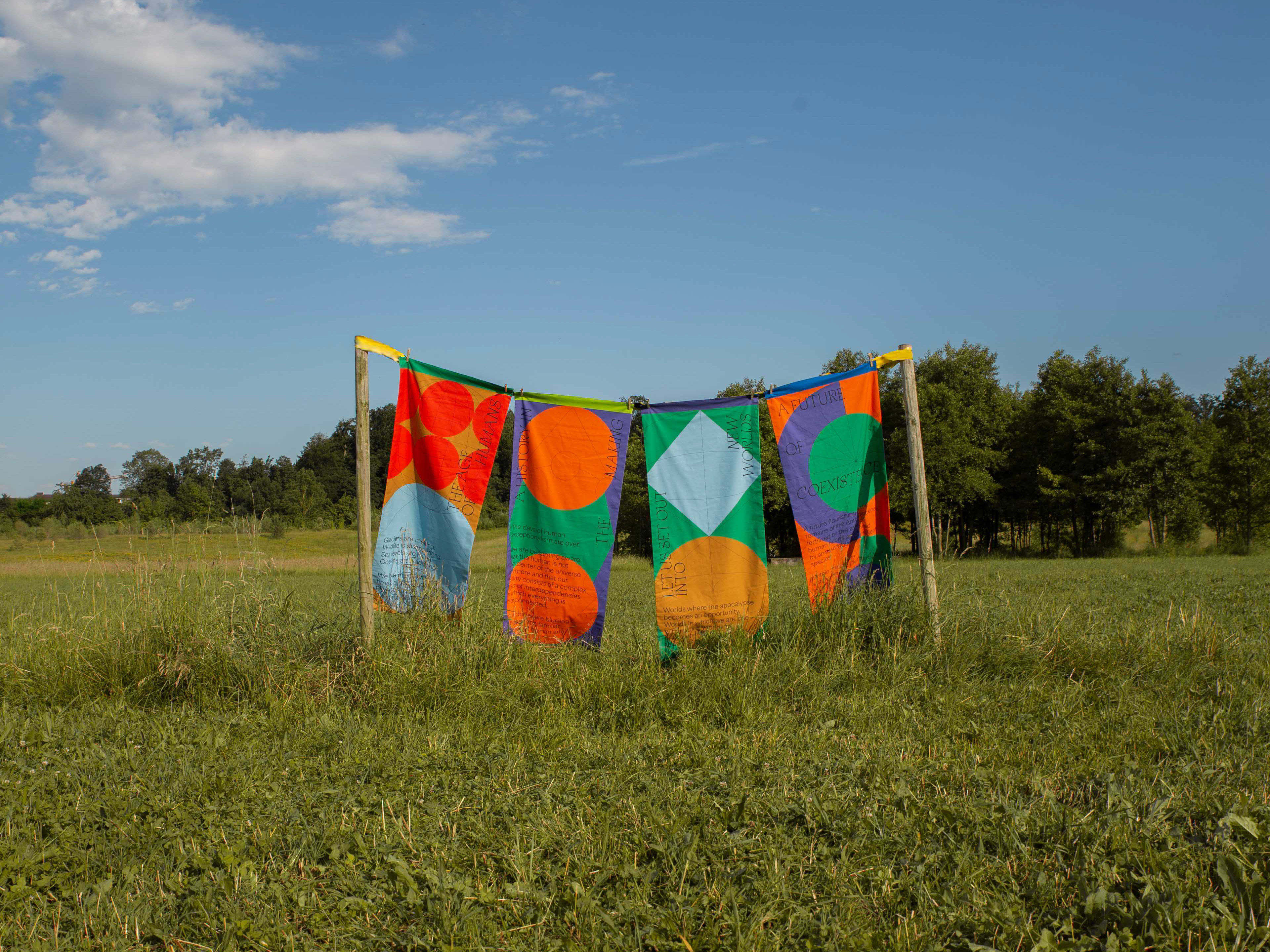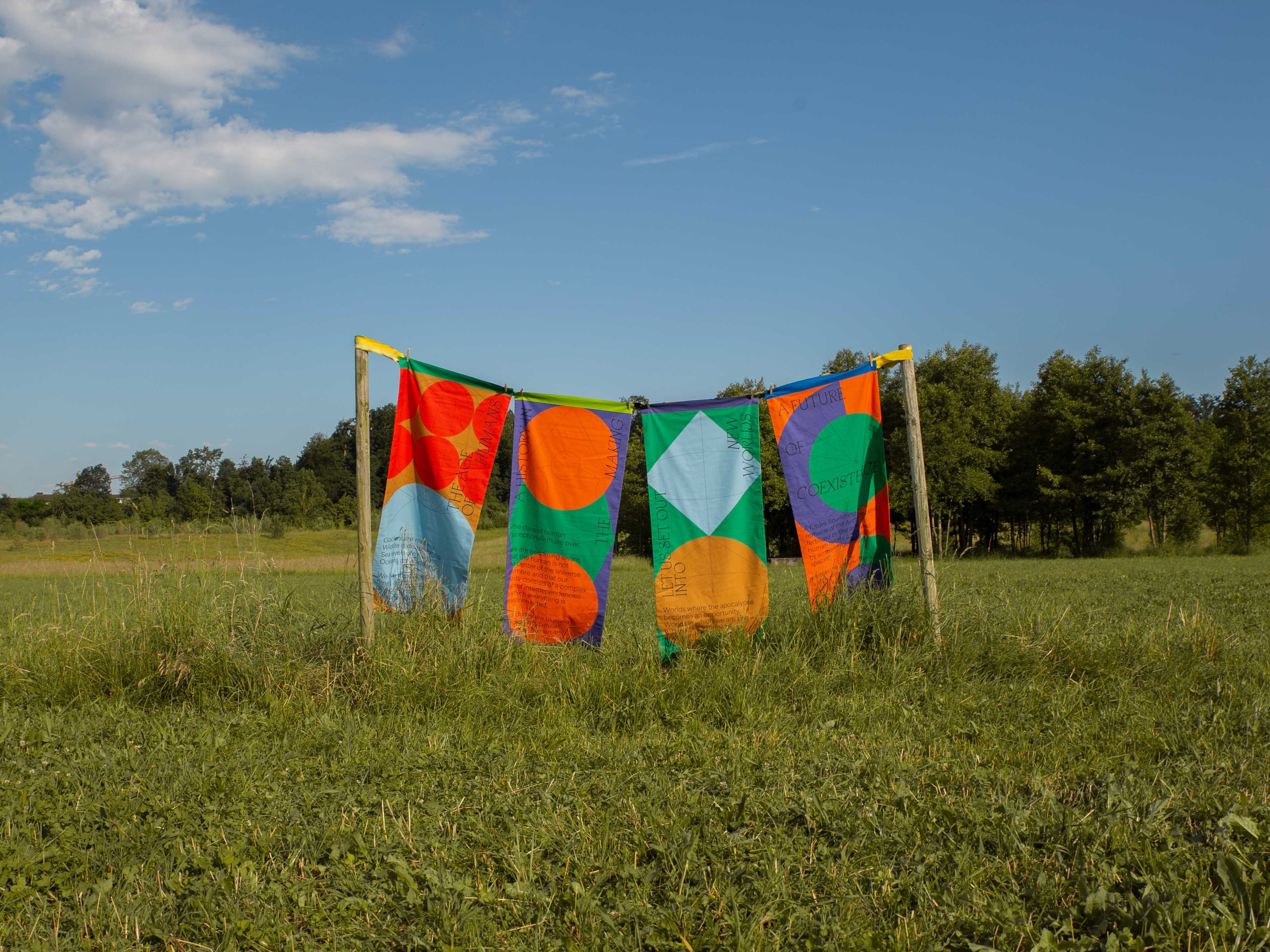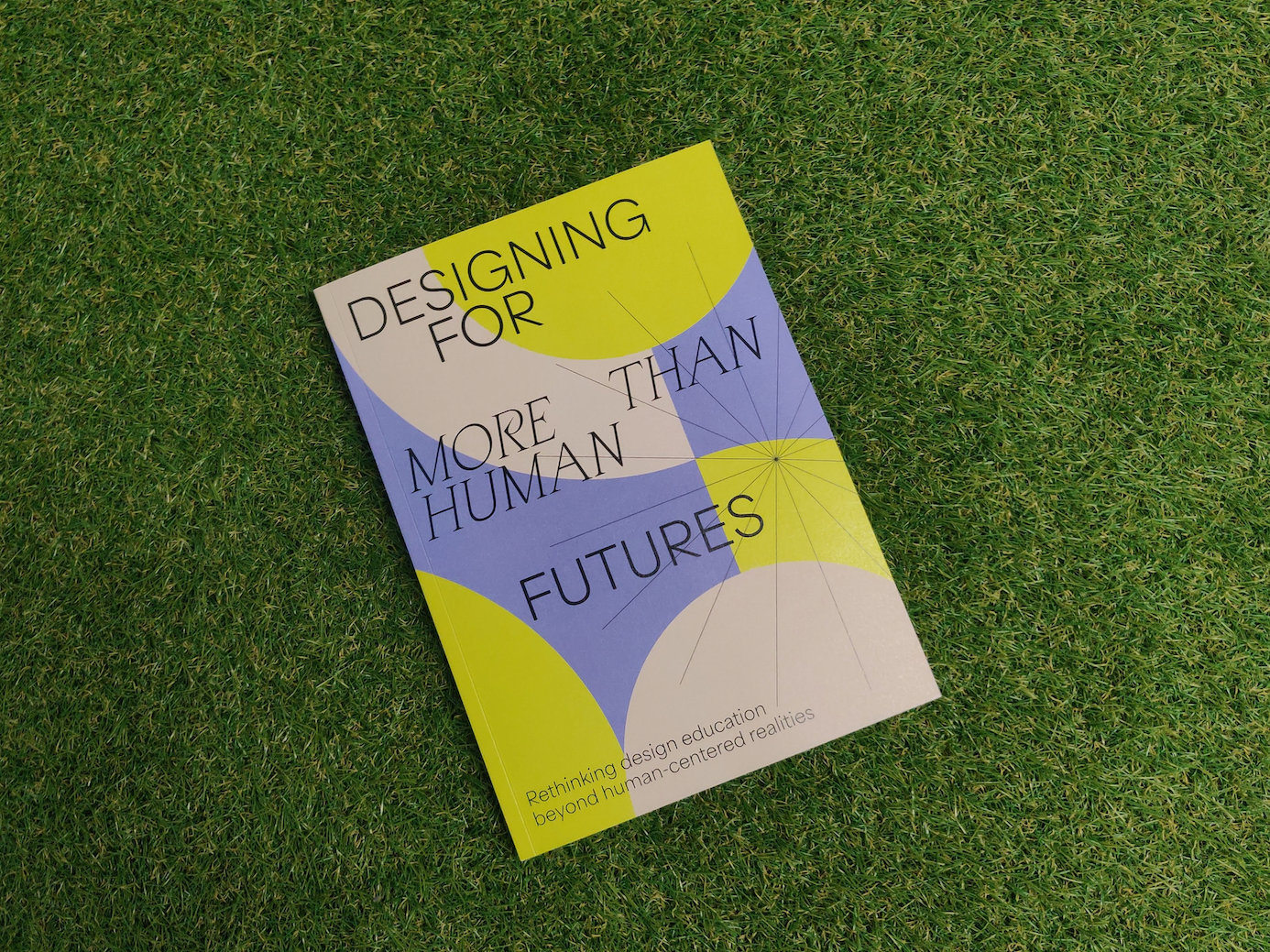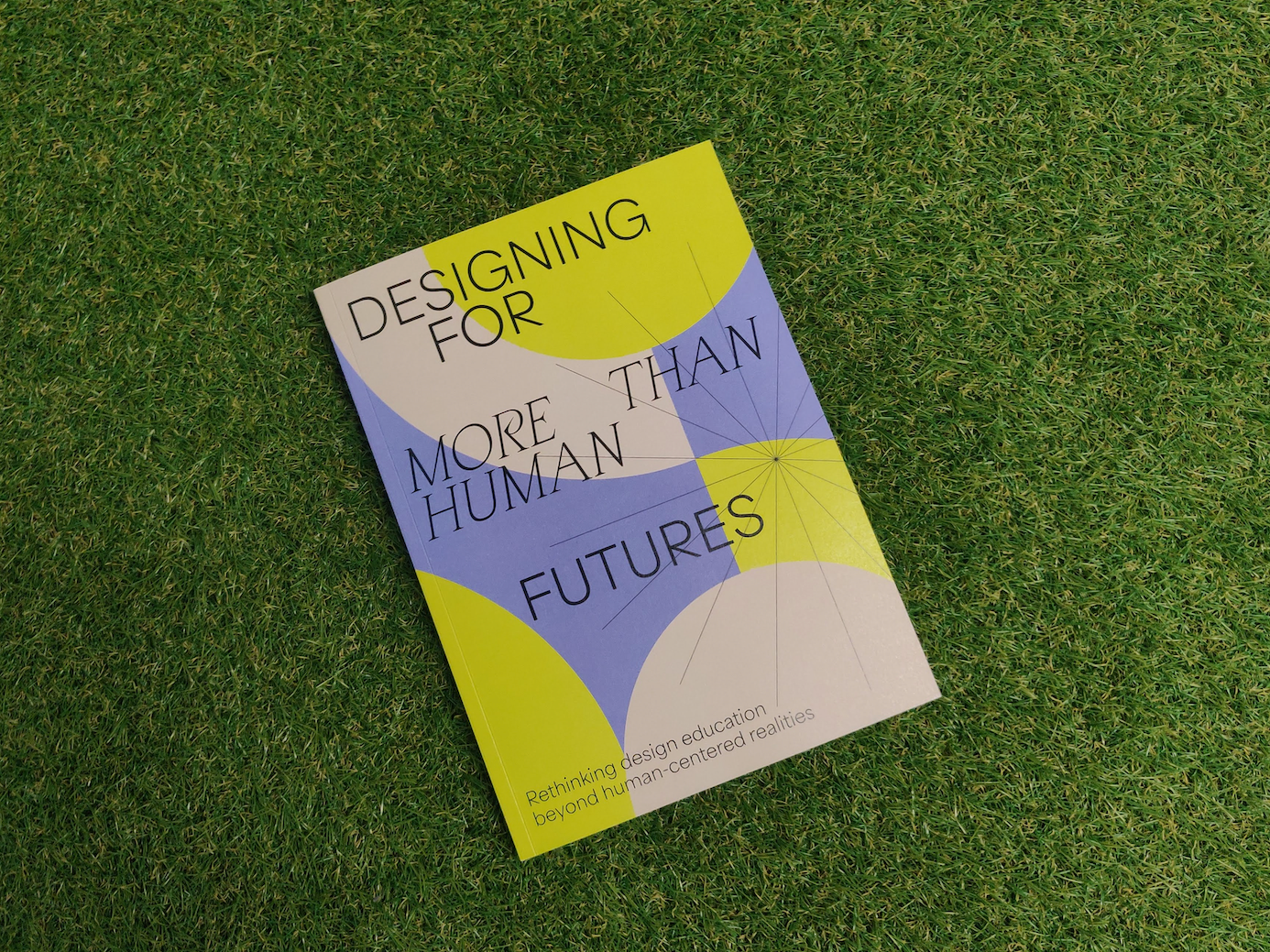For my final project at university, I decided to work on a speculative design project. My goal was to investigate nowadays sustainability and its possible future. After a lot of research, I narrowed it down to packaging, as it is one of the most important and most applied areas in design. The next step was to investigate packaging in the past - before plastic was introduced - to possibly find a solution for the future on how to make packaging more sustainable again and eliminate the extreme plastic use.
During my research, I went all the way back to the hunters and gatherers and found out that, other than animal skin and clay, they supposedly wrapped their food in plants and leaves. Packaging from nature which, after use, goes back to nature to be one with earth again. Fast forward to 2019, I started to look for interesting ways to incorporate nature into my concept. Besides using actual leaves, there are many other ways to make packaging from plants. But this process requires growing the plants first, which needs a lot of land, water, energy, and a constant transport of raw materials.
So I asked myself - would it be possible to just simply grow packaging biologically with available resources? This question lead me to learning about bacterial cellulose, its packaging qualities, and the possibilty of growing it on fruit and vegetable leftovers. By using natural materials only, bacterial cellulose packaging is 100% biodegradable, compostable and even edible. Moreover, it can be used as a fertilizer for growing new plants.
Over the span of two months, I grew bacterial cellulose at home to prove that my concept can work and to show how simple the process is. If I can do it at home, it must be possible on a larger scale. To make the process visible, comprehensible and accessible, I documented everything - from the growth of bacterial cellulose to the following experimentation and application - to show the many amazing benefits, qualities and possibilities of bacterial cellulose single-use packaging.
Bacterial Cellulose
Bacterial cellulose is an organic compound produced by certain types of bacteria. While cellulose is a basic structural material of most plants, bacterial cellulose is produced by bacteria, principally of the genera Acetobacter, Sarcina ventriculi and Agrobacterium. Instead of creating cellulose from photosynthesis like plants, the bacteria Acetobacer xylinium can convert sugars, glycerol, glucose and other organic substrates into pure cellulose through a fermentation process. In water containing nutrition, the bacteria will feed from the given nutrition and subsequently create thin microfibrils that vowel together to create a gelatinous-like mat at the surface of the water. These thin microfibrils are significantly smaller than those in plant cellulose, making bacterial cellulose much more porous.
Furthermore, bacterial, or microbial cellulose is characterized by high purity, strength, moldability and increased water holding ability. The cellulose can hold hundreds of times its weight in water and can be grown to virtually any shape due to the high moldability during formation. Depending on the growth duration, thickness and treatment, the material, when dried, can be described as a cross between leather, plastic and paper.
While bacterial cellulose is produced in nature, many methods have been and are currently investigated to enhance cellulose growth from cultures in laboratories to achieve a large-scale process and production. By controlling synthesis methods, the resulting bacterial cellulose can be tailored to have specific desirable properties.
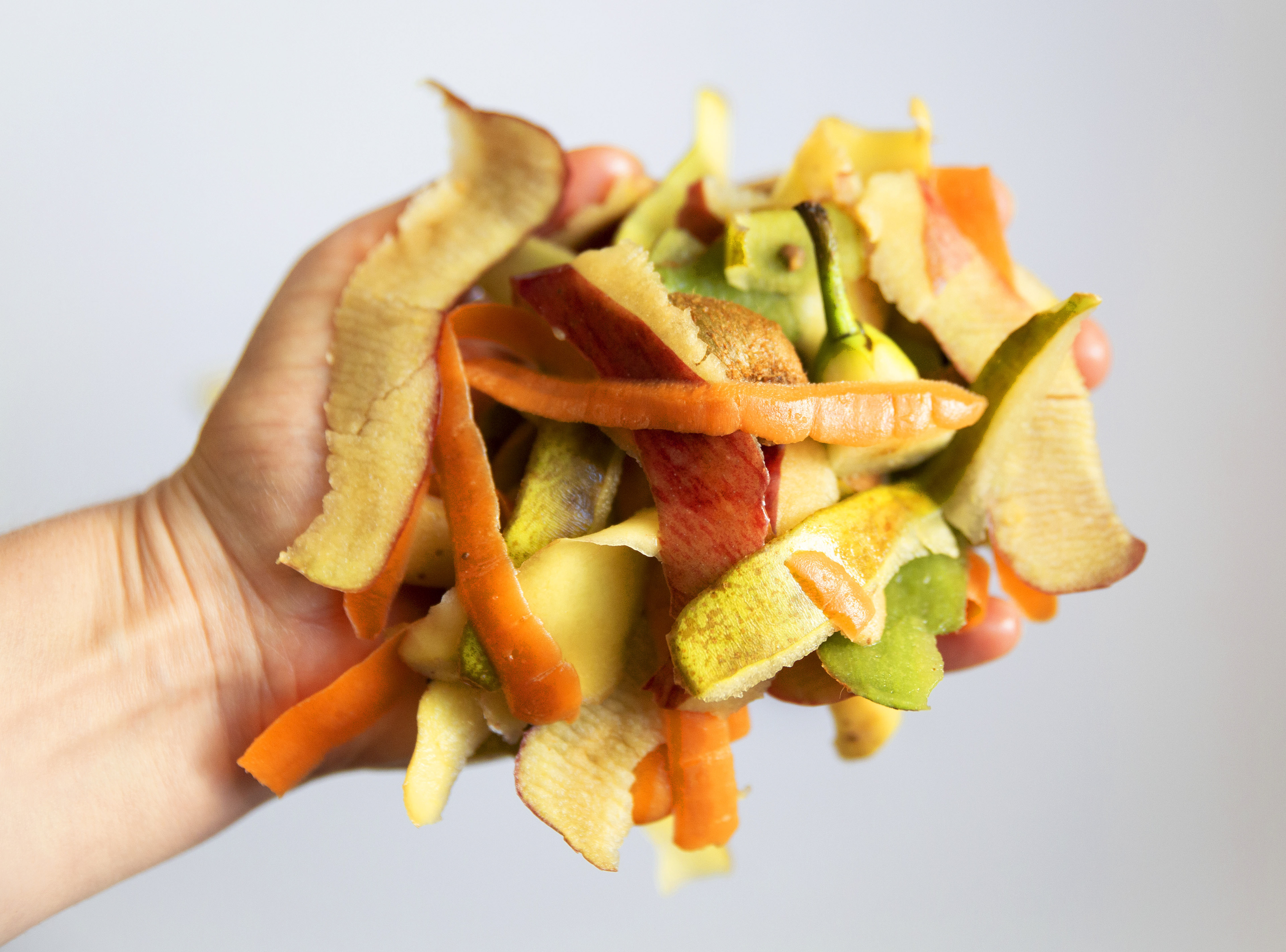
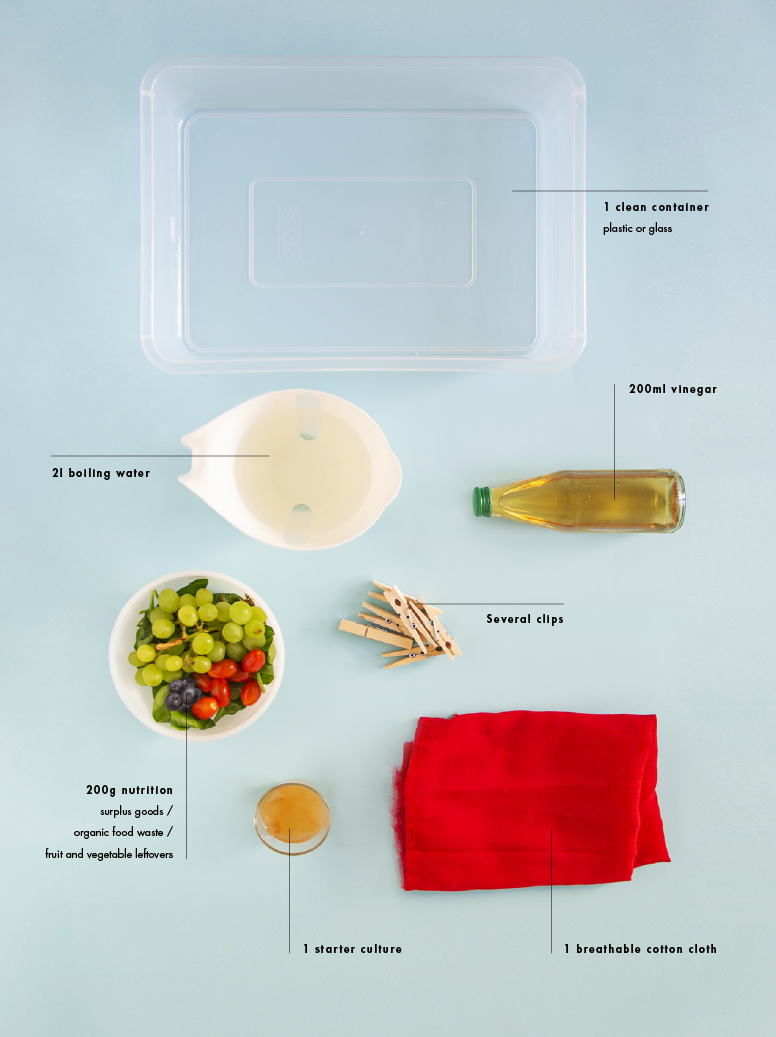
Growing Bacterial Cellulose
Growing bacterial cellulose at home is relatively easy. It needs a great deal of patience as it takes a few weeks until the cellulose can be harvested, and another few days until it is completely dry and ready for further experiments.
–––––––– 1 container
–––––––––––––––––––– 2l water
–––––––––––––––––––––––––––– 200g nutrition
––––––––––––––––––– 200ml vinegar
––––––––––––––––––––––––––––––––– 1 starter culture
–––––––––––––– 1 cotton cloth
–––––––––––––––––––––––––––––––––––––––– Several clips
––––––––––––––––––––––––––– Patience
For nutrition, leftovers, peels and waste from fruits and vegetables can be used. To achieve a smooth cellulose surface, the fruit and vegetable leftovers need to be blended beforehand.
The cellulose needs a strong acidic environnment to grow (PH value around 3-4) - that means, it is possible to use organic apple cider vinegar or plain vinegar. During growth, the bacteria creates vinegar as a bi-product, so for the next brewing, the liquid from the last batch can be reused.
The starter culture is called SCOBY (symbiotic culture of bacteria and yeast). Usually, it is used to produce Kombucha. It can either be bought at organic stores, obtained from a local Kombucha brewer, or grown at home. The SCOBY can be reused several times.
To protect the cellulose from fruit flies and dust, it needs to be covered. Also, the cellulose needs oxygen to grow - using a breathable cotton cloth to cover the container is advisable.
Experimentation and Treatments
Once the cellulose was dried, I could finally start with different experiments. Needless to say, my experiments are all on a small scale and will most likely not work on an industrial level yet. For now, they are suggestions that show the possibilities with the material. However, you have to start somewhere.
In order to transform the cellulose into actual packaging, some essential things have to be considered, such as adding any kind of information and sealing the packaging. In this chapter, I explore a few different methods in both categories to improve practicability. Some of them have the potential to be developed further in order to make them viable for a production on an industrial level. However, depending on the structure, thickness and planned usage of the material, different methods have to be applied. In short, the method needs to be adapted to the material which makes experimenting with the material indispensable.
Another important point to consider is the cost of each method. In case of a successful industrial implementation, the production of bacterial cellulose packaging must be cost-effective. That is why some of the methods can be ruled out in the first place as they are not economically beneficial. Others, on the contrary, are worth developing further as they could keep the manufacturing costs low.
There are several treatments to make the cellulose more flexible, resistent to water and achieve natural patterns. While I do not have access to certain resources on an industrial level, I experimented with resources that were available and could be easily purchased, such as coconut oil, glycerin, beeswax, seeds, and flowers. All these treatments had very different but interesting outcomes. Some of them definitely have the potential to work on a larger scale when applied correctly.
One treatment that I did not manage to try (as I did not have access to the needed resources), was adding different kind of fibres in order to make the cellulose more tearproof and durable. It is a fact that some materials are reinforced with certain fibres to achieve tear strength and durability even under high pressure. The fibres are usually glass (in fibreglass), carbon (in carbon-fiber-reinforced polymer), aramid, or basalt. All of these options are obviously ineligible for my concept as they are not natural or biodegradable. However, with advancing technology, it will be possible to produce bacterial cellulose that is reinforced with natural fibres that decompose with the cellulose packaging.
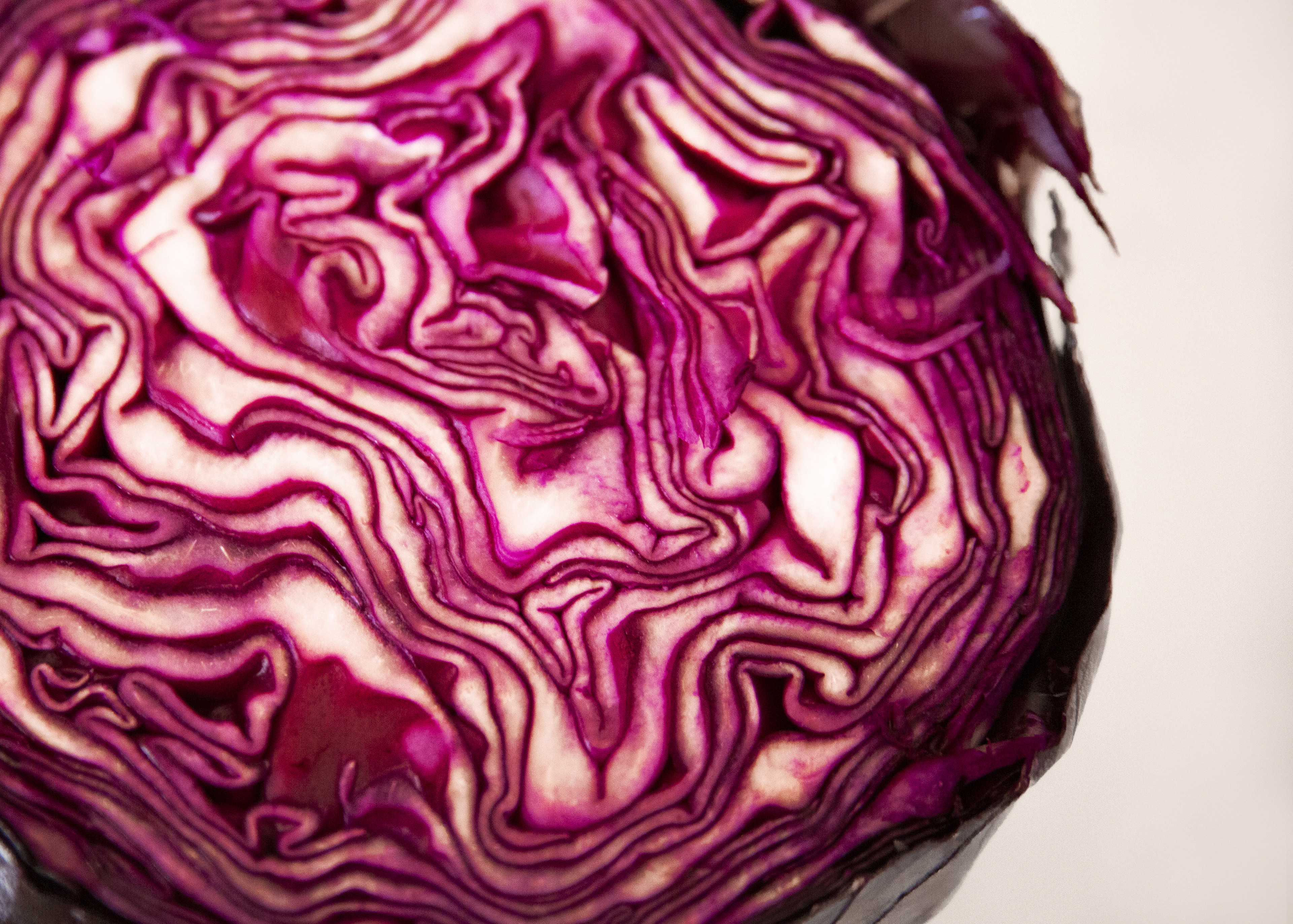
Red cabbage
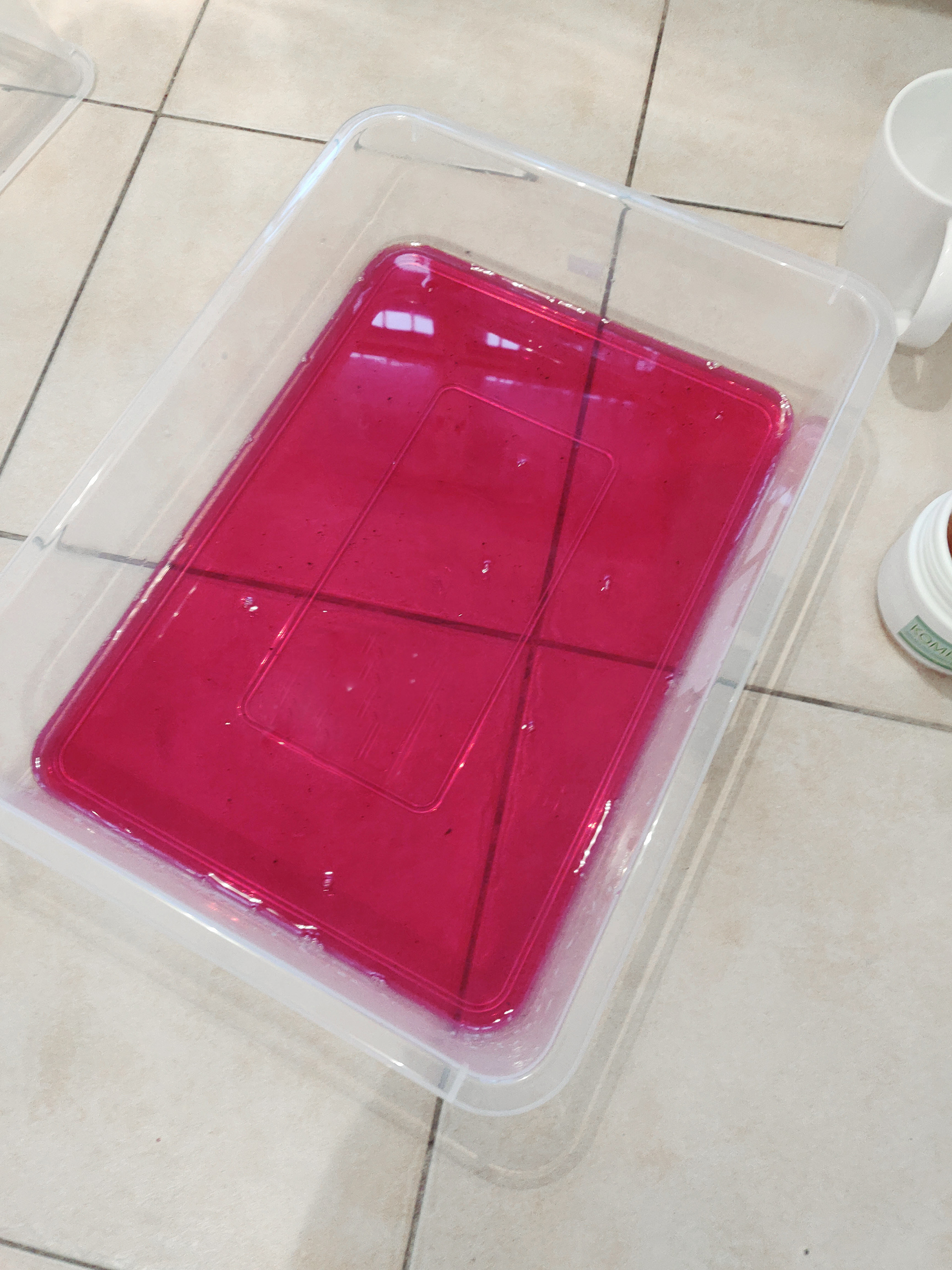
Dyeing with red cabbage
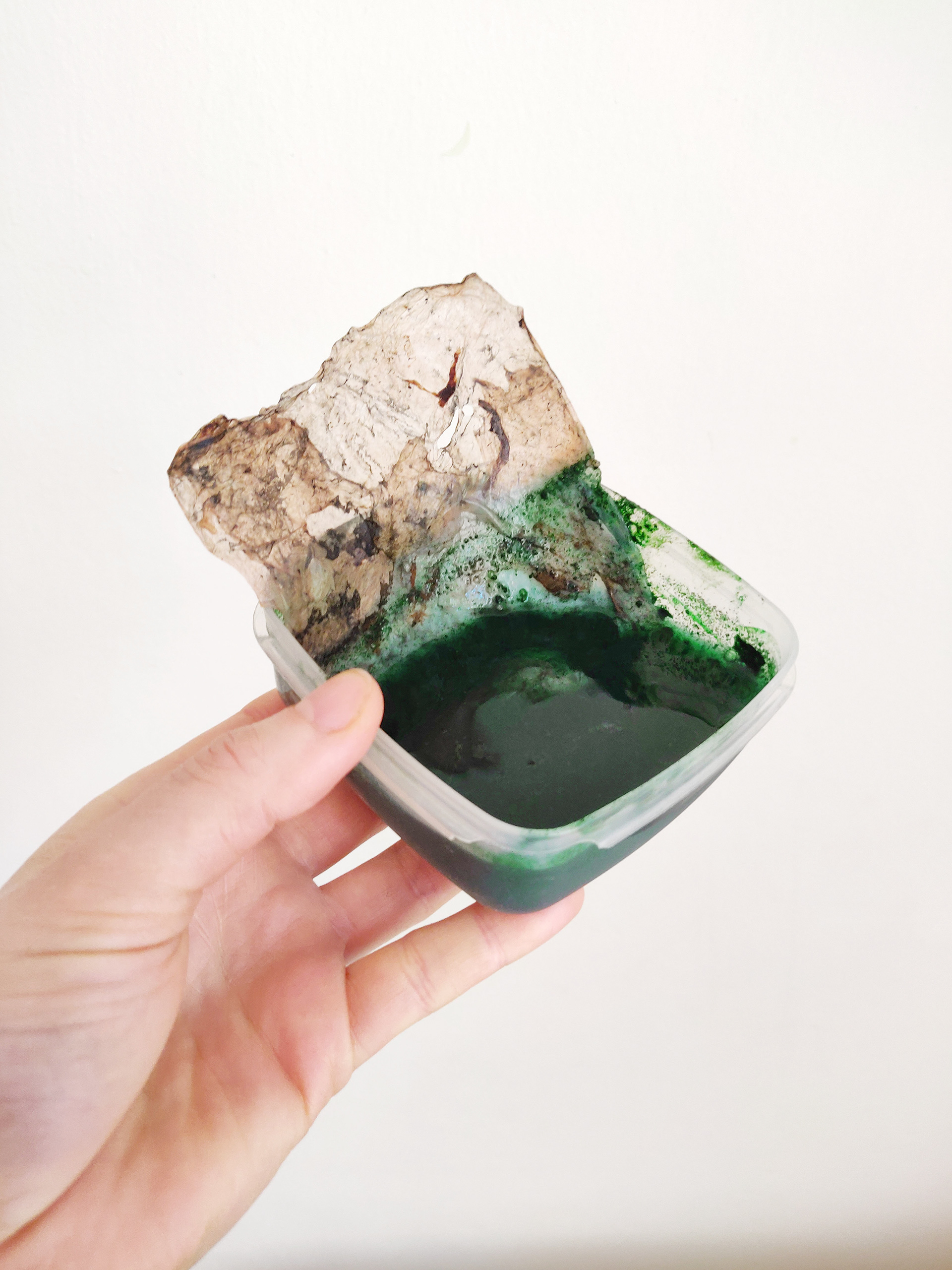
Dyeing with spiraling
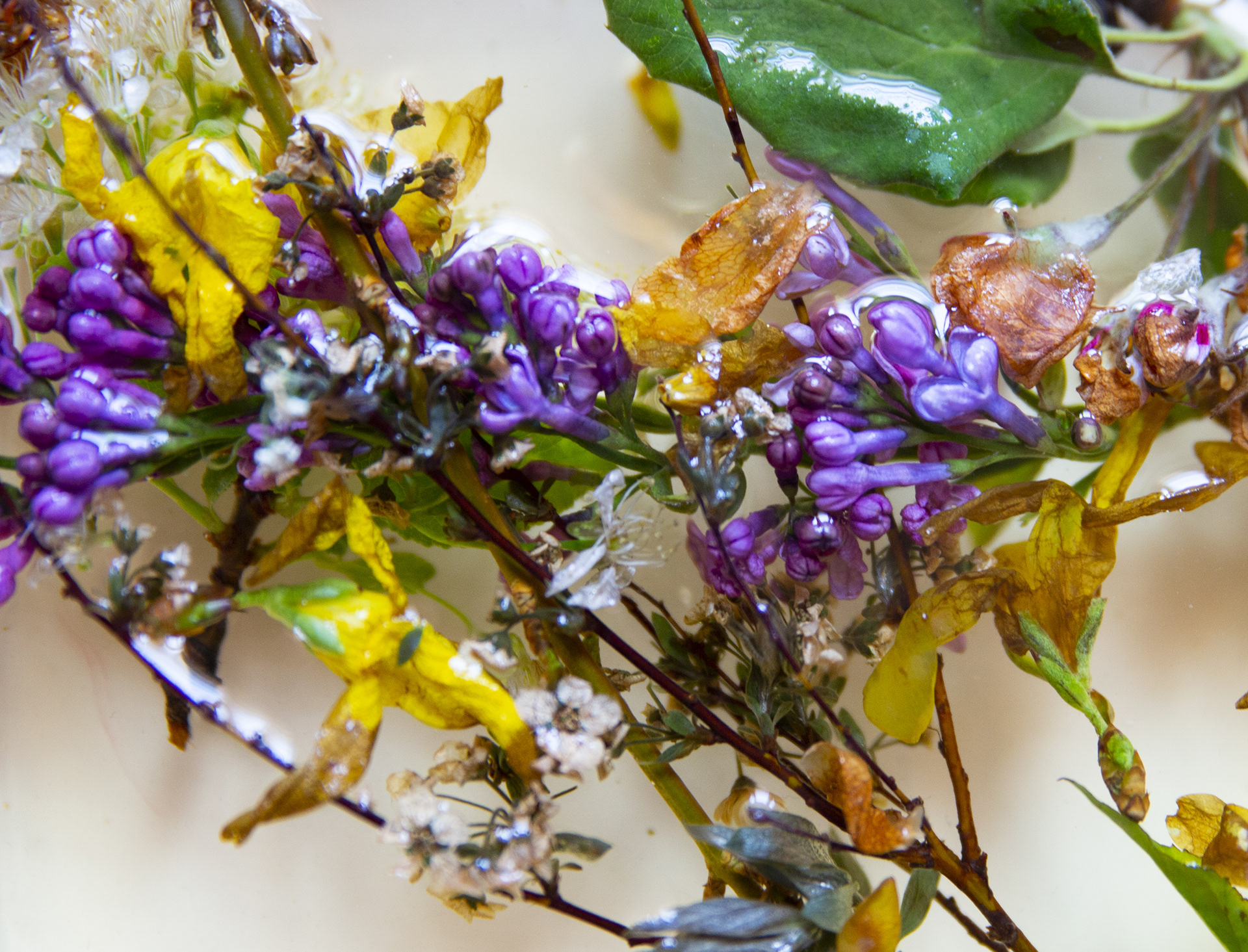
Flower treatment
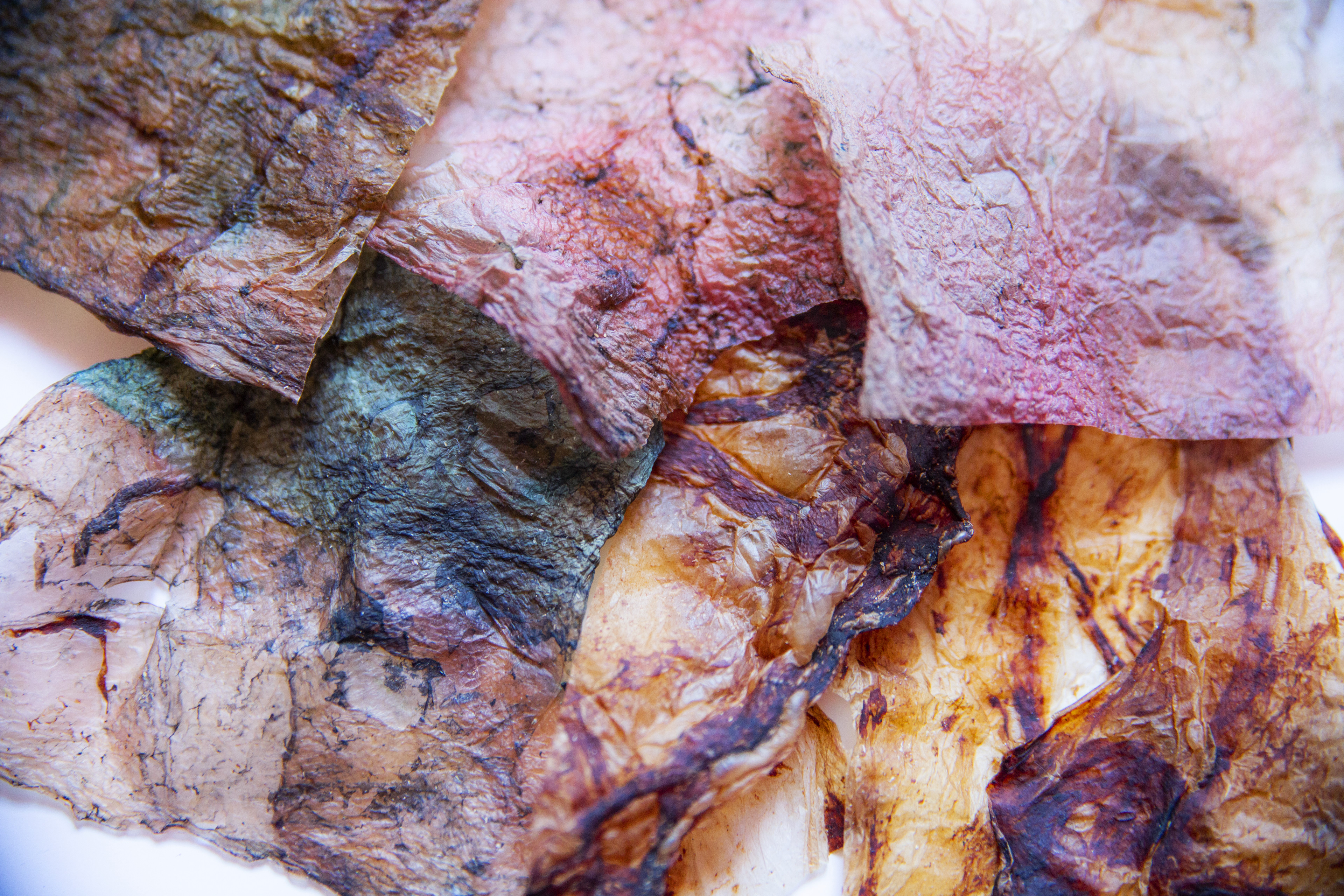
Dried cellulose
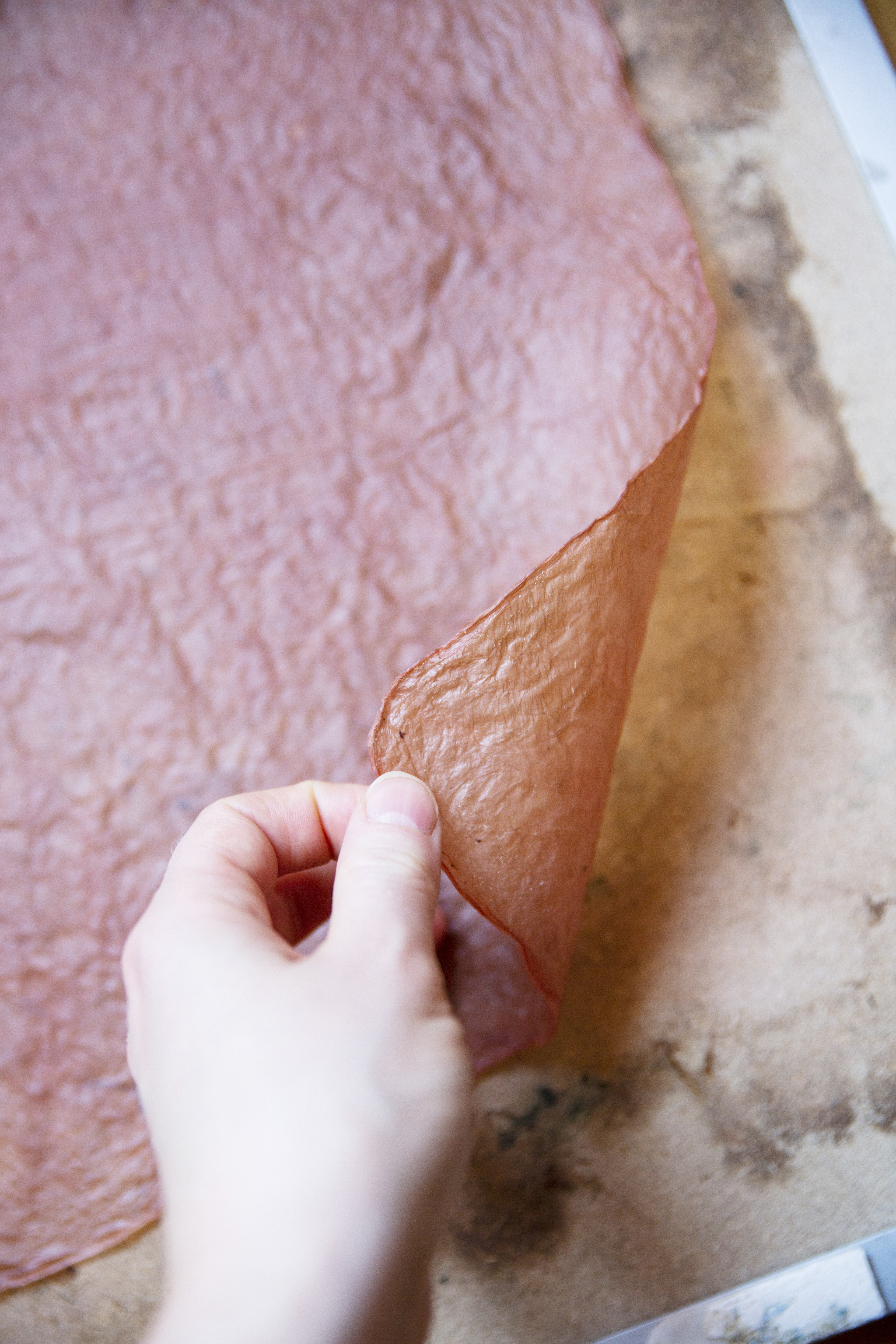
Dried cellulose
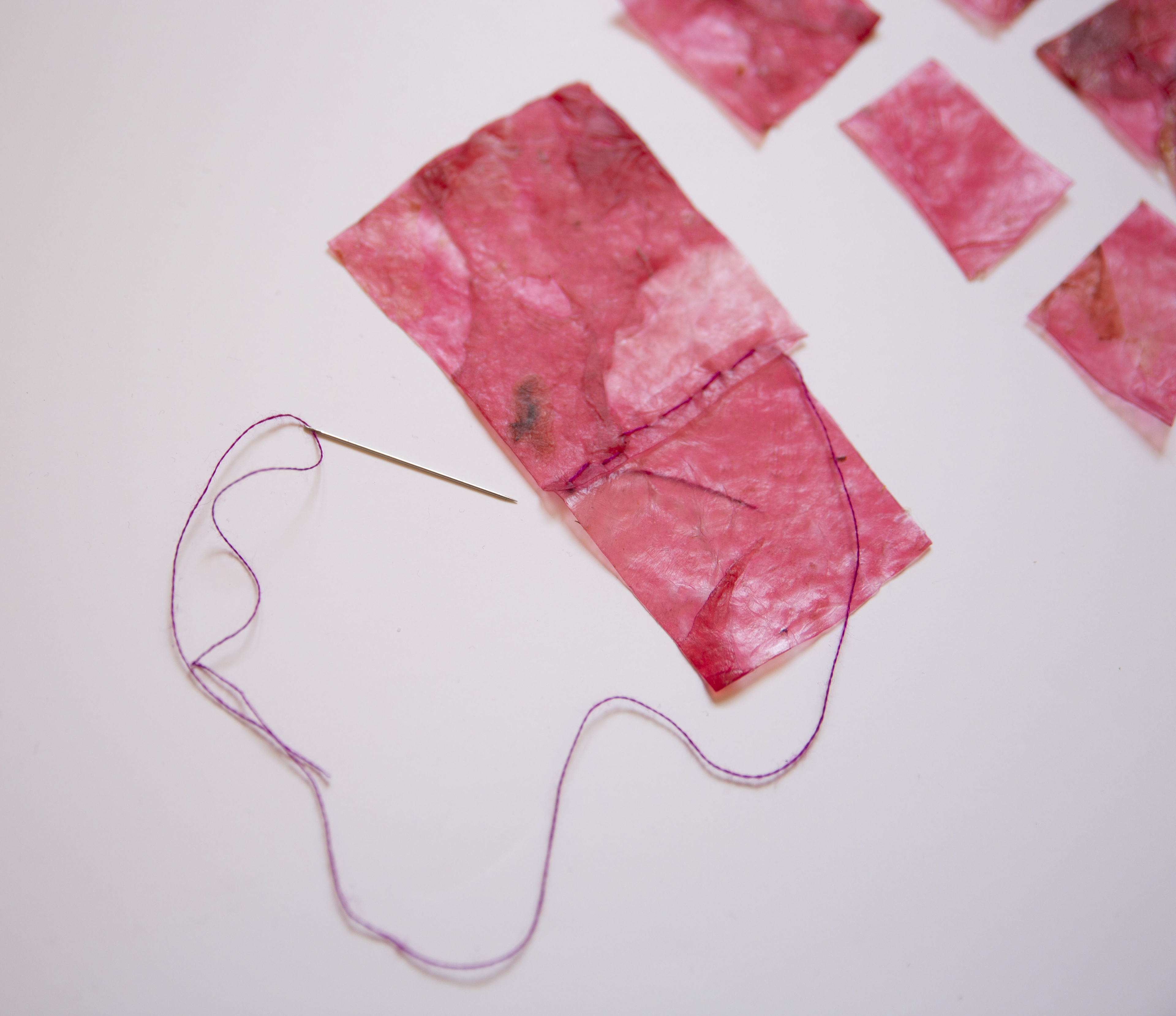
Sewing
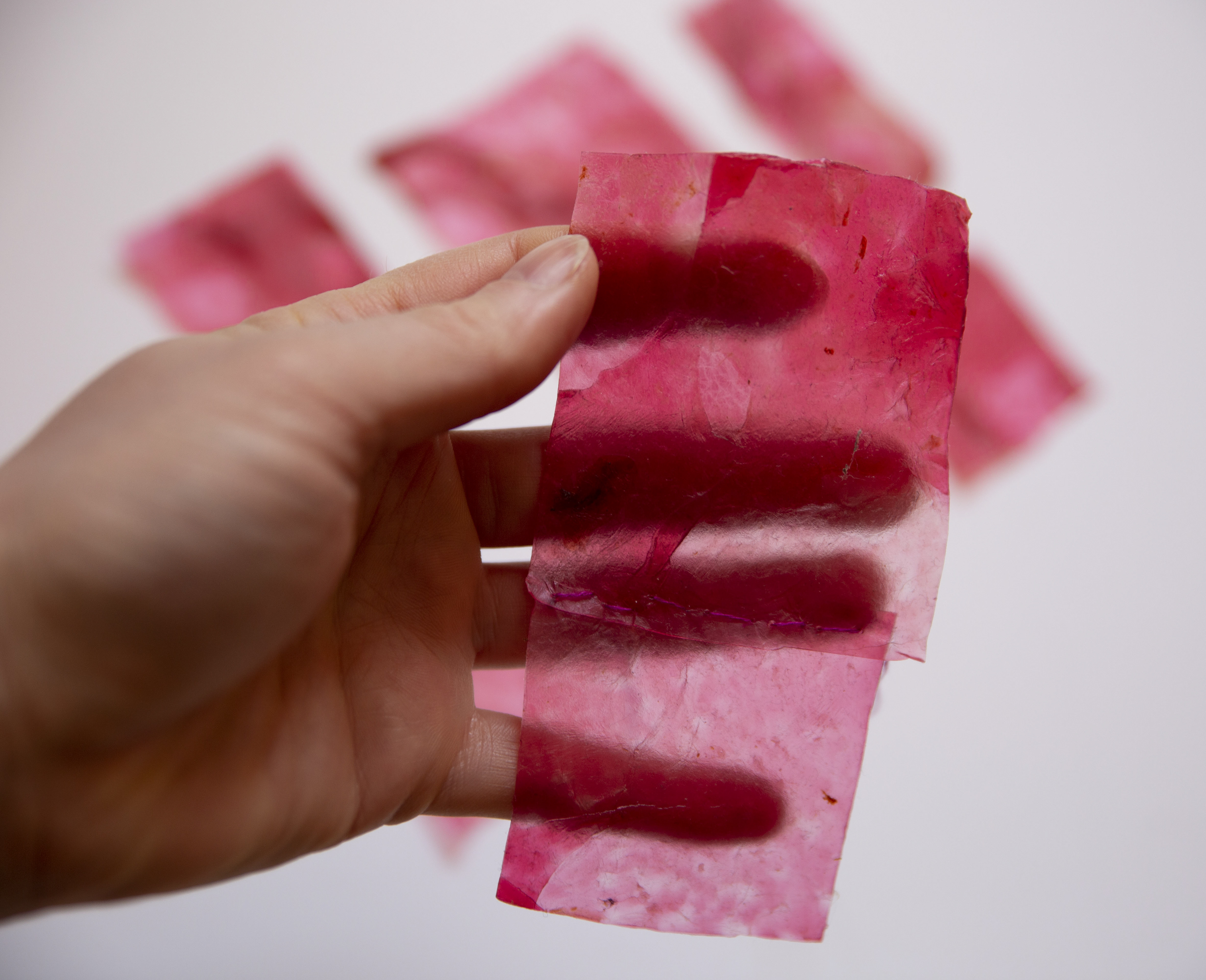
Sewing
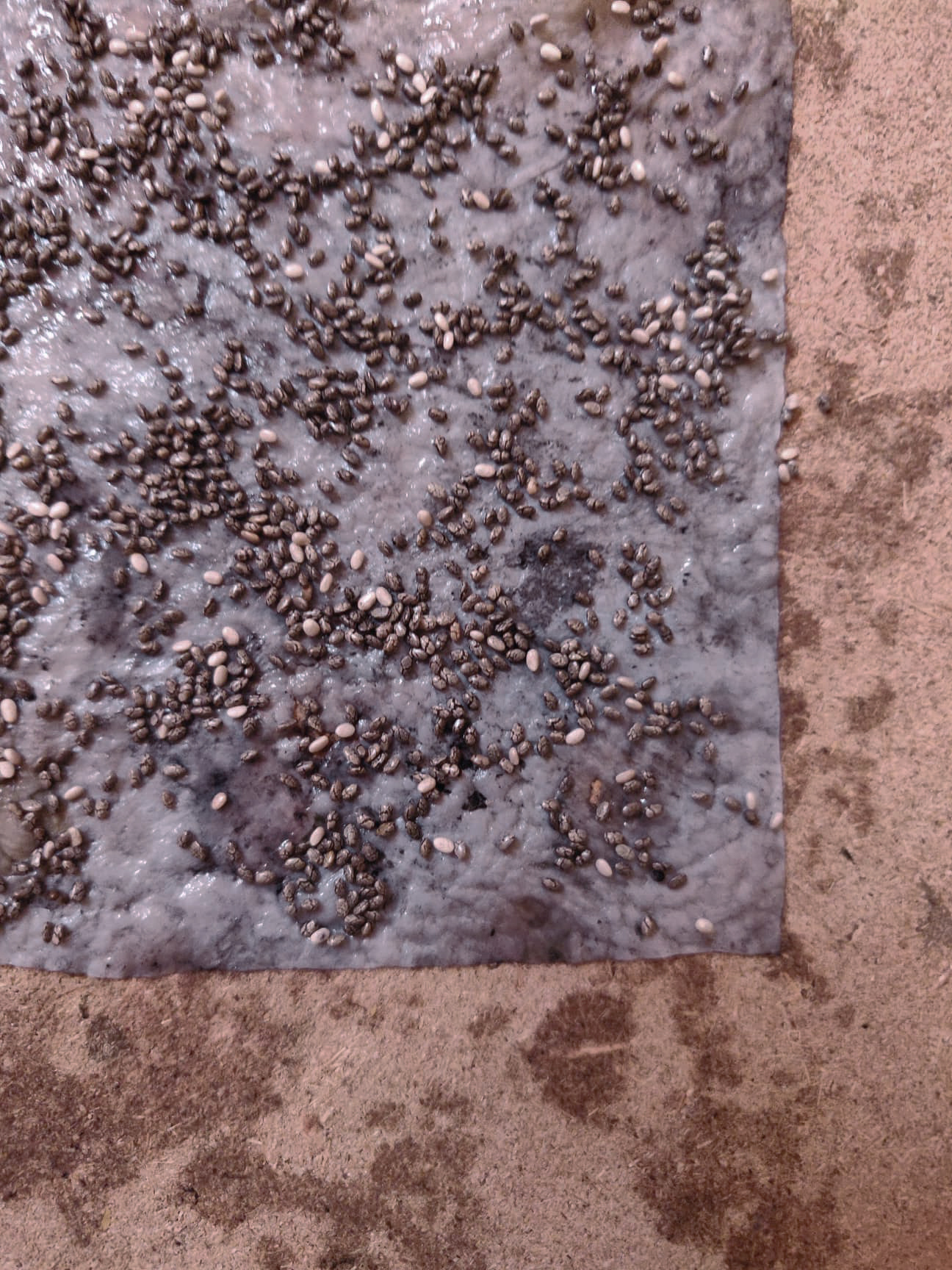
Seed treatment
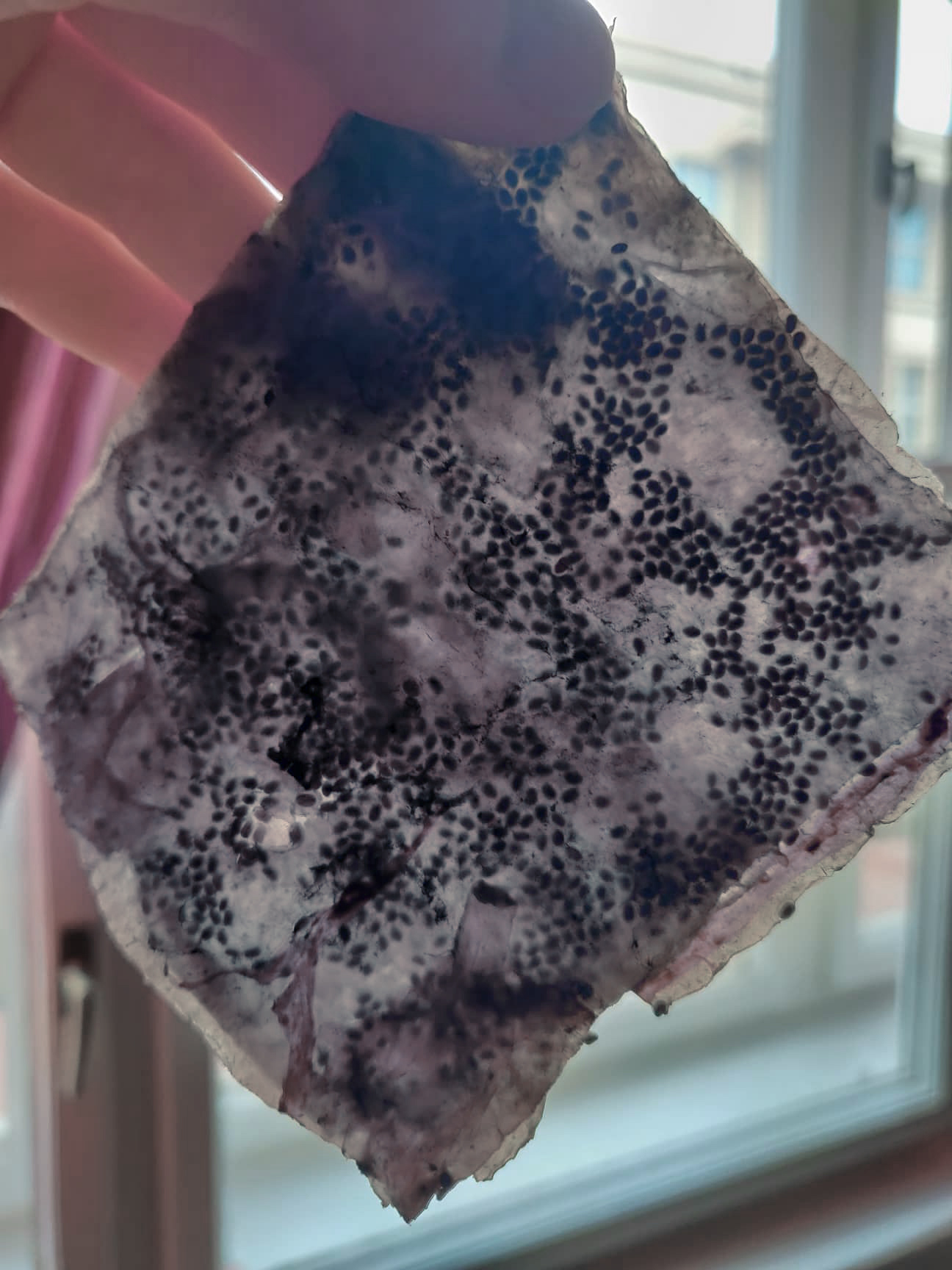
Seed patterns
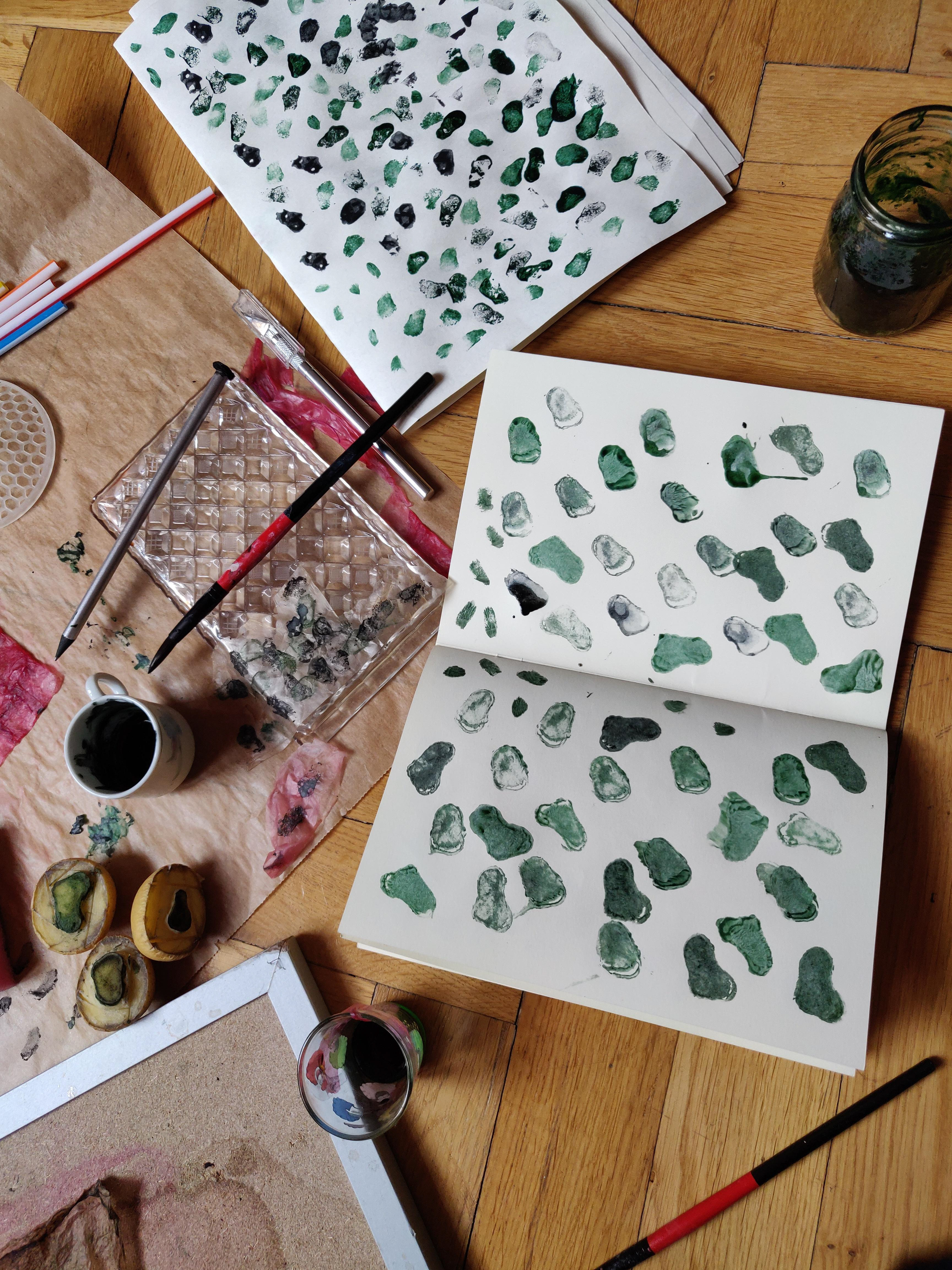
Potato prints
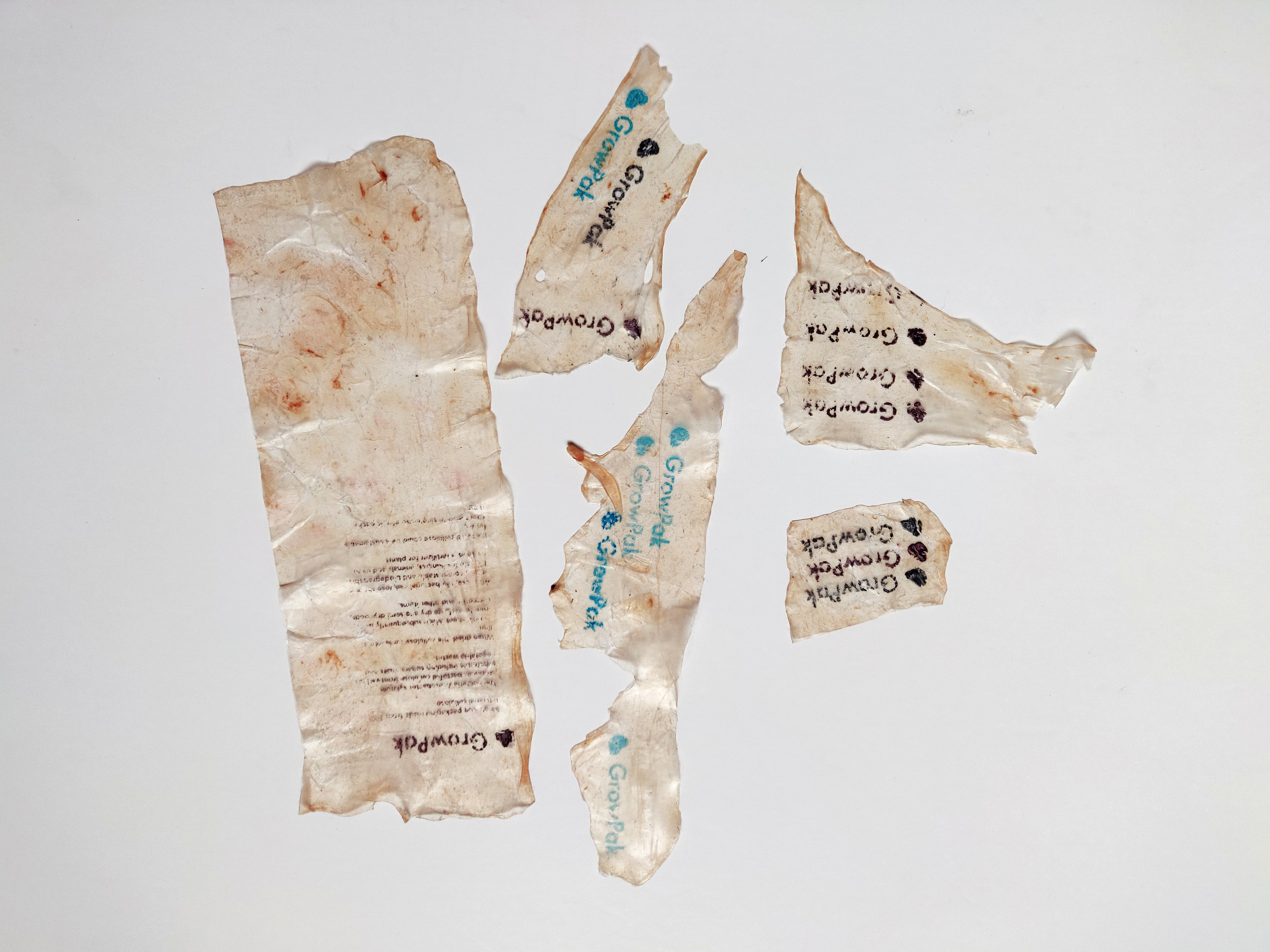
Printing with ink
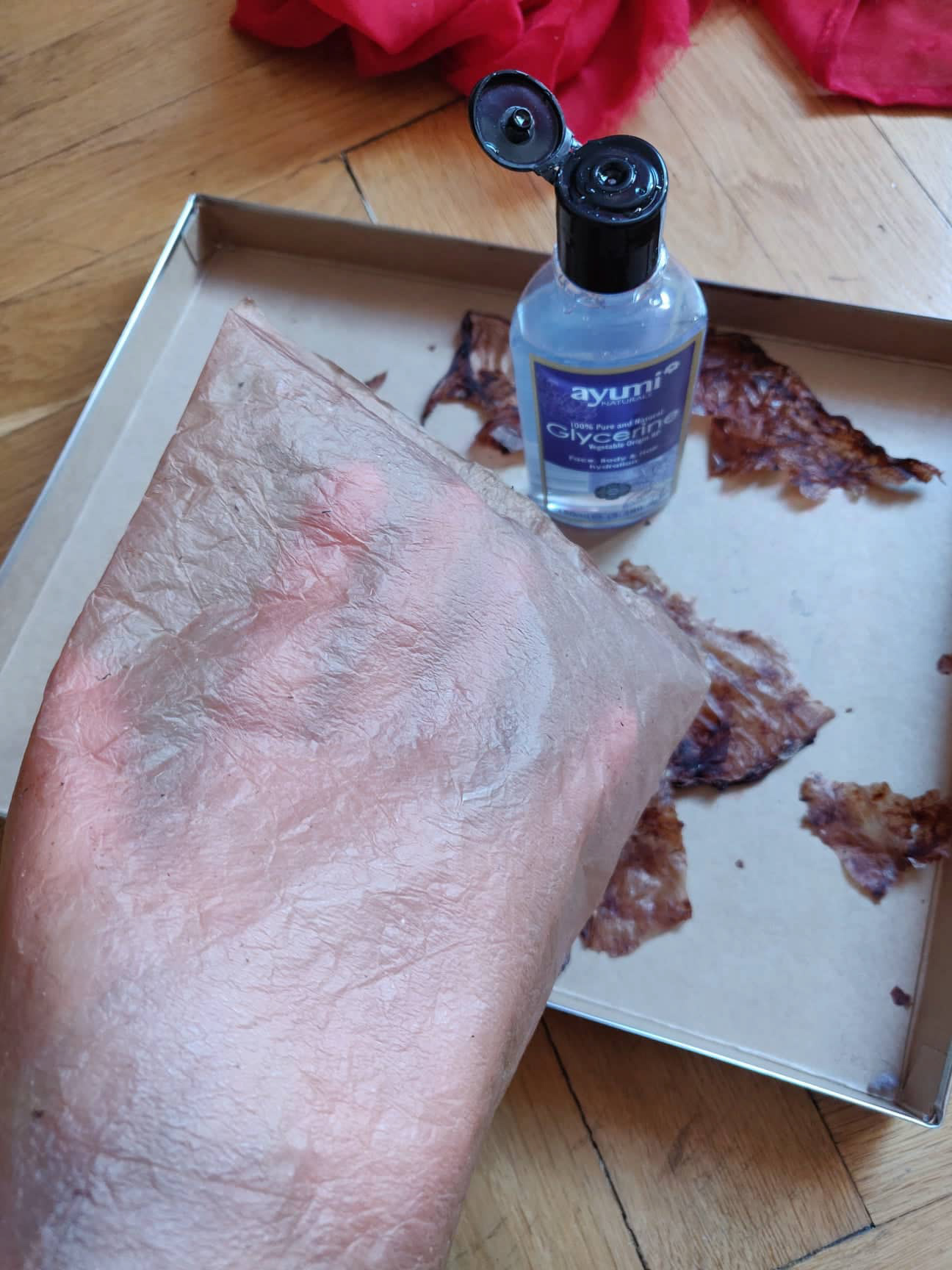
Glycerin treatment
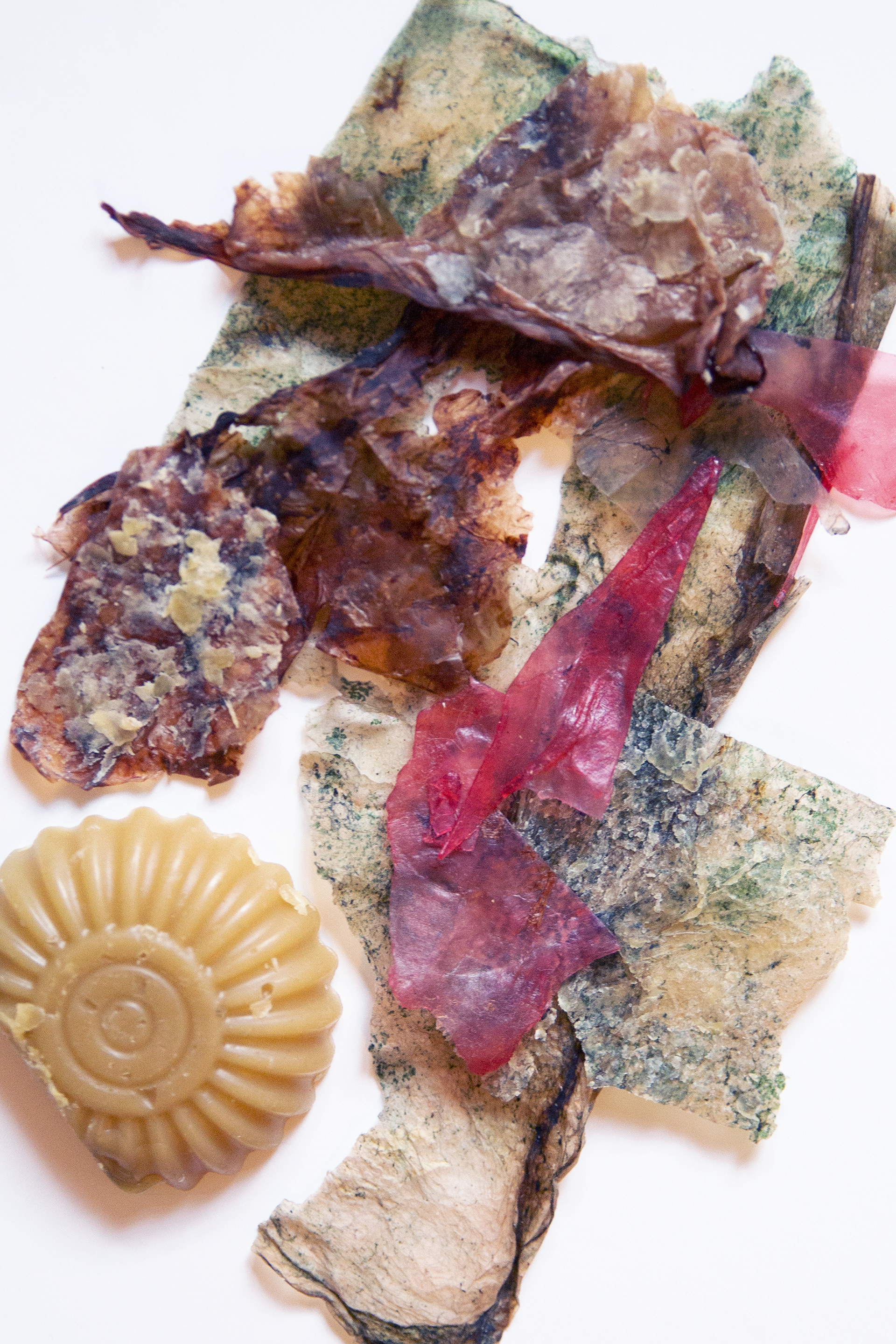
Beeswax treatment
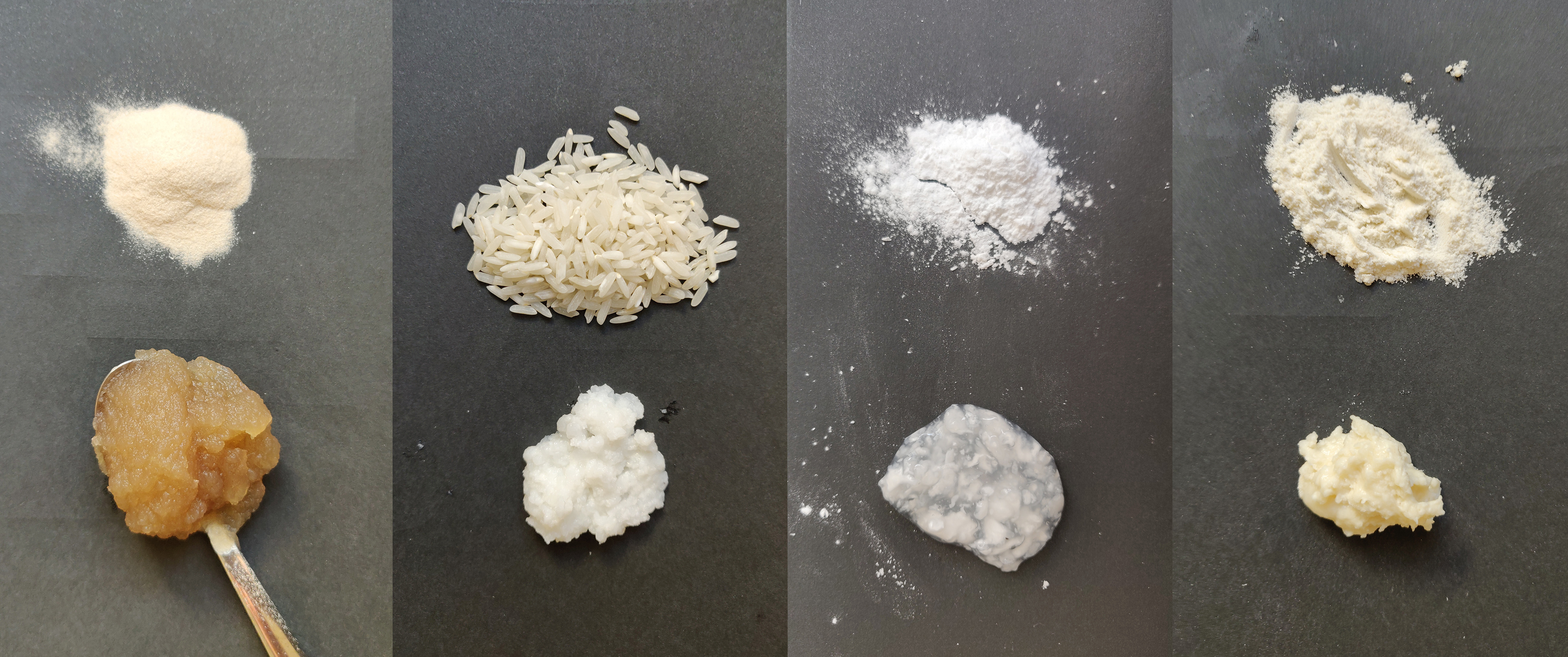
Sealing techniques (agar, rice, starch, flour)
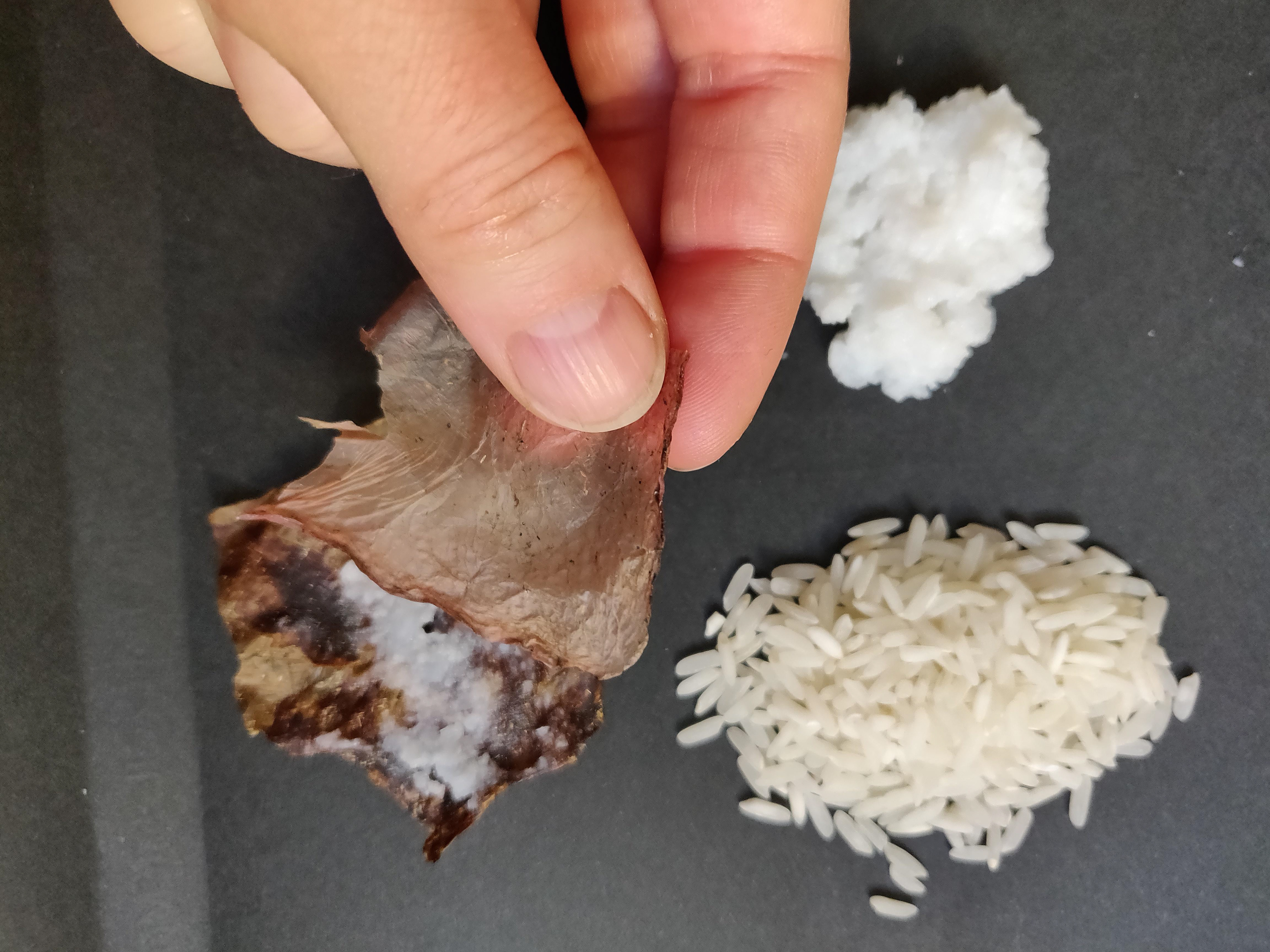
Sealing
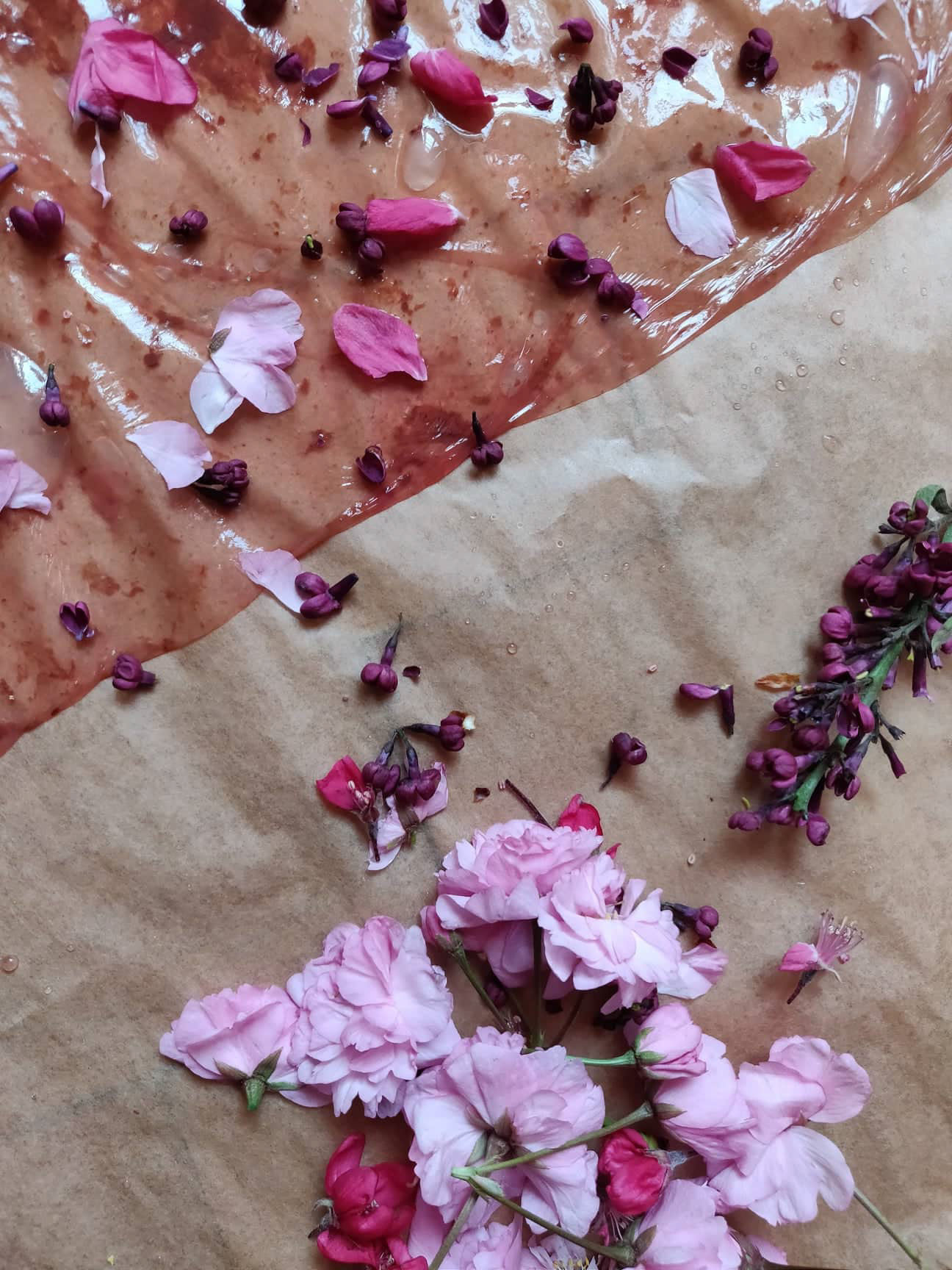
Flower patterns
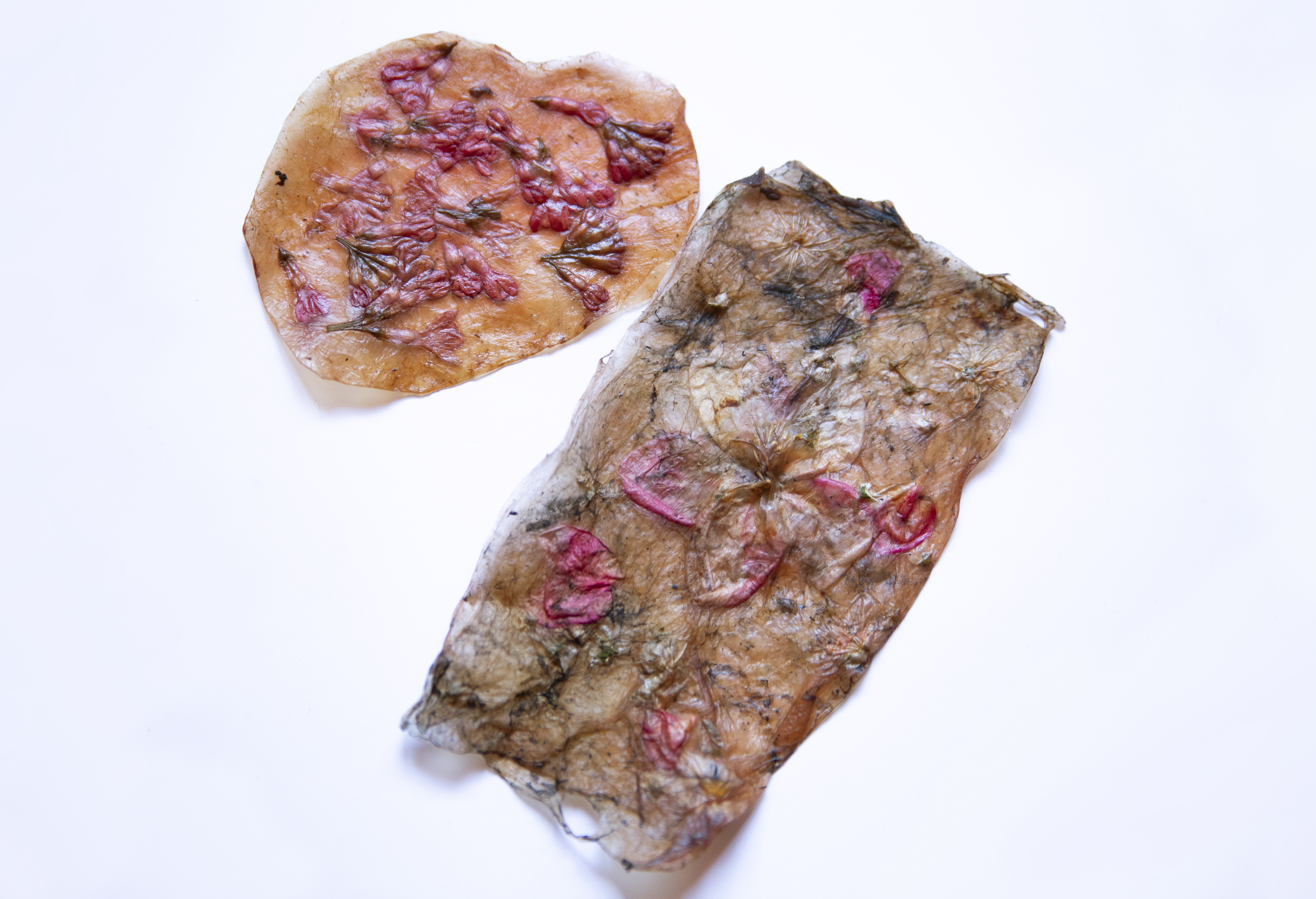
Flower patterns
Application
Due to its many unique properties, bacterial cellulose has a wide variety of current and potential future applications. It has been used in the food industry, the medical field, commercial and industrial products, and other technical areas. Bacterial cellulose is a versatile structural material, allowing it to be shaped in a variety of ways to accommodate different uses.
Recently, active research has been conducted on the properties of bacterial cellulose and its potential to become an alternative to plastic, animal leather and paper due to its high purity, durability and microfibril structure. So, for my final project, I decided to research the possibilities of using bacterial cellulose as an alternative material to single-use plastic packaging.
I decided to go for single-use packaging as I believe that it will always be a part of the packaging industry. First of all, we live in a fast-paced, throw-away society. Instead of trying to fundamentally change society, future solutions can adapt to it. Change in society will follow naturally. Instead of banning single-use packaging completely, the industry needs to find ways how to replace plastic with non-toxic, biodegradable, and sustainable alternatives that are safe for the humans, animals, and the earth. Second of all, our hygienic standards are quite high. We do not want bad bacteria in our food or cosmetics - bacteria that can make us sick. This is why single-use packaging is indispensable for modern society. Moreover, the beneficial side effect of my concept is, that food waste management is taken care of as well. Two birds killed with one stone.
Once I grew and dried several cellulose sheets, I could finally start to form them into a variety of single-use packaging shapes. Because I grew the cellulose in differently sized containers, with different natural dyes, and different growth durations, every packaging item is unique.
I believe that biologically grown single-use packaging has the potential to become a viable alternative to plastic.
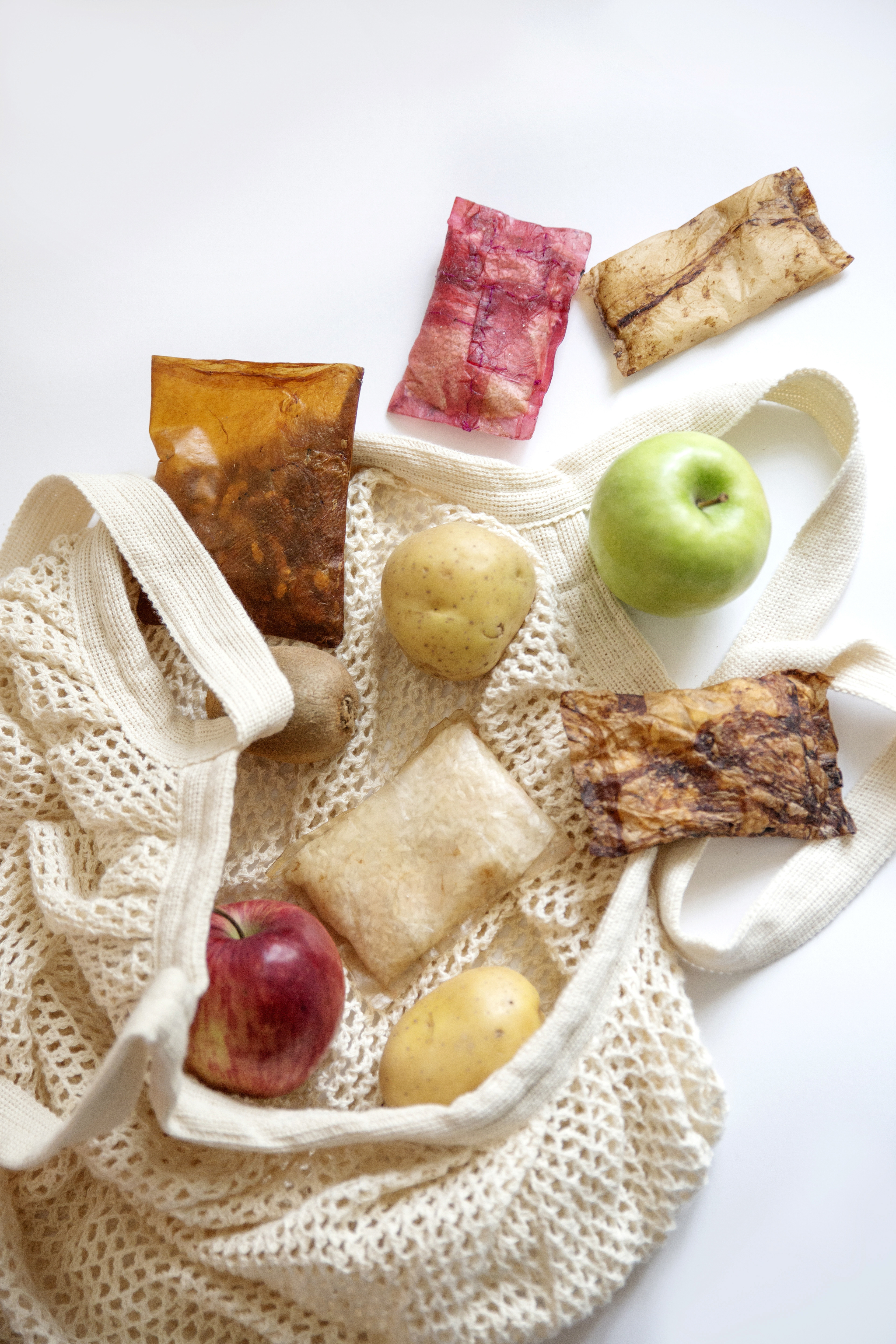
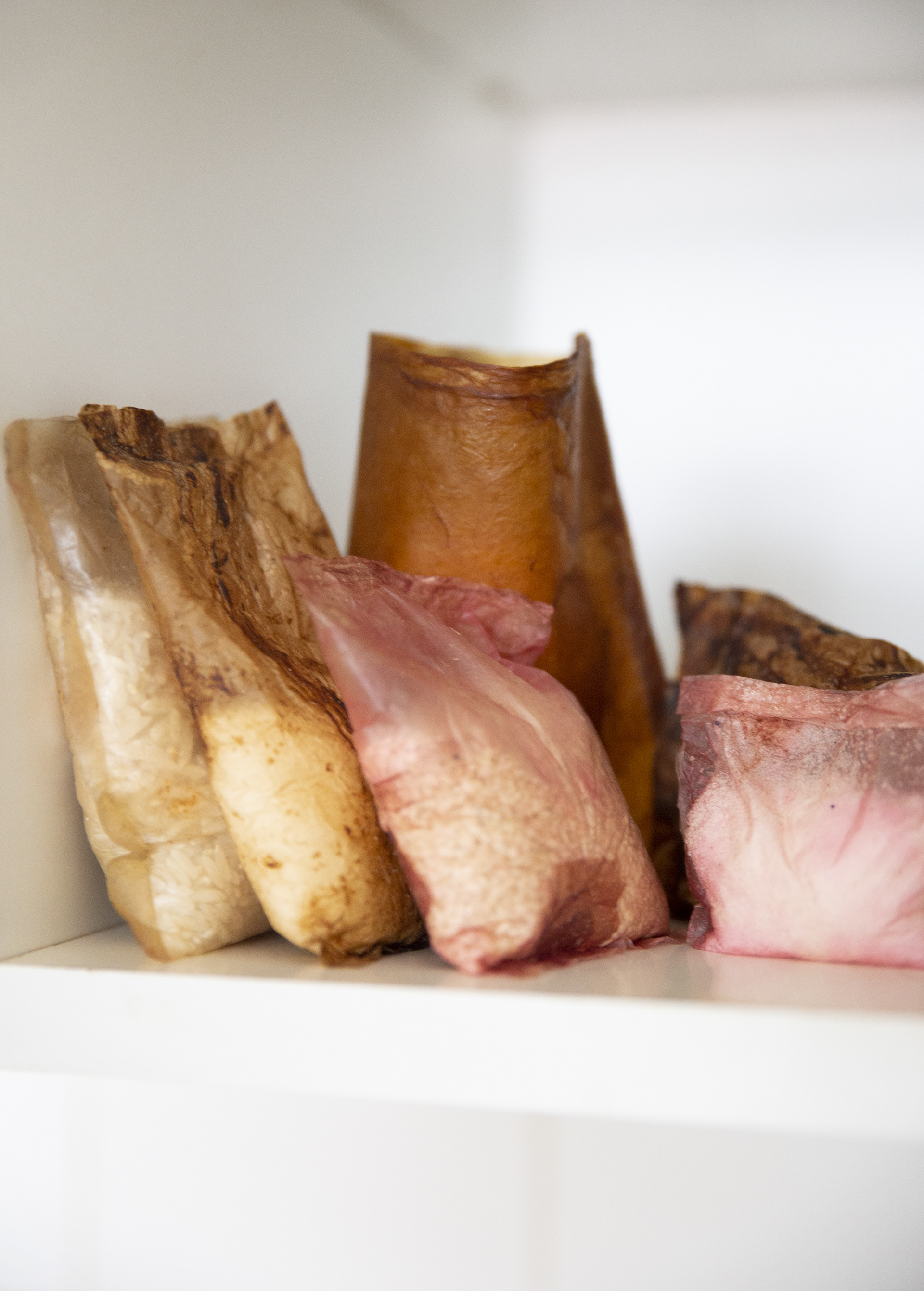
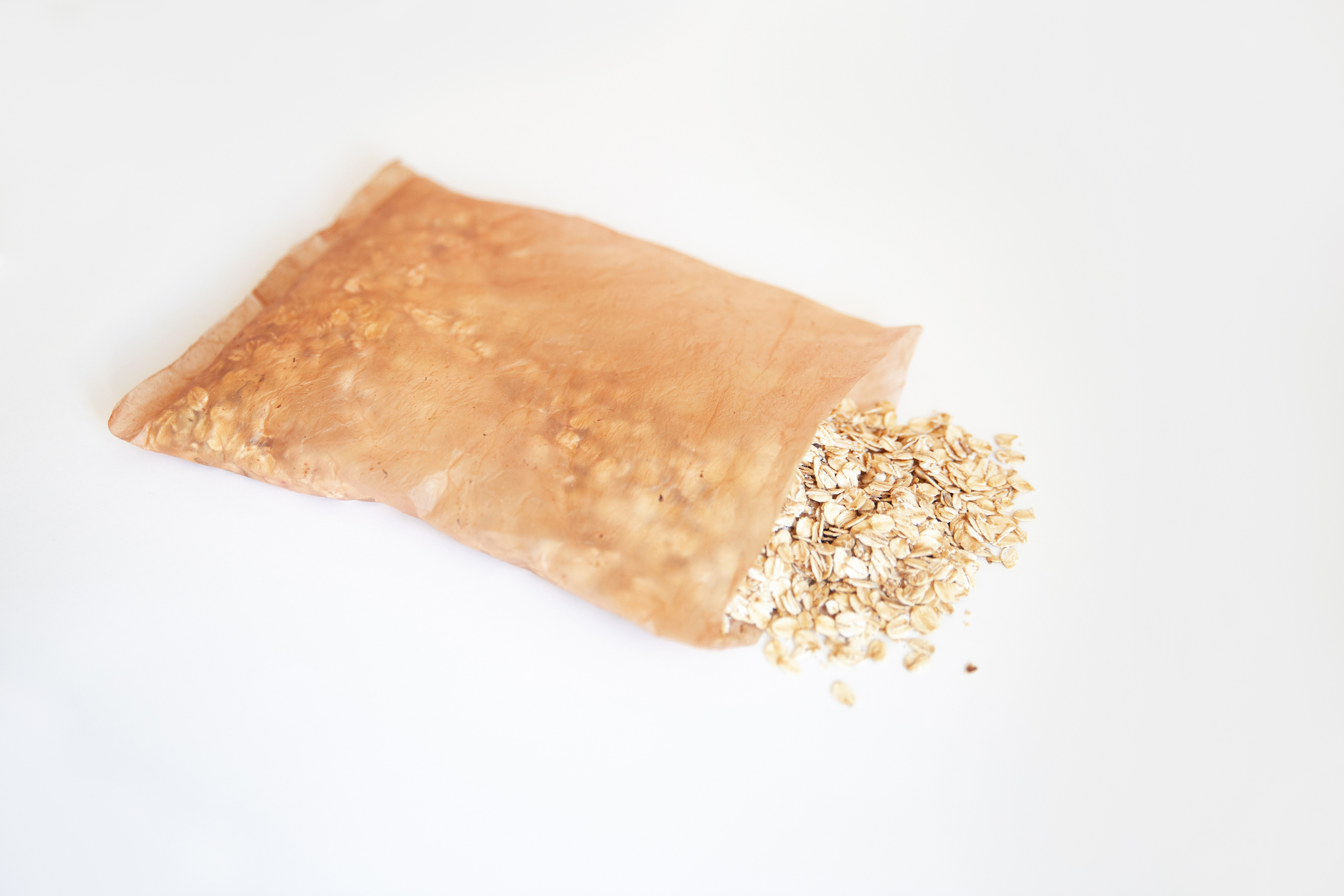
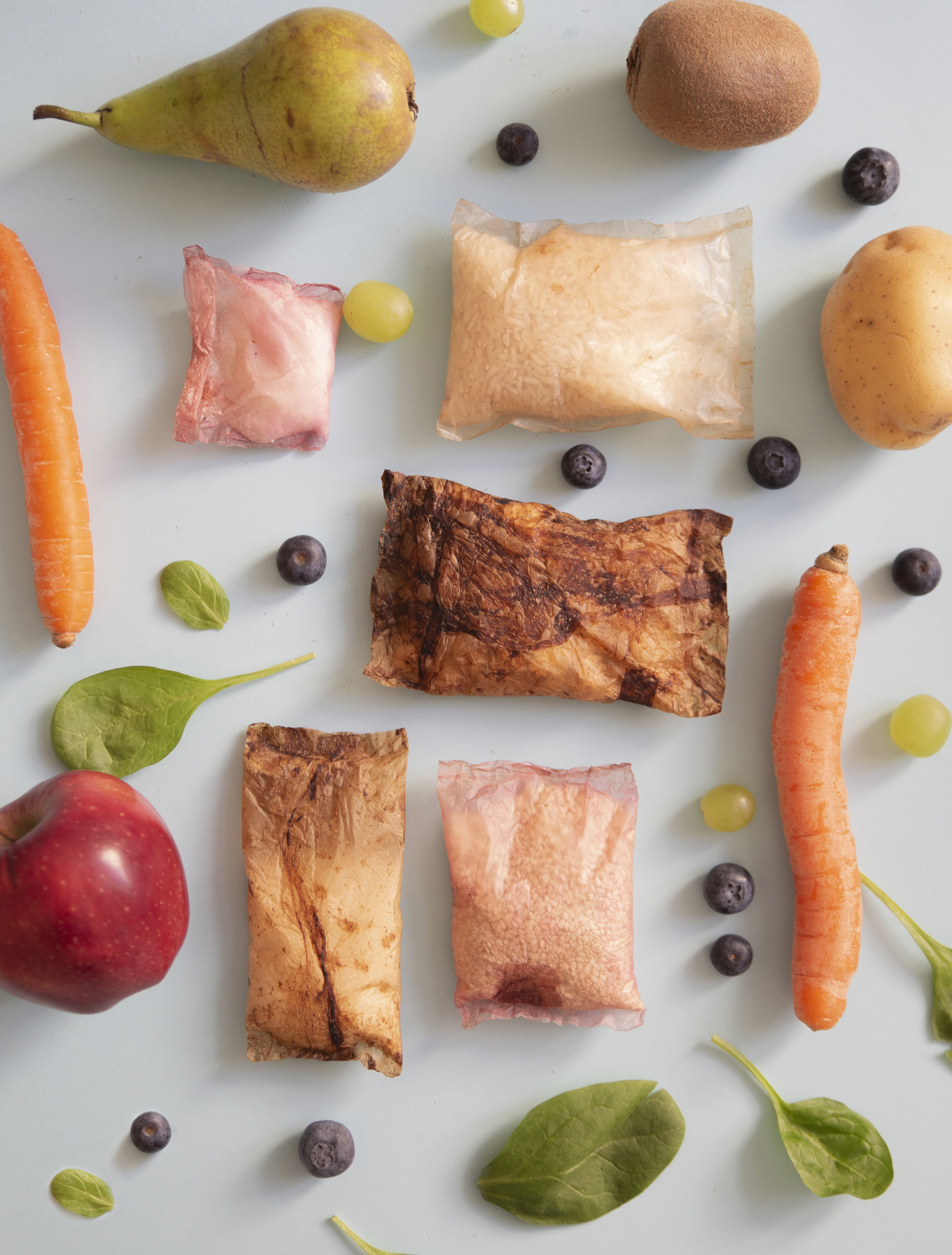
Future Prospects
Based on the experiments with bacterial cellulose, this chapter includes my ideas and exploration on the future prospects of biologically grown packaging, how this concept could work on an industrial level, and how it would fit into the circular economy dynamic.
By using organic food waste or surplus goods from the regional food, agricultural and wine industry, bacterial cellulose can be grown regionally with minimum environmental impact. This process does not require the felling of trees because bacterial cellulose can be grown vertically by stacking up the containers in which the cellulose grows. Furthermore, the use of harsh chemicals is unnecessary as the process is completely natural (fermentation). By keeping the production regional, CO2 emissions are decreased as it eliminates the need to ship or transport raw materials around the globe. Moreover, the production of bacterial cellulose packaging obviates the need for using mineral oil and natural gas - two integral components of the plastic production.
Besides being a non-toxic and biodegradable alternative to single-use plastic packaging, the production of bacterial cellulose contributes to a better organic waste utilization and generally tackles the issues around food waste management by processing regional surplus goods and organic food waste. All in all, this concept can make a significant change by contributing to a more effective circular economy dynamic.
Conclusion
The whole project was a trial-and-error experiment. More than two months of repeated, varied attempts which I continued until they succeeded. Until the end, I was in a fever of excitement and impatience. My biggest fear was to be unable to produce viable prototypes that will prove my concept. In the beginning, many of my planted cellulose sheets did not turn out the way I expected. However, this was mostly due to great impatience and insatiable curiosity. It took me a while to learn how to put together the right mixture and grow a nice cellulose sheet that is usable as a functioning packaging prototype. And I am still learning more with every new cellulose I am starting. Thus, the experiment is not over, but my final project is.
From the beginning, there were some issues that I had to take into account. For example, the temperature of my room was changing constantly. But the cellulose grows best in a consistent temperature. On an industrial level, this does not pose a problem as it is possible to maintain a certain temperature for optimal growth. Another issue was that I did not have access to certain tools, resources or methods available on industrial level, naturally.
Thus, I tried to find accessible substitutes that can represent my idea and the bigger picture behind it. All things considered, I think that I successfully proved my concept.
Of course, this concept cannot be implemented overnight as it has to undergo more tests and experiments. Moreover, ways must be found to make the production efficient and keep manufacturing costs low but the quality high and pure. But, overall, I believe that biologically grown single-use packaging has the potential to become a viable alternative to plastic packaging.
To make the research process available, visible and understandable, I collected all the imagery and research and put it together to create a documentation book. If you are interested in reading the book, please scroll down to the end of the page.
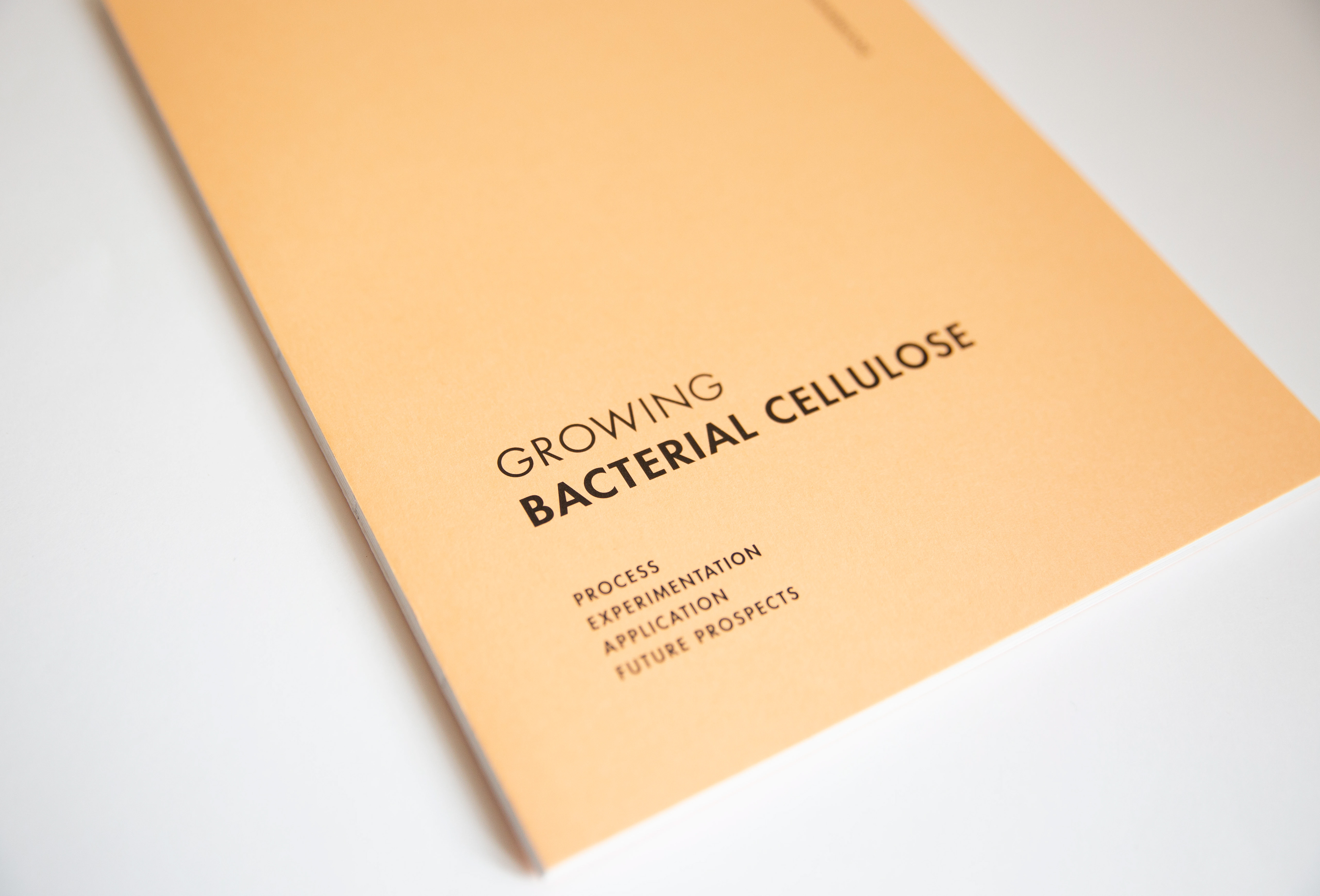
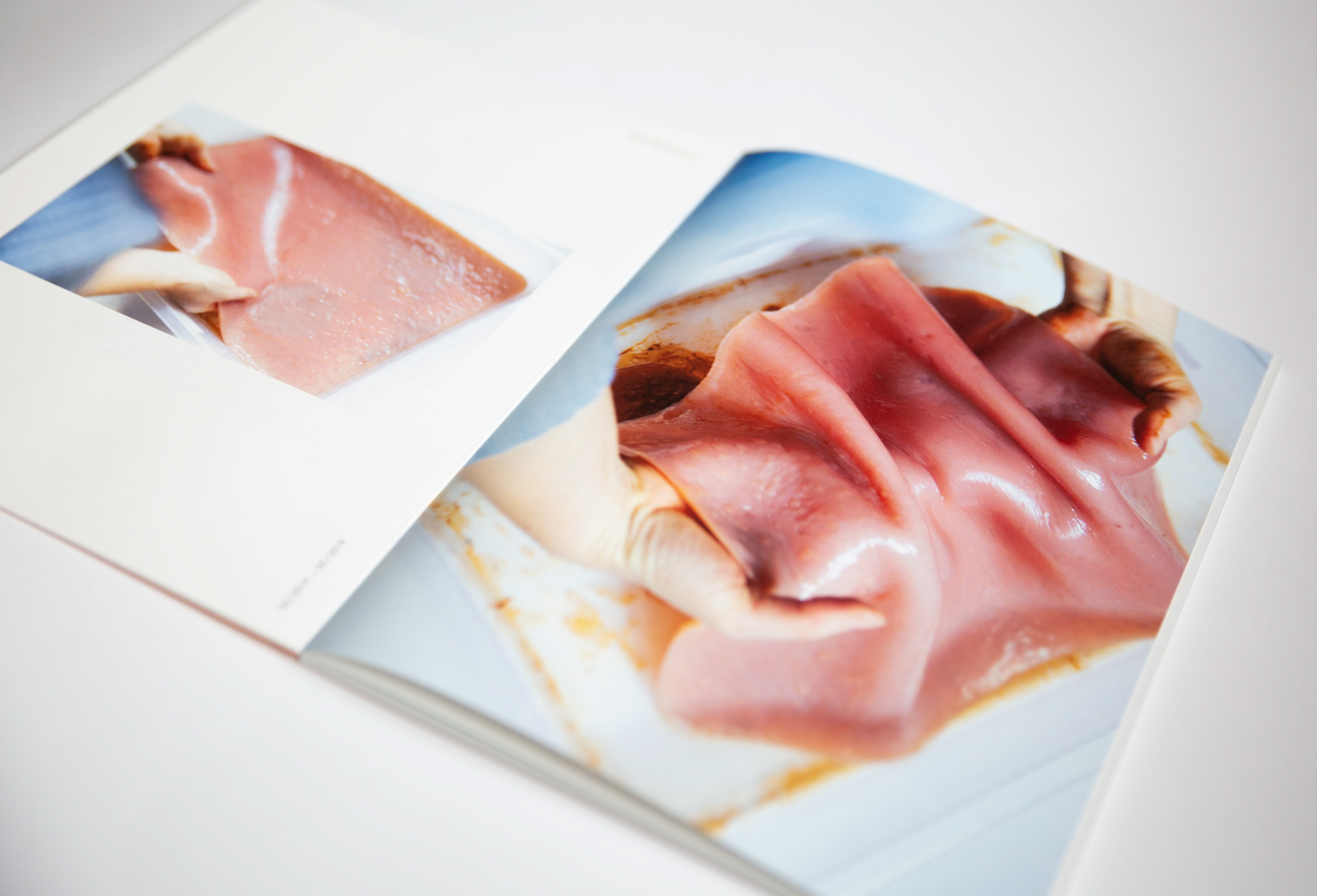
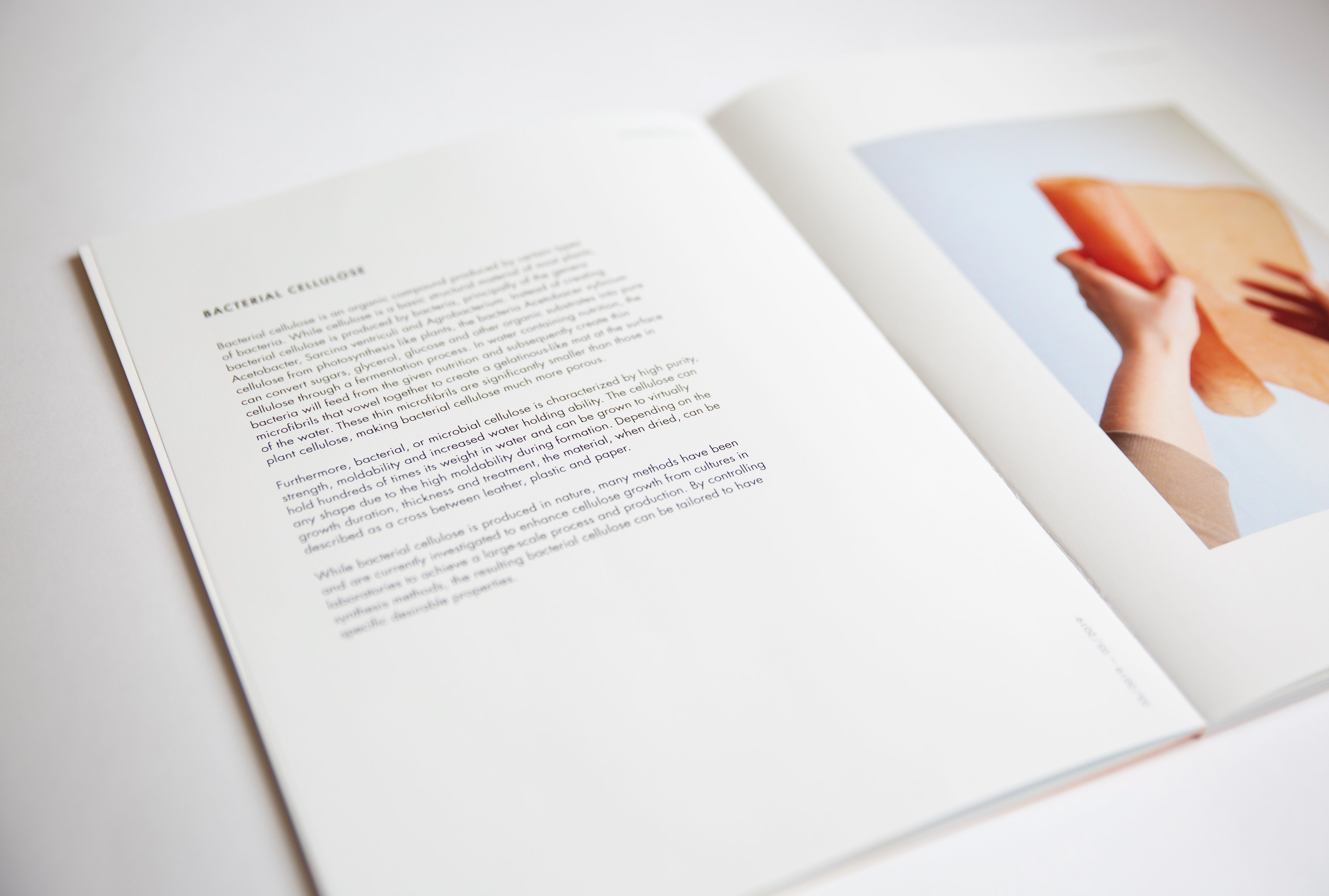
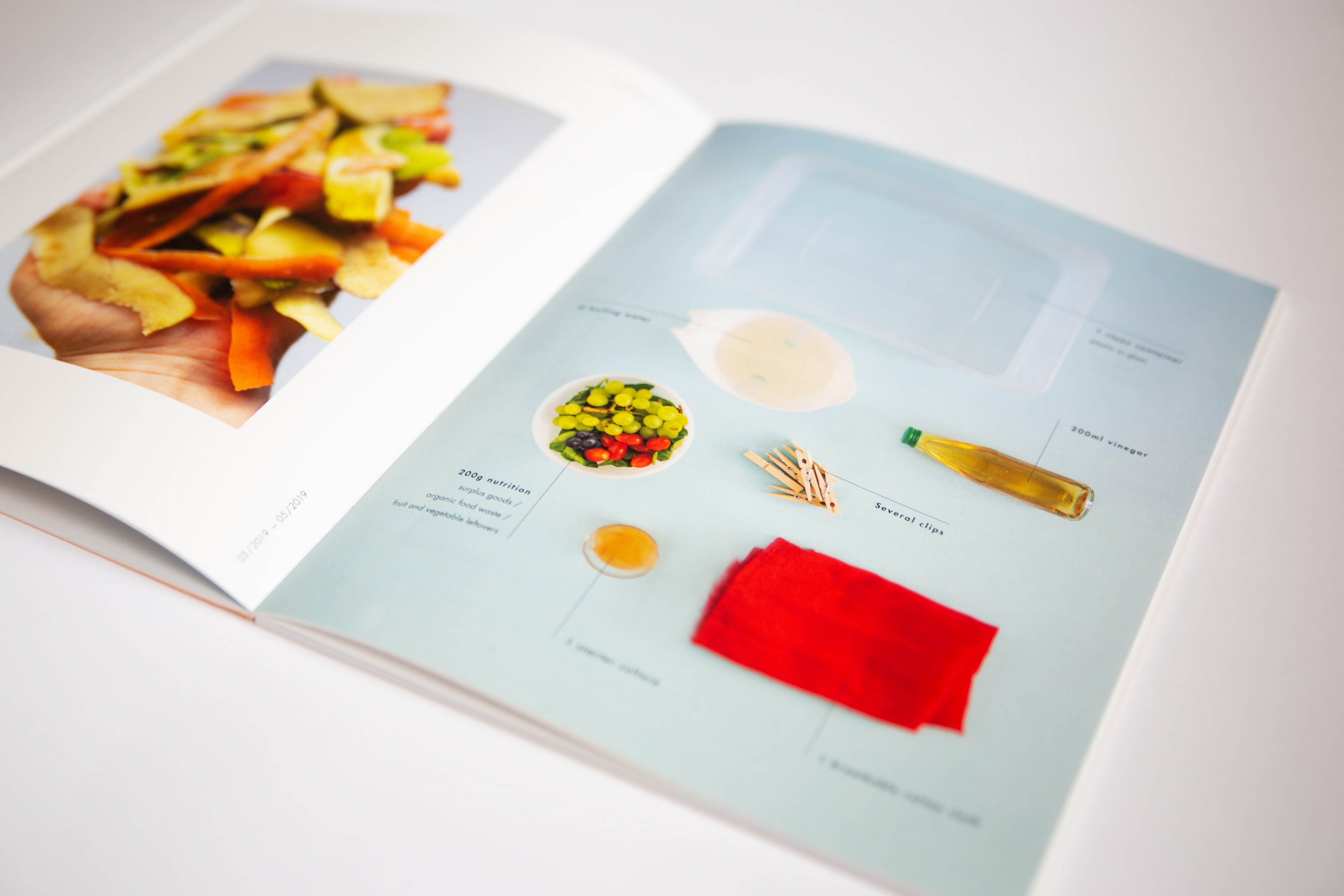
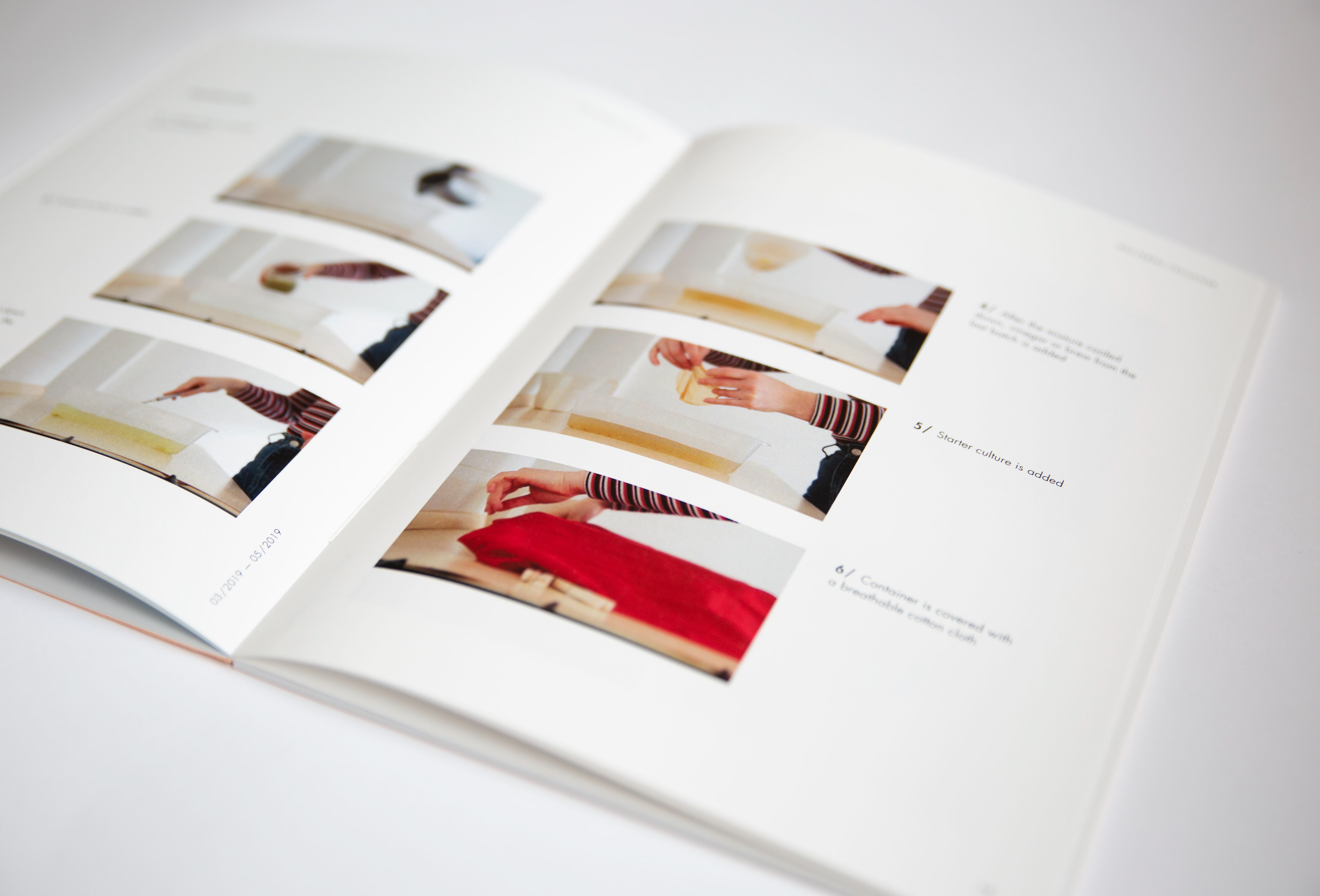
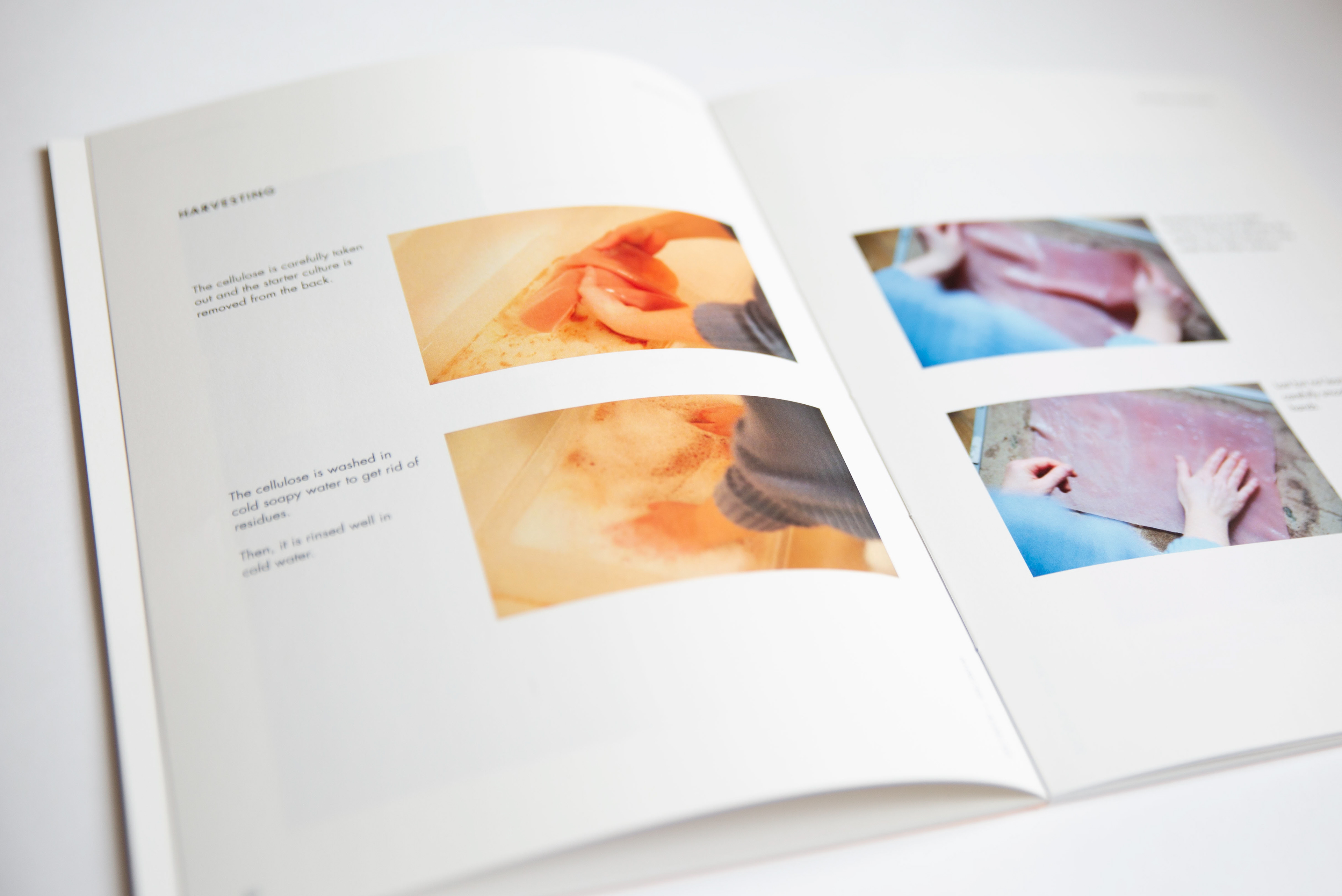
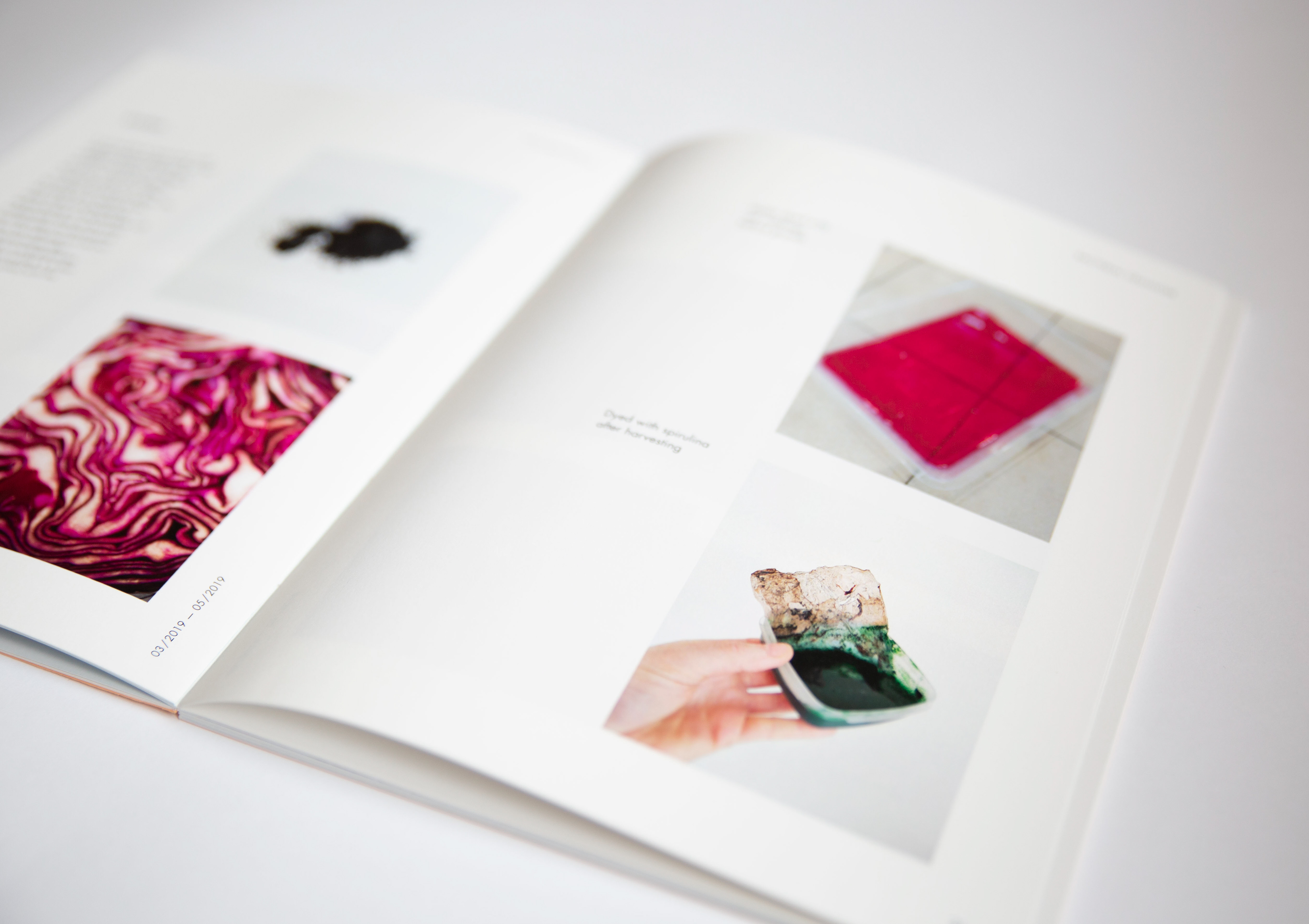
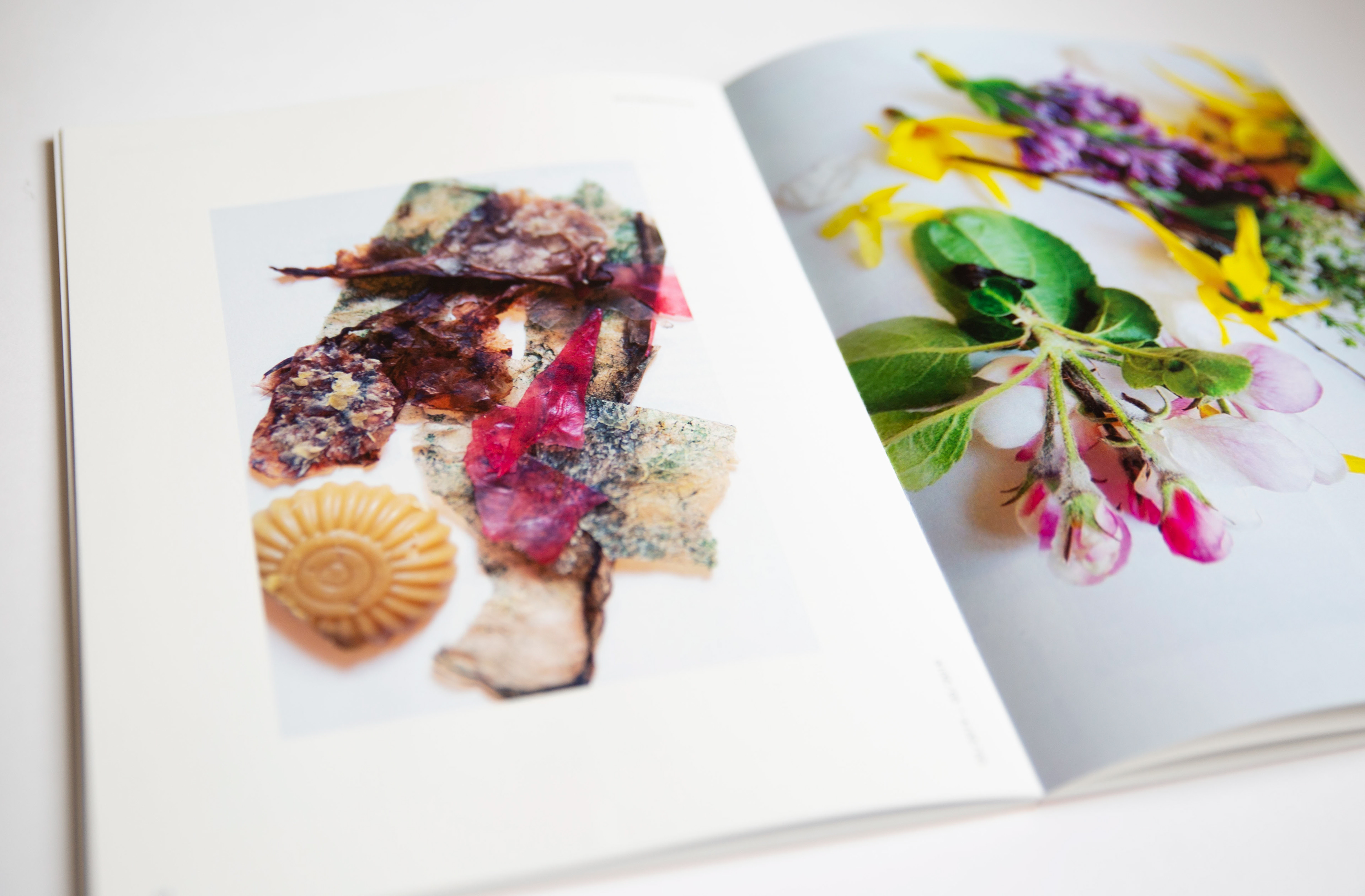
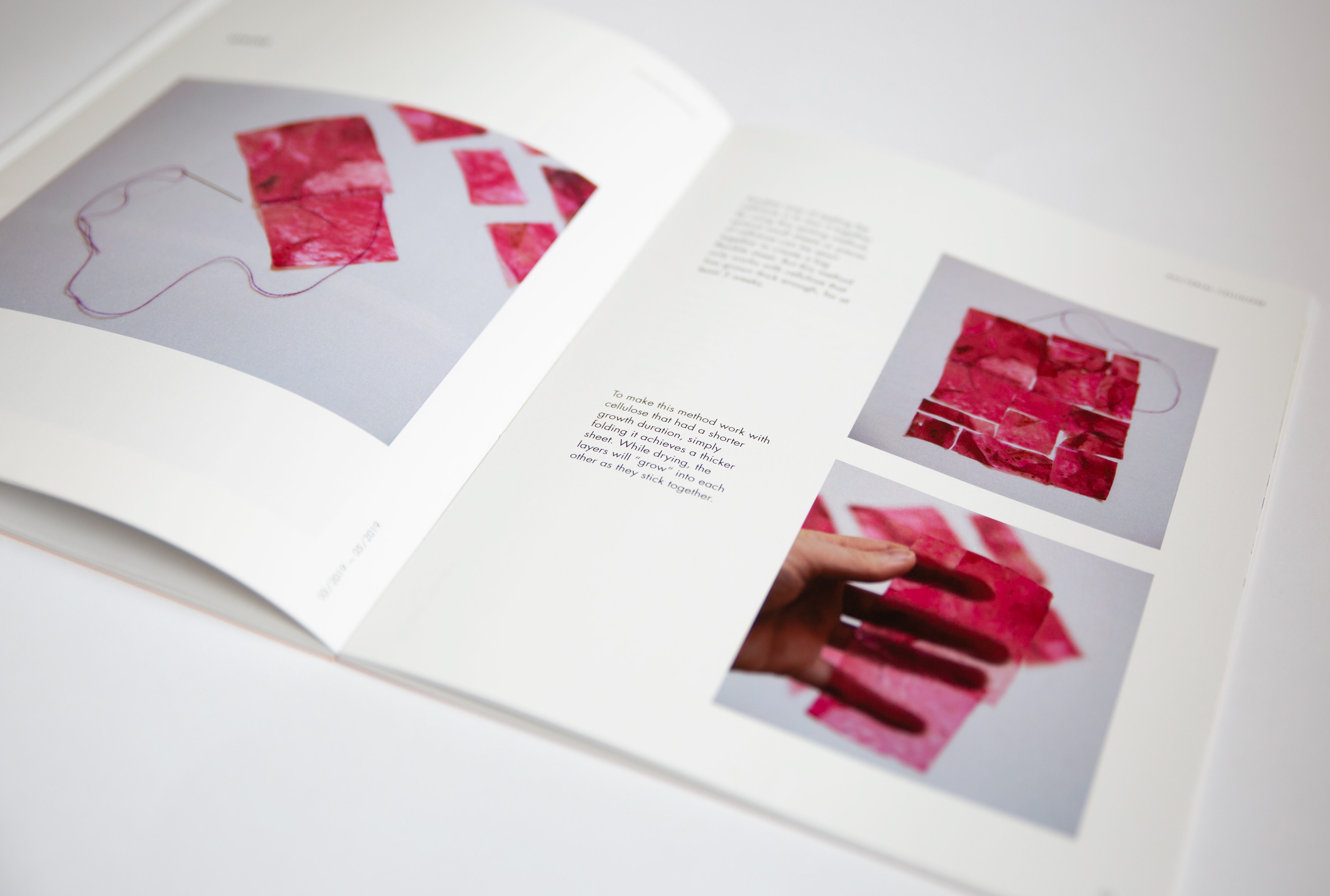
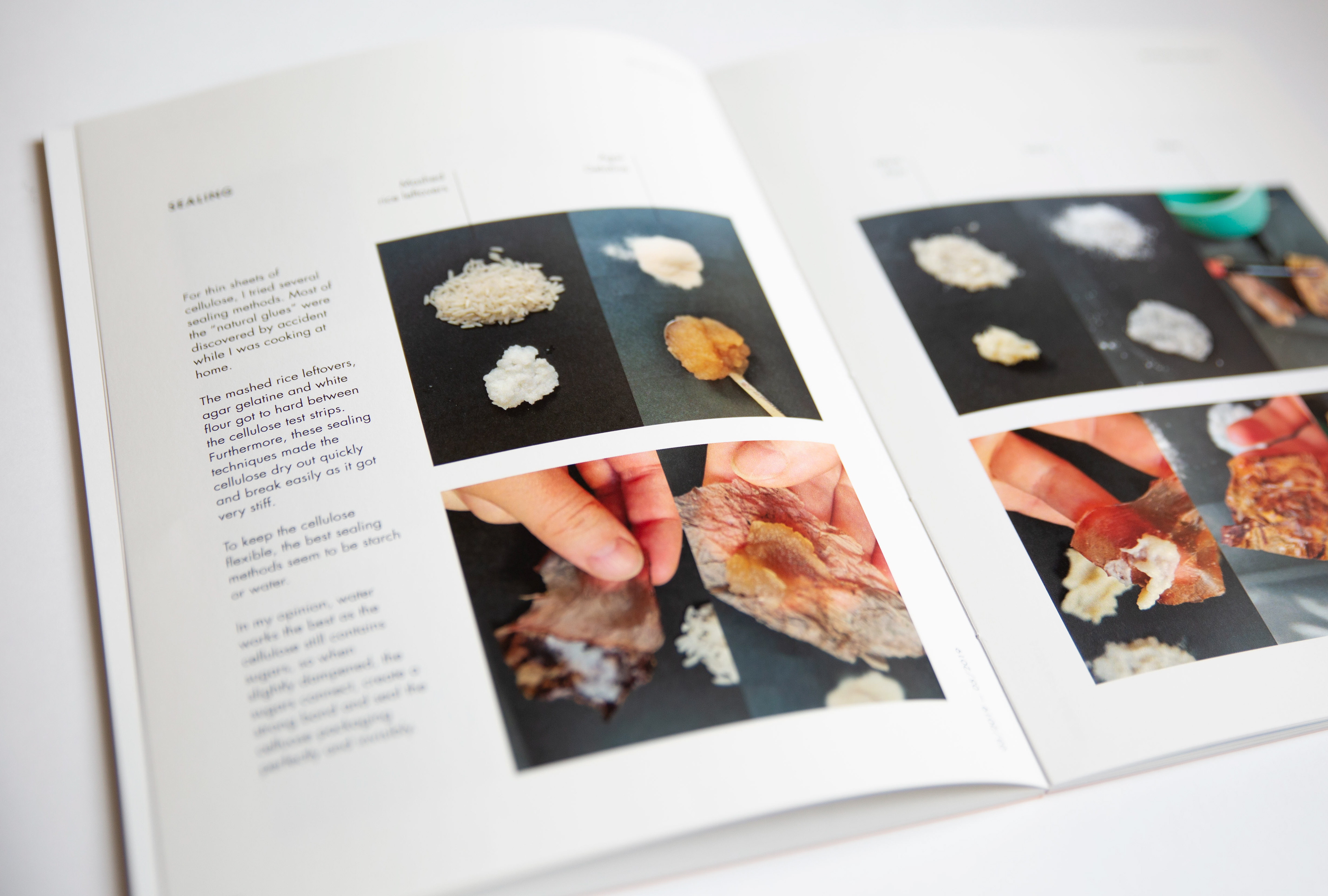
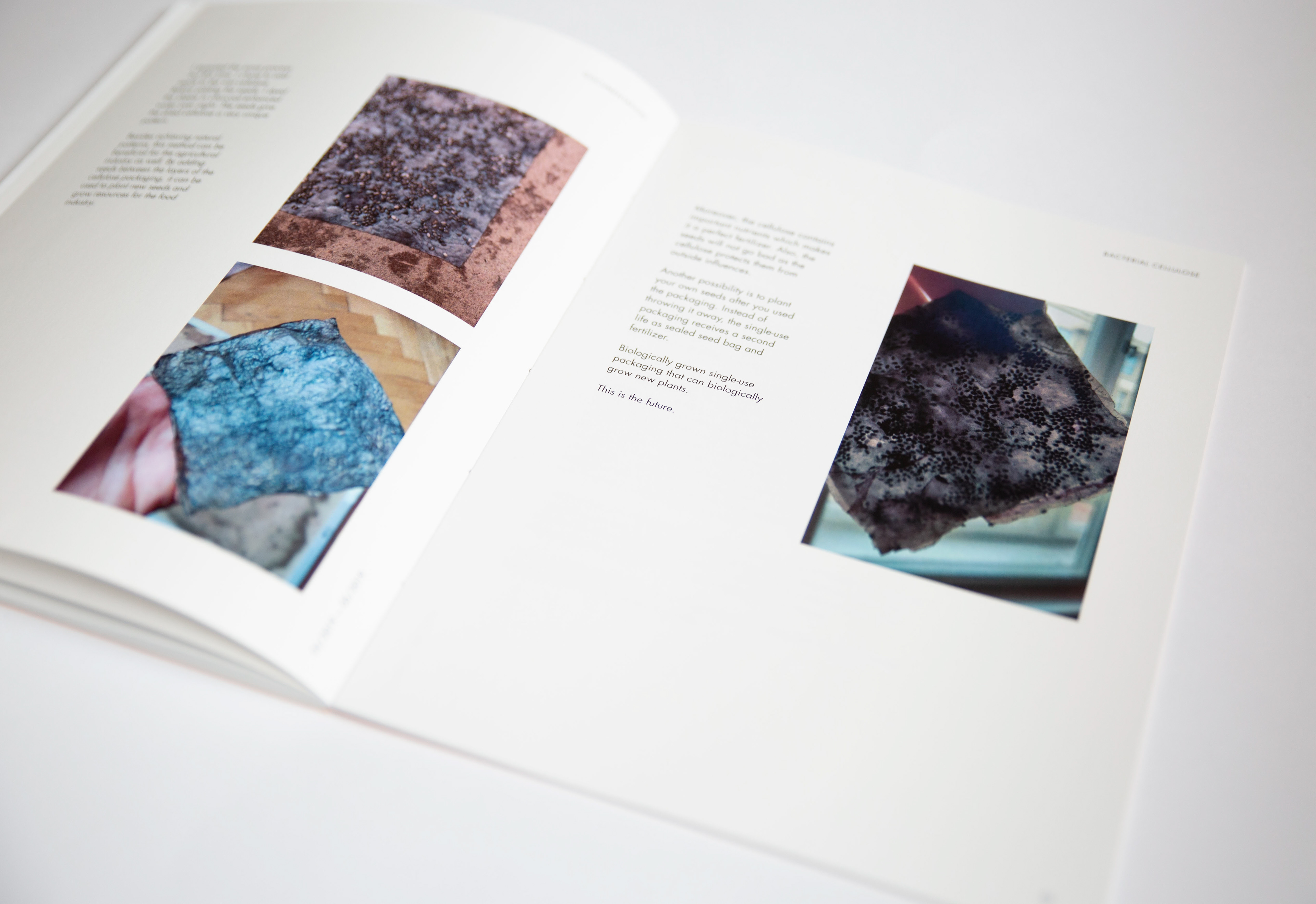

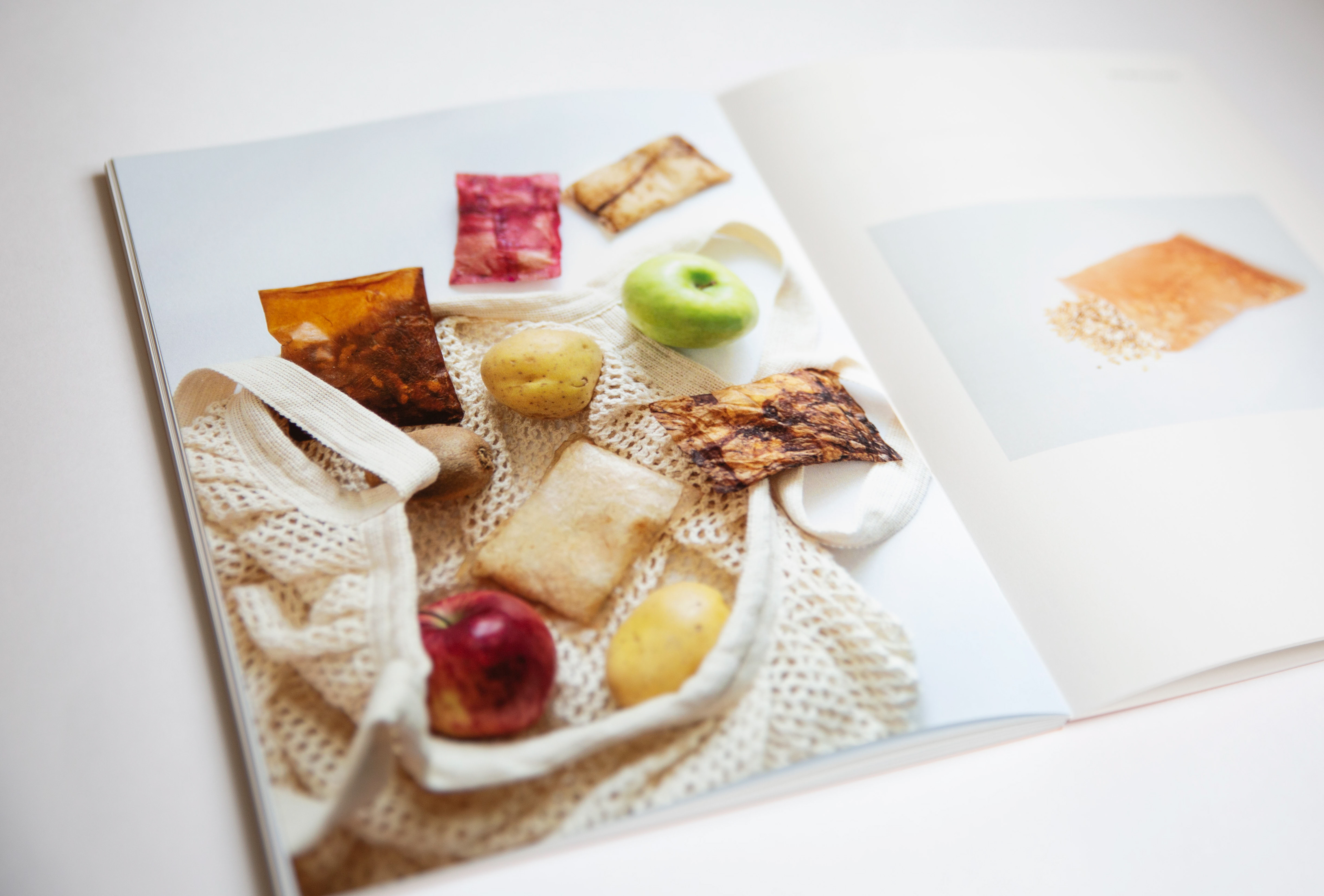
May 2019 | Final Exhibition
Impressions from my project presentation at the final exhibition of School of Art & Design, Prague College, Czech Republic. 20 graduates presented their final design projects from the 23rd of May until the 25th of May.
To make the project understandable and the process accessible for visitors, I showed some real life SCOBY, cellulose layers in the making, fruit and vegetable waste, dried cellulose samples and how they were made, the cellulose packaging, and the documentation book.
